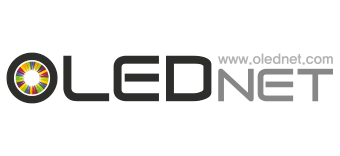UBI Research Lowers Forecast of OLED Market for ≥ 55 inch TV by Approx. 20-30%
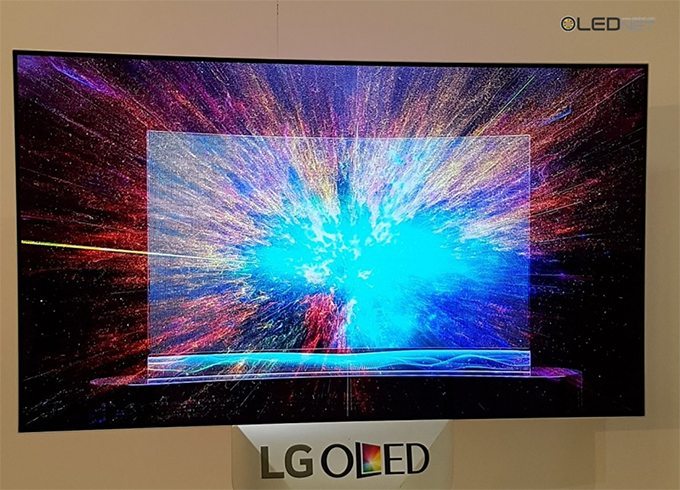
55inch LG OLED TV

55inch LG OLED TV
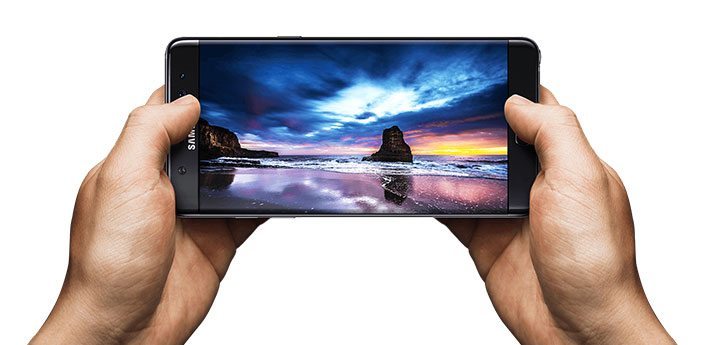
OLED Smartphone Galaxy Note7(Source = Samsung)
Hyunjoo Kang / jjoo@olednet.com
OLED smartphone market is growing prominently in the global market. Q2 2016 global 4~6 inch OLED panel shipment increased by 72% compared to the same period in 2015.
According to investigation by UBI Research, the shipment of OLED panel for smartphone in Q2 2016 is 88 million units, an increase of 72% compared to 51.2 million units in Q2 2015. This rapid growth of 4~6 inch OLED panel is led by key smartphone companies in Korea and China.
Samsung Electronics, a leading representative of OLED smartphone market, is expanding OLED smartphone products. The company recently announced flexible OLED panel equipped Galaxy Note 7, a first for a Galaxy Note series.
Not only Samsung, but Chinese companies are leading the market growth expanding the OLED application. In particular, Huawei’s smartphone business growth is significantly affecting OLED market. According to a market research company IDC, the global smartphone sales of the same period is only 3%. However, the sales of Huawei, possessing numerous OLED smartphone products, increased by 25% in H1 compared to the same period in 2015.
According to UBI Research, the total revenue of Q2 2016 global smartphone OLED panel market is USD 3,160 million, approximately 27% increase compared to the same period in 2015.
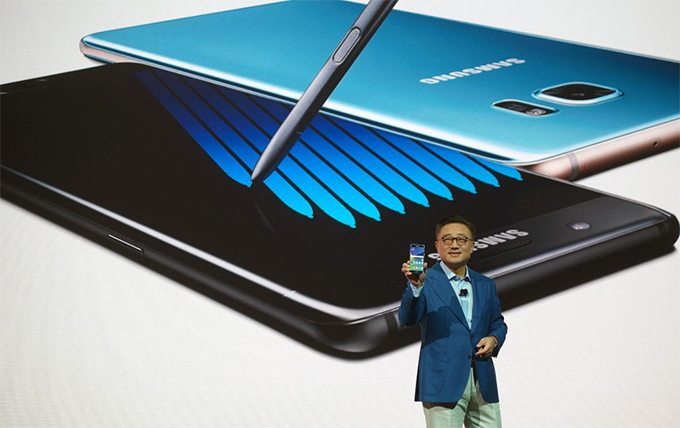
Flexible OLED Equipped Smartphone Galaxy note 7
Hyunjoo Kang / jjoo@olednet.com
Global smartphone OLED panel shipment is expected to exceed 300 million units for the first time in 2016, and exceed 1,000 million units in 2019.
On 16 August, UBI Research forecast that the global shipment for 4-6 inch OLED panel for smart phone is expected to be 318.8 million units, approximately 27% increase from 2015.
From then on, 2017 is estimated to record 505.3 million units, 902.5 million units in 2018, 1,170.2 million units in 2019, and 1,379 million units in 2020.
UBI Research forecast that rapid growth of flexible OLED for smart phone in particular will lead the total smart phone OLED shipment increase. According to UBI Research’s investigation, rigid type of smart phone OLED shipment is expected to dominate the total smartphone OLED shipment in 2016 with 78%.
However, in 2018, flexible OLED panel is estimated to record 56% and exceed rigid. The market share of flexible is expected to increase to 62.3% in 2019, and 67% in 2020; it is forecast to be the main force within the smartphone OLED market.
IHS, another market research company, also forecast that the smart phone OLED panel shipment will exceed 300 million units for the first time in 2016. IHS estimated the smartphone OLED shipment to be 366.88 million units in 2016 and 663.66 million in 2019, and showed some difference from UBI Research.
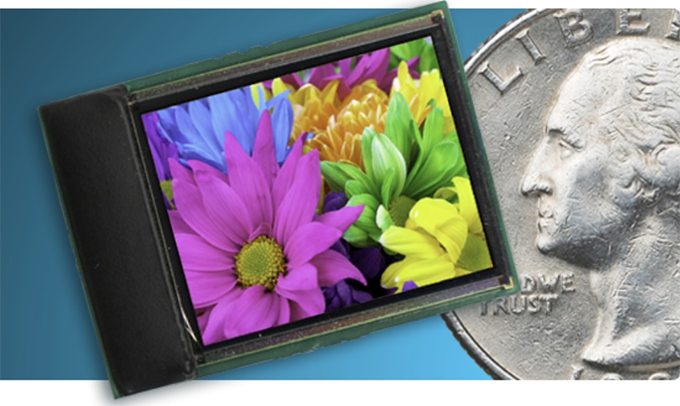
eMagin`s Microdisplay (Source = eMagin)
Hyunjoo Kang / jjoo@olednet.com
eMagin, an OLED microdisplay company which is a technology that is needed for VR device, AR device, medical device, etc., showed 3.8% fall in H1 2016 sales compared to the same period last year with net loss of USD 2.404 million.
According to eMagin’s Q2 2016 performance results announced on 11 August, the company recorded sales of USD 5.5 million in sales, a decrease of approximately 11% compared to the same period in 2015.
As such, eMagin’s total sales in H1 is USD 12.534 million, approximately 3.8% less than H1 2015. While the product sales did not significantly differ, the government contracts suffered compared to the same period last year. However, the company recorded profit of USD 1 million in licensing revenue which did not occur in H1 2015. eMagin holds VR headset related intellectual property rights.
eMagin recorded a net loss of USD 2.164 million in Q2 2016, and a net loss of USD 2.15 million in H1 2016. Compared to the net profit of USD 0.254 million in the same period last year, this is a fall of USD 2.404 million. Andrew G. Sculley, CEO of eMagin, explained that the government contract volume was low and there were some manufacturing equipment downtime. He emphasized that eMagin is the only company that can satisfy the resolution and luminance demanded by the expanding VR and AR market.
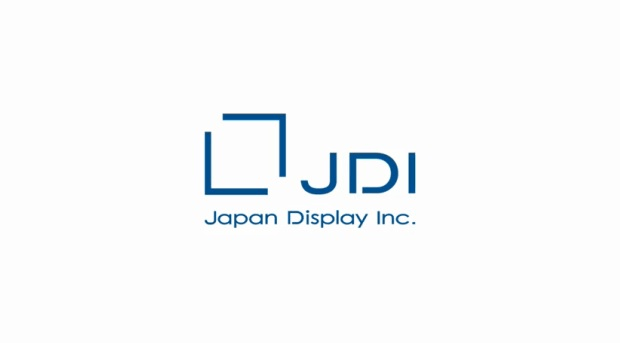
Source = JDI
Hyunjoo Kang / jjoo@olednet.com
Japan Display, which recently drew attention when it became known that they sought financial help from the government, recorded JPY 10,600 million operating loss in H1 2016.
This company recently announced that in Q1 2016, a fiscal year that ended on 30 June, they recorded JPY 174,300 million in sales, a decrease of 29.2% compared to the same period last year, and operating loss of JPY 3,400 million, a fall of 5,600 million compared to the same period in 2015.
As such in H1 2016, JDI showed JPY 350,600 million in sales and JPY 10,700 million operating loss. It explained that the shipment in the last quarter fell short of expectations, and operating profit was poor due to China’s ASP fall, etc. In particular, it is analyzed that the poor sales of Apple’s iPhone, which has been occupying 50% of JDI sales, affected JDI’s business.
On 10 August, Japanese media reported that Mitsuru Honma, CEO of JDI, revealed that INCJ promised support. The financial support is analyzed to be for the smooth installation of OLED mass production line as well as the loss recovery.
JDI is carrying out mobile OLED mass production line and anticipated to be one of the strong candidates as OLED panel suppliers for Apple’s future new iPhone. Through this performance announcement, JDI emphasized they are planning to mass produce OLED from H1 2018.
The company forecast that they will show JPY 210,000 million in sales and JPY 1,000 million operating profit in Q2 2016 in fiscal year that ends in 30 September.
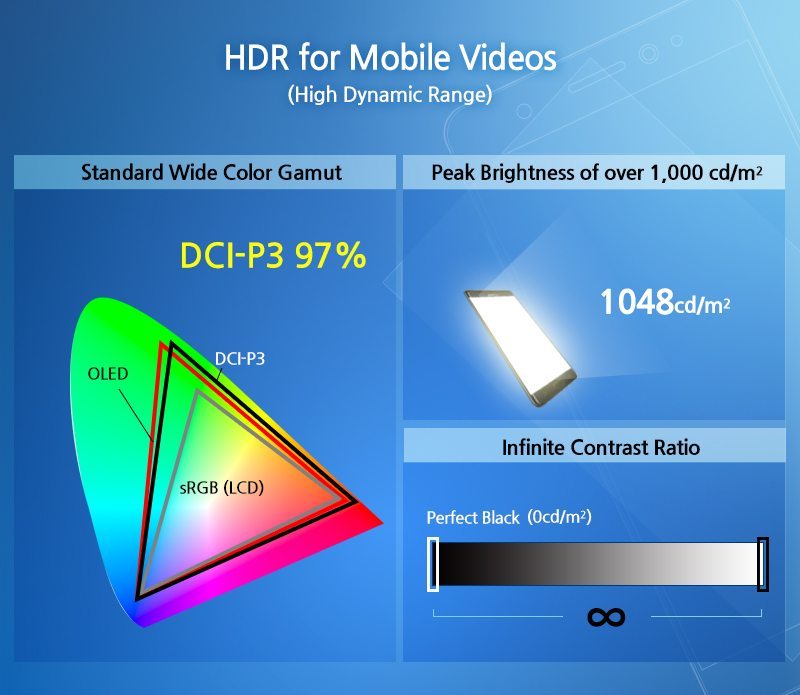
Galaxy Note 7 Records High Peak Brightness of 1,048 nit
Hyunjoo Kang / jjoo@olednet.com
DisplayMate Technologies, the leading evaluator of video screens, announced the results of a new series of comprehensive lab tests on the Galaxy Note 7 ’s display.
As the first smartphone to incorporate High Dynamic Range(HDR) technology for mobile video streaming, the Galaxy Note7 provides a cinema-like viewing experience. HDR, the newest performance enhancement feature developed for the latest 4K Ultra HDTVs, expands the color, contrast and brightness of video content through special image processing.
To display the latest high-end video content, the Galaxy Note7 was equipped with the newest standard Wide Color Gamut called DCI-P3 for Digital Cinema Initiative. The measured color gamut of the AMOLED Cinema screen mode is a very accurate 97 percent of the standard DCI-P3 color gamut. It also received a very accurate Absolute Color Accuracy measurement of 2.8 JNCD.
The Galaxy Note7 boasts a record high peak brightness (automatic brightness) of 1,048 nits in high ambient light conditions and a screen reflectance level of 4.6 percent. This means that the screen of the Galaxy Note7 can easily be viewed or read, even under relatively high ambient lighting, such as bright sunlight, which washes out the image color saturation and contrast, decreasing picture quality.
In line with its automatic brightness improvements, the Galaxy Note7 received praise from DisplayMate for being the first of its kind to incorporate a second, rear ambient light sensor. This sensor measures surrounding ambient light and then uses the measured value, along with that of the front ambient light sensor, to alter the display brightness accordingly. The additional sensor helps the device to obtain an accurate reading of the true ambient light level, even when the phone is held in the user’s shadow.
DisplayMate also made note of the Galaxy Note7’s new Blue Light Filter that allows the user to adjust and reduce the amount of blue light from the display for better night viewing, “which some recent research indicates can affect how well users sleep afterwards.”
Featuring curved screen OLED display, the Galaxy Note7 will be available for purchase starting August 19.
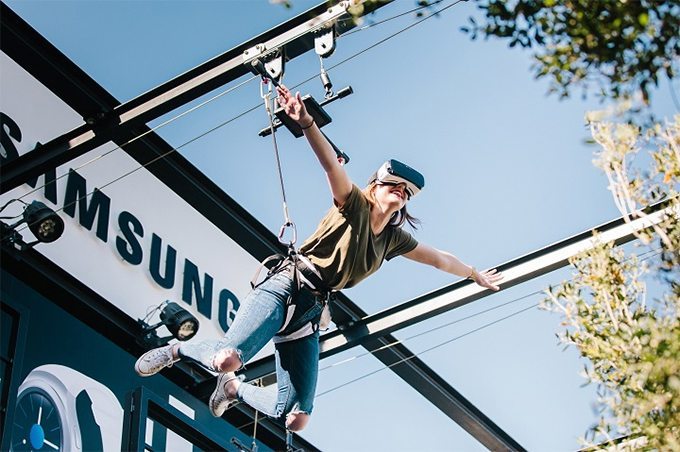
bungee jump with Gear VR (Source = Samsung)
Hyunjoo Kang / jjoo@olednet.com
Unlike the same period last year, H1 2016 showed quiet smartwatch sector while VR (virtual reality) device and smartband became popular.
According to UBI Research, of OLED wearable device revealed in H1 2016, 6 are VR devices (OLED display is either directly equipped to the device or OLED smartphone can be connected) and 4 are smartbands. In H1 2015, there were 5 OLED smartwatches and 3 OLED smartbands. The difference between almost no smartwatches in H1 2016 is evident.
In VR sector, Oculus began the announcements with Samsung Display’s OLED equipped Oculus Rift in January. Following this, other companies such as Sony, HTC, and DeePoon revealed new products in international exhibitions. Samsung Electronics recently showed Gear VR that can be paired with Galaxy Note 7 in New York, and VR is expected to maintain its popularity in Q3.
In H1 2016, smartband stimulated the market with Samsung Electronics’ Gear Fit 2, Xiaomi’s Mi Band 2, and Fitbit’s Alta.
However, the only new OLED smartwatch product announced in H1 2016 was China’s GEAK’s GEAK Watch 3, and it was not even released in the market. The reason for the slump in the smartwatch market has been noted to be short battery life, and lack of useful applications. However, as Samsung Electronics and Apple are expected to announce new smartwatch products in Q3, renewed enthusiasm is anticipated.
Samsung’s Gear 3 is expected to be revealed in IFA 2016 in Berlin in September. Apple is also rumored to be announcing Apple Watch in September. Apple has already revealed smartwatch operating system Watch OS3 with improved speed and function in June.
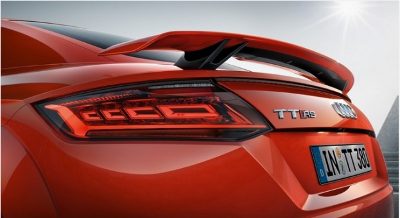
With the Forecast of Continued growth of OLED Lighting Panel Market, Automotive Lighting Market is Rapidly Growing ( Picture Source = Novaled )
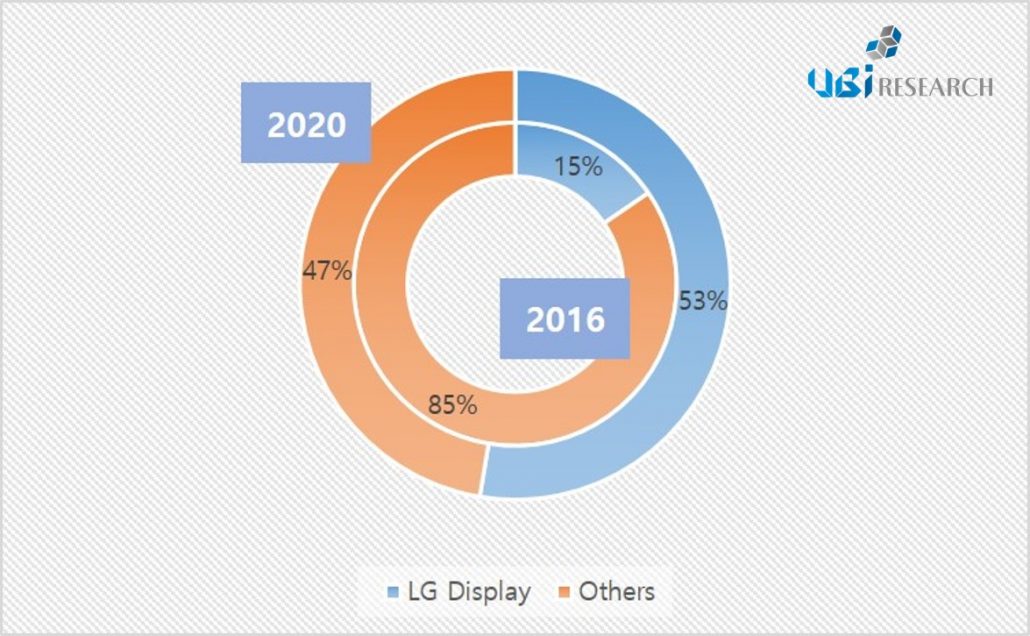
Global lighting OLED panel revenue market share (Source = UBI Research 2016 OLED Lighting Annual Report)
Hyunjoo Kang / jjoo@olednet.com
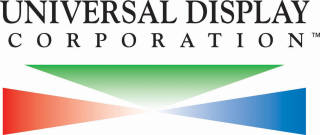
Source = UDC
Hyunjoo Kang / jjoo@olednet.com
Universal Display Corporation( UDC ), enabling energy-efficient displays and lighting with its UniversalPHOLED technology and materials, today announced the signing of an OLED Technology License Agreement and Supplemental Material Purchase Agreement with Tianma Micro-electronics Co. Ltd., a leading Chinese small-and medium-size display panel manufacturer. The agreements run for five years.
Tianma is a leading player in AM-OLED technology and series production capacity in domestic China . In late May, Tianma demonstrated its latest OLED advances with a number of display prototypes at Display Week 2016 International Symposium, Seminar and Exhibition. Tianma has a Gen 5.5 AM -OLED line in Shanghai , which started producing AM-OLED modules for intelligent mobile terminals to brand clients this year. Tianma is also increasing its OLED investments to ramp up capacity for commercial mass production.
“We are very pleased to enter into these license and supply agreements with Tianma Micro-electronics, an early OLED developer and key Chinese display maker,” said Steven V. Abramson , President and Chief Executive Officer of Universal Display . “Tianma has been at the forefront of OLED R&D in China for a number of years, and we look forward to working with Tianma to advance their commercial OLED product pipeline with our proprietary OLED technologies and materials. Around the world, we believe that OLED research, development and investment activities are gaining tremendous ground, as consumer demand for cutting-edge, fast-response, thin, energy-efficient displays continues to rise, in products such as smartphones, wearables, tablets and automotive.”
Under the license agreement, Universal Display , through its wholly-owned subsidiary UDC Ireland Limited , has granted Tianma Micro-electronics non-exclusive license rights under various patents owned or controlled by Universal Display to manufacture and sell OLED display products. Additionally, Universal Display will supply phosphorescent OLED materials to Tianma Micro-electronics for use in its licensed products.

Source = UDC
Hyunjoo Kang / jjoo@olednet.com
Universal Display Corporation( UDC ), enabling energy-efficient displays and lighting with its Universal PHOLED technology and materials, today reported financial results for the second quarter ended June 30, 2016.
For the second quarter of 2016, the Company reported net income of $21.8 million, or $0.46 per diluted share, on revenues of $64.4 million. This includes $1.8 million of currency exchange loss related to the BASF OLED patent acquisition. For the second quarter of 2015, the Company reported a net loss of $11.8 million, or $0.25 per diluted share, on revenues of $58.1 million. The 2015 net loss reflected a $33.0 million write-down of inventory, primarily of an existing host material and associated work-in-process. Excluding this item and its associated $1.9 million reduction of income tax expense, adjusted net income for the second quarter of 2015 was $19.4 million, or $0.41 per diluted share (see “reconciliation of non-GAAP Measures” below for further discussion of the non-GAAP measures included in this release).
“Our second quarter 2016 revenues and net income increased year-over-year, and we maintained our strong margin profile. We are confident that the underlying growth fundamentals of our long-term outlook remain robust, but near-term, we expect our revenue growth will be delayed by about six months,” said Sidney D. Rosenblatt, Executive Vice President and Chief Financial Officer of Universal Display.
Rosenblatt continued, “We expect strong revenue growth in 2017. At that time, new OLED production from the multi-year capital expenditure cycle is slated to start contributing to our revenues. Ahead of this wave of high-volume capacity, we have been working to expand and broaden our team and core competencies to advance our strategic initiatives and increase our competitive edge. We expect these initiatives, along with new OLED capacity, coupled with our pipeline of new materials, new technologies and new agreements, to bolster our long-term growth plan.”
Financial Highlights for the Second Quarter of 2016
The Company reported revenues of $64.4 million, compared to revenues of $58.1 million for the same quarter of 2015, an increase of 10.8%. Material sales were $22.3 million, down 8.3% compared to the second quarter of 2015, primarily due to a $2.0 million decline in host material sales. Royalty and license fees were $42.0 million, up from $33.7 million in the second quarter of 2015. The Company recognized $37.5 million in Samsung Display Co., Ltd. (SDC) licensing revenue in the second quarter of 2016, up from $30.0 million in the same quarter of 2015.
The Company reported operating income of $34.0 million in the second quarter of 2016, compared to an operating loss of $4.8 million for the second quarter of 2015. Excluding the inventory write-down of $33.0 million, adjusted operating income was $28.2 million for the second quarter of 2015. Operating expenses were $30.4 million, compared to $62.9 million in the second quarter of 2015 and cost of materials was $5.7 million, compared to $39.1 million in the second quarter of 2015, both of which included the inventory write-down of $33.0 million in the second quarter of 2015.
The Company’s balance sheet remained strong, with cash and cash equivalents and investments of $332.0 million as of June 30, 2016. During the second quarter, the Company added $96.0 million in intangible assets in the form of intellectual property purchases and certain other assets from BASF, increasing the portfolio to more than 4,100 issued and pending patents worldwide. During the second quarter, the Company generated $36.2 million in operating cash flow.
Financial Highlights for the First Six Months of 2016
The Company reported revenues of $94.1 million, compared to revenues of $89.3 million for the first half of 2015, or an increase of 5.4%. Material sales were $46.6 million, down 8.8% compared to $51.1 million in the first half of 2015, primarily due to a $7.0 million decline in host sales. Royalty and license fees were $47.4 million, up from $38.1 million in the first half of 2015.
The Company reported operating income of $36.7 million in the first half of 2016, compared to an operating loss of $3.1 million for the first half of 2015. Excluding the inventory write-down of $33.0 million, adjusted operating income was $30.0 million for 2015. For the first half of 2016, we reported net income of $23.8 million, or $0.51 per diluted share, compared to a net loss of $10.5 million, or $0.23 per diluted share, for the same period of 2015. Excluding the inventory write-down and the associated $1.9 million reduction of income tax expense, adjusted net income was $20.7 million, or $0.45 per diluted share, for the first half of 2015.
Operating cash flow for the first half of 2016 was $36.2 million, a decrease of 51.8% compared to $75.2 million for the first half of 2015 which included an upfront $42.0 million license and royalty payment.
2016 Guidance
While the OLED industry is still at a stage where many variables can have a material impact on its growth, based upon the most recent and best information on hand, the Company believes it is prudent to revise its 2016 revenues guidance. The Company now expects 2016 revenues to be in the range of $190 million to $200 million.
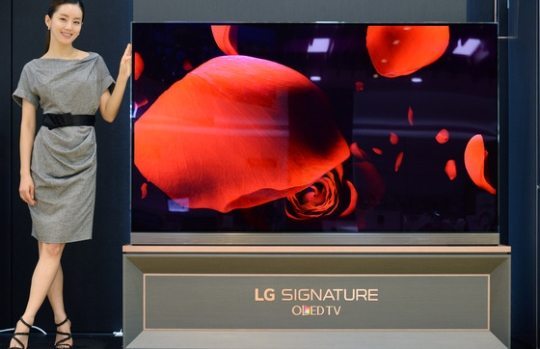
LG`s 77 inch OLED TV Picture Source = LG Elec.
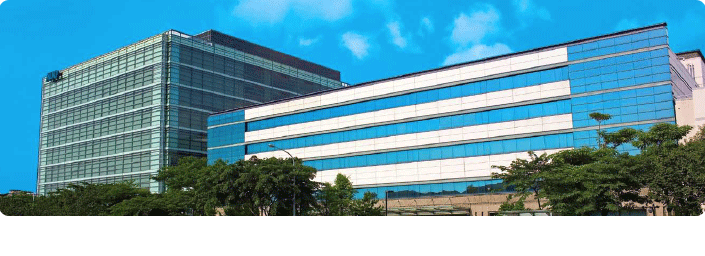
Taiwanese panel industry in recorded decreased small to medium size LCD panel shipment and increased shipment of 9 inch or bigger large size LCD panel. (Picture Source = AUO)
Hyunjoo Kang / jjoo@olednet.com
In Q2 2016, Taiwanese panel industry recorded decreased small to medium size LCD panel shipment and increased shipment of 9 inch or bigger large size panel.
According to DigiTimes, Taiwanese TFT-LCD panel companies shipped 58.38 million units of ≥ 9 inch panels in Q2 2016, an increase of 18.1% QoQ, and 0.8% increase YoY. The small to medium size panel shipment was 269.249 million units, a decrease of 0.5% QoQ, and 6.3% decrease YoY.
In terms of small to medium size, ≤ 9 inch, Chunghwa Picture Tubes (CPT) led the shipment volume with 100.56 million units, and HannStar Display followed with 67.892 million units in Q2. For LCD panels ≥ 9 inch, AUO led the Taiwanese market with Q2 shipment of 27.11 million units. Of these 7.176 million units are for TV, and the rest are for notebook, monitor, and tablet. Following AUO, Innolux recorded 27.09 million units of shipment. Of these 10.72 million units are for TV, and the rest are for notebook, monitor, and tablet.
According to companies’ recent Q2 performance announcement, key Taiwanese LCD companies, including AUO and Innolux, reported decreased business profit. AUO reported TWD 80,000 million in Q2 sales, a 13% fall YoY, and TWD 116 million in business profit, approximately 98% decrease YoY. Innolux showed TWD 66,800 million in Q2 sales, decrease of approximately 29%, and business loss of TWD 3,039 million.
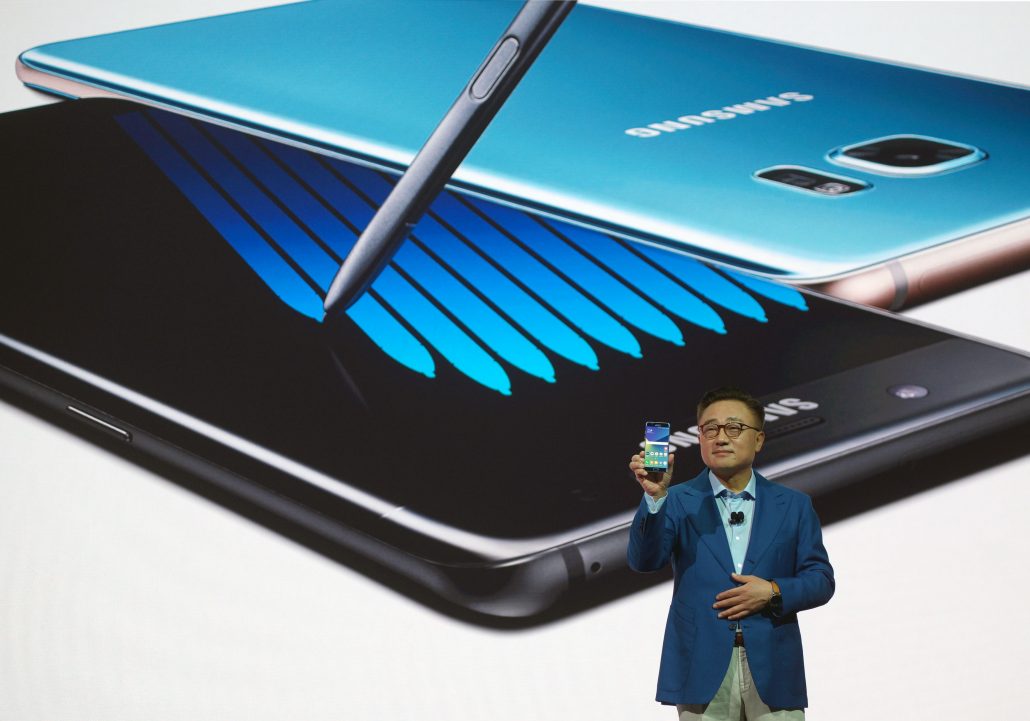
Samsung Elec. unveils Galaxy Note 7
Hyunjoo Kang / jjoo@olednet.com
Samsung Electronics continues to drive the smartphone market with the Galaxy Note7 by building on the company’s category-defining leadership with innovative features that set a new standard for large-screen devices. With refined craftsmanship, premium materials and a unique, symmetrical edge design, the Galaxy Note7 features:
The Galaxy Note7 strikes a balance between work and play, enabling people to achieve more than what they thought possible on a smartphone.
“The Galaxy Note7 combines productivity and entertainment, and strong security features. Powering a robust ecosystem, it is the ideal device for those who want to achieve more in life,” said DJ Koh, President of Mobile Communications Business, Samsung Electronics. “Life moves faster than ever now so we created the Galaxy Note7 to move with users – helping them get things done more easily wherever, whenever.”

Source = LG Elec.
Hyunjoo Kang / jjoo@olednet.com
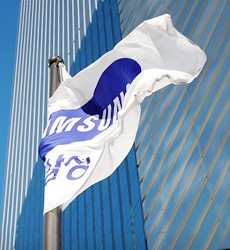
Source = Samsung
Samsung Electronics today announced financial results for the second quarter ended June 30, 2016. Samsung’s revenue for the quarter was KRW 50.94 trillion, an increase of KRW 2.40 trillion YOY, while operating profit for the quarter was KRW 8.14 trillion, an increase of KRW 1.24 trillion YOY.
The second quarter saw significant earnings growth led by strong performance both in the set and component businesses. Overall earnings of the set business improved YOY as well as QOQ due to the continuous sales increase of premium products.
The IT & Mobile Communications (IM) Division saw substantial earnings improvement led by expanded sales of flagship products such as the Galaxy S7 and S7 edge. A streamlined mid-to low-end smartphone lineup also contributed to improved profitability. Operating profit for the IM Division was KRW 4.32 trillion.
The Consumer Electronics (CE) Division achieved significant earnings growth YOY led by strong sales of its premium lineup such as SUHD TVs, Chef Collection Refrigerator, AddWash washer and newly launched air conditioner.
The component business achieved solid performance although overall earnings decreased YOY due to ASP declines in the industry. Earnings for the Display Panel segment improved QOQ led by increased OLED capacity utilization and stabilized LCD panel yields. Demand for semiconductors for mobile and SSD increased and the company achieved solid growth with a competitive edge in differentiated products, including 20-nanometer DRAM, V-NAND and 14-nanometer mobile AP.
The company estimated that the stronger Korean won against major currencies in the second quarter negatively impacted operating profit by approximately KRW 0.3 trillion, reflected mainly in the component business earnings.
Looking ahead to the second half of 2016, the company expects its solid performance to continue compared to the first half, mainly driven by earnings increase in the component business due to sales growth in high value-added products and stable demand and supply conditions. The set business is expected to continue its stable earnings while the IM Division expects marketing expenditure to increase.
In the third quarter, the company expects the component business to maintain its solid performance due to improved demand and supply conditions for memory chips and LCD panels and stable earnings for OLED and System LSI. For the set business, the company forecasts marketing expenditure for the IM business to increase mainly due to a new flagship product launch and fierce competition in the industry. Meanwhile, weak seasonality is likely to impact the CE business.
Capital expenditure (CAPEX) for the second quarter was KRW 4.2 trillion, which includes KRW 2 trillion for the Semiconductor business and KRW 1.6 trillion for the Display Panel business. The accumulated total CAPEX for the first half was KRW 8.8 trillion.
The annual plan for CAPEX has not yet been confirmed but is projected to increase slightly compared to last year. This year’s CAPEX will be concentrated on OLED and V-NAND capacity as the company sees strong market demand for OLED panels for smartphones and V-NAND SSD.
The Semiconductor business posted KRW 12 trillion in consolidated revenue and KRW 2.64 trillion in operating profit for the quarter.
The memory business enjoyed solid growth in demand in the second quarter. Orders for high-density NAND and DRAM products contributed to solid earnings QOQ. This was coupled by a reduction in cost from continuous process migration.
In NAND, shipments of SSD remained strong in the quarter, as enterprise companies increasingly made the transition from HDD to SSD so as to reduce total cost of ownership (TCO). Orders for high-density mobile storage products over 32GB also helped drive sales, mainly due to the expanded adoption by Chinese companies. Samsung actively responded to orders for high-density mobile products over 64GB and enterprise SSD over 4TB and increased supply of the industry’s first 48-layer V-NAND.
In DRAM, demand climbed QOQ as smartphone manufacturers bought more high-density mobile DRAM and demand for high-density products increased following the launch of a new server platform.
A supply imbalance of some applications led to greater demand for Samsung’s 20-nanometer high-density, high value-added mobile and server products.
Looking ahead, for NAND, increased adoption of high-density products and strong seasonality will further drive demand growth in the second half. Growth in high-density, premium SSD products will continue, and the launch of new products by smartphone manufacturers is expected to raise demand for mobile storage. However, supply and demand will be tighter in the second half, due to soft industry supply growth.
For DRAM, the launch of new smartphones and the increasing adoption of 6GB memory chips in high-end smartphones will spur shipments of mobile DRAM in the second half. Shipments of high-density server products will be strong, as more data centers make the transition to a new server platform.
The System LSI business saw gains QOQ, thanks to stronger demand for 14-nanometer mobile AP in premium smartphones and increased sales of high megapixel image sensors. In the second half, increased sales of mid- to low-end mobile AP and LSI products are expected to provide a stable revenue stream.
The Display Panel segment posted KRW 6.42 trillion in consolidated revenue and KRW 0.14 trillion in operating profit for the quarter driven by increased shipments of OLED panels and enhanced yields for new LCD TV panel production technology.
For the OLED business, second quarter earnings improved QOQ due to healthy sales of flagship smartphones and increased demand for flexible panels. High fab utilization rates with the help of an expanded mid to low-end product portfolio also contributed to improved earnings.
For the LCD business, the second quarter saw a continuation of QOQ growth under a gradual recovery in the supply-demand balance. The company was able to achieve growth thanks to improved yields for new TV panel production technology as well as expanded TV sales particularly for large-sized UHD panels.
Looking ahead to the second half, the OLED business, Samsung expects demand for OLED panels to rise despite a likely slowdown in the smartphone market. To remain competitive, the company plans to actively address customer demand and reinforce profitability by expanding the proportion of high value-added products such as flexible and high-resolution displays. Samsung will also seek to secure supply capacity according to market demand while expanding its customer base and new applications.
As for the second-half outlook for the LCD industry, Samsung expects supply and demand to improve thanks to increased demand under strong seasonality as well as continuous UHD TV market growth and size migration towards larger screens. In response, the company will focus on enhancing profitability by improving cost competitiveness and expanding its portfolio to high value-added products including ultra-large size, high-resolution and curved panels.
The IM Division posted KRW 26.56 trillion in consolidated revenue and KRW 4.32 trillion in operating profit for the quarter.
Samsung’s earnings improved QOQ thanks to strong sales of its flagship Galaxy S7 and S7 edge smartphones. Additionally the company achieved growth in the second quarter by maintaining the profitability of mid- to low-end models, such as the Galaxy A and J series, and improving the product mix by raising the sales proportion of the Galaxy S7 edge to over 50 percent.
Demand for smartphones and tablets in the second half is forecast to increase, however, market competition is expected to strengthen as other companies release new mobile devices. Despite this outlook, Samsung will focus on YOY earnings increase by strengthening its high-end line-up and maintaining solid profitability of mid to low-end products.
Looking into the third quarter, the release of a new large-screen flagship smartphone will help to maintain solid sales of high-end smartphones led by the Galaxy S7 and S7 edge. Samsung will also focus on expanding smartphone sales including this year’s new Galaxy A and J series and the debut of the Galaxy C series exclusively for the China market.
Samsung will focus on increasing smartphone sales under strong seasonality with the launch of a new model, while expecting marketing expenses to increase QOQ due to seasonality.
As for the Networks business, earnings improved due to increased LTE investment of major carriers in the second quarter.
The Consumer Electronics Division – encompassing the Visual Display (VD), Digital Appliances (DA), Printing Solutions and Health & Medical Equipment (HME) businesses – posted KRW 11.55 trillion in consolidated revenue and KRW 1.03 trillion in operating profit for the quarter.
In the second quarter, global TV demand remained flat YOY due to sluggish economic conditions in major emerging markets that offset the growth experienced in developed markets. Amid these challenging conditions, Samsung achieved solid YOY earnings by successfully launching new products, including SUHD TVs, and increasing sales of premium products on the back of global sporting events.
For the appliances business in the second quarter, although growth momentum continued in North America, global demand declined YOY due to slower growth in China and the impact from the economic slowdown in emerging markets. Despite these circumstances, earnings improved from the same period of the previous year thanks to increased sales of premium products such as the Chef Collection refrigerator and the AddWash and activ dualwash™ washing machines.
Looking ahead to the second half, TV demand is expected to decline YOY due to weakened demand in Europe and a prolonged economic slowdown in emerging markets. In response, Samsung will focus on improving profitability and increasing sales through collaborations with local channel partners and through region-specific promotions. To reinforce its leadership in the premium TV segment, the company will also seek to grow sales of its premium SUHD TV line-up, particularly products featuring its Quantum Dot technology.
Concerning the outlook for appliances in the second half, market growth is expected to be limited due to the aforementioned concerns in Europe and emerging markets. Despite these conditions, Samsung will actively seek opportunities to counter the challenging market dynamics by launching innovative products that offer superior consumer experiences. The company also plans to achieve further growth by enhancing its B2B business in this sector, particularly for built-in kitchens and system air conditioners.
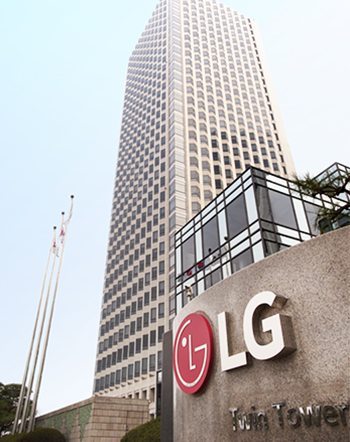
Source = LGD
Hyunjoo Kang / jjoo@olednet.com
LG Display ( LGD ) reported today unaudited earnings results based on consolidated K-IFRS (International Financial Reporting Standards) for the three-month period ending June 30, 2016.
LGD announced its seventeenth straight quarterly operating profit at KRW 44 billion, which resulted from a thorough and profit-focused management based on differentiated technologies in response to difficult market conditions caused by continuing falls in panel prices and the aggressive expansion of LCD production capacity by Chinese panel makers.
To deal with the difficult market situation, LGD increased profitability by expanding the production share devoted to large-size panels of 60-inches and above as well as premium TV panels embedded with HDR(High Dynamic Range) technology, while continuously leading the Ultra HD TV panel market for 40-inches and above based on its differentiated M+ technology. The company also maximized production efficiency over all its business areas by improving the manufacturing process and producing profit-focused products.
Panels for TVs accounted for 39% of the revenue in the second quarter of 2016, tablets and notebook PCs for 18%, mobile devices for 27%, and desktop monitors for 16%.
With 83% in the liability-to-equity ratio, 145% in the current ratio, and 19.6% in the net debt-to-equity ratio as of March 31, 2016, the financial structure of the company remains stable.
LG Display will continue to make efforts to improve profitability by focusing on premium products including large-size Ultra HD TV displays based on its M+ technology and IPS In-Touch displays in the second half of the year, while driving expansion of the OLED market and its customer base.
As for large-size OLED TV panel, the company will increase cost competitiveness through further stabilizing production and improving the manufacturing process of Ultra HD products, while continuing promotion with customers to strengthen the premium positioning of OLED TV. It will also establish a competitive edge through timely investments in cutting-edge technologies for the future including flexible OLED displays.
Mr. Don Kim, CFO of LG Display, said “Display area shipments in the third quarter are expected to increase by a mid-single digit percentage compared to the second quarter due to seasonal factors and the growing trends towards large-size panels. Overall profitability in the second half of the year is expected to further improve due to stabilized panel prices.” He also added, “LG Display will put its best efforts to create differentiated value in terms of profitability, while preparing for future growth even under difficult market conditions.”
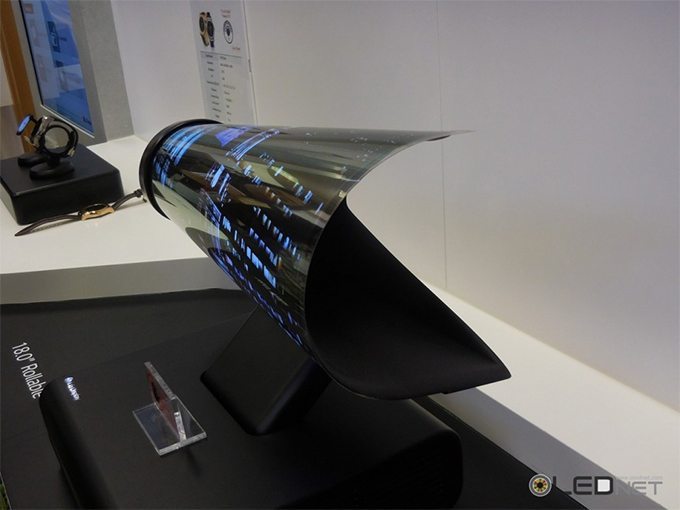
LGD will invest KRW 1.99trillion in 6G flexible OLED line. (Source = LGD)
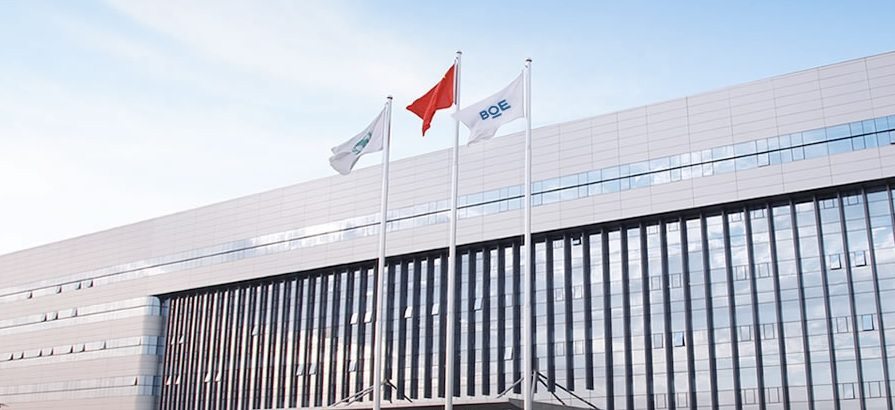
Chinese and Taiwanese Gen8 line is higher than Korea’s Gen8 LCD capa. (Source = BOE)
Hyunjoo Kang / jjoo@olednet.com
In order to respond to the outpouring Chinese large area LCD, it is analyzed that carrying out investment to turn large area LCD line into OLED is the most reliable method.
According to 2016 OLED Manufacturing Equipment Annual Report, recently published by UBI Research, Chinese and Taiwanese panel companies’ Gen8 or higher LCD mass production line is 690K in total as of Q1 2016. This is higher than Korea’s Gen8 LCD capa.
Even now, China is showing active movements in additional establishment of large area LCD mass production line. UBI Research forecasts that in 3 years, China and Taiwan’s new large area LCD mass production line will reach up to 80% of the Korea’s current mass production capa. The report emphasizes that to fight against this great supply volume from Great China region, Korean panel companies should change the large area LCD line to OLED.
In case of Gen8 line, unlike small-to-medium size line, the LCD line can be cost effectively transformed to OLED line. As such, it is considered to be the main object for the complementary investment.
Particularly, if oxide TFT, which has few photomask processes, and WRGB+CF technologies are applied, existing large area a-Si LCD line’s manufacturing equipment can continue to be used.
UBI Research explained that an advantage of complementary investment is the fact a-Si LCD line’s backplane equipment and color filter equipment can continue to be used. He further added that in order to maximize a-Si line’s capa., development of TFT process with few photomask processes is a necessity.

Picture Source = SDC
Hyunjoo Kang / jjoo@olednet.com
In order to respond to rapidly increasing OLED smartphone demand, Samsung Display( SDC ) is analyzed to require additional installation of Gen5.5 rigid OLED line and V1 line move.
At present, China’s smartphone OLED demand is explosive. According to UBI Research’s investigation, China needs up to 200 million units of mobile OLED until next year. Therefore, for Samsung Display to produce more OLED panels in A2 factory, V1 line that produces transparent OLED needs to be moved to L8 which is a Gen8 LCD factory.
OLED use V1 line has been using Gen8 manufacturing equipment produced TFT substrate cut into 6. As such, moving the V1 line to Gen8 factory is analyzed to be advisable in terms of panel production and distribution management.
The president of UBI Research, Choong Hoon Yi explained that China’s future mobile OLED demand volume is difficult for China’s key panel companies such as BOE, and even for mobile OLED leader Samsung Display it is not easy to supply sufficient amount with existing mass production line. He estimated that Samsung Display, to meet the demand, will require additional installation of at least 20-30K OLED mass production line to Gen5.5 A2 line.

2016-2020, global Gen8 complementary investment ( LCD → OLED ) is expected to be total USD 6,674 million.
Hyunjoo Kang / jjoo@olednet.com
For the next 5 years, 2016-2020, global Gen8 (8G) complementary investment ( LCD → OLED ) is expected to be total USD 6,674 million.
According to 2016 OLED Manufacturing Equipment Annual Report, recently published by UBI Research, Korea’s 8G complementary investment in 2016-2020 is estimated to be USD 5,400 million, 81% of the global USD 6,674 million. Particularly, complementary investment for large area LCD line to OLED is expected to be actively carried out centering around LG Display.
China is estimated to actively operate new large are LCD lines from 2016. To respond to this move, Korean panel companies are expected to transform 8G a-Si LCD lines located in Korea to OLED line from 2016.
To respond with LCD, China’s supply offensive and price competitiveness are too strong. As such, the situation calls for concentrated efforts in OLED.
Gen8 LCD line became the object of complementary investment as it can be easily converted to OLED compared to small-to-medium size LCD line. 8G LCD line’s a-Si TFT can be turned into oxide TFT used in Gen8 OLED line cost effectively.
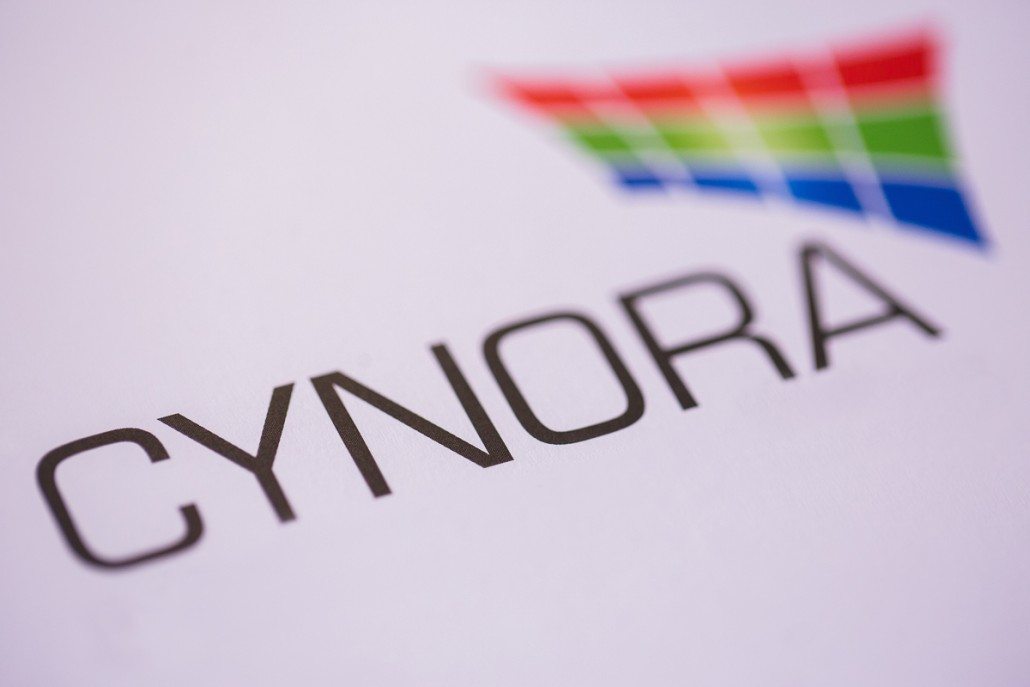
Source = Cynora
Hyunjoo Kang / jjoo@olednet.com
CYNORA, a leader in blue TADF (thermally activated delayed fluorescence) materials, has appointed Dr. Andreas Haldi as its Chief Marketing Officer.
With his strong technical and business experience, Andreas Haldi will reinforce CYNORA in the forthcoming commercialization of its high performance blue OLED materials.
CYNORA is preparing the commercialization of its emitting materials for OLEDs. The company is hiring Andreas Haldi to further enhance its already good relationships with the major display makers and to now prepare with them the implementation of its materials in their products.
Andreas Haldi has close to 15 years of experience in the OLED materials field and profound knowledge of the Asian display market. Prior to joining CYNORA, Haldi held manager positions in R&D and sales at Novaled GmbH. For the last five years he was headquartered in Seoul, Korea, as Novaled’s representative in front of the major AMOLED display makers in Asia.
“I am very happy to get Andreas on board” says Gildas Sorin, CYNORA’s CEO. “We are preparing ourselves intensively for the commercialization of our blue emitters. Thanks to his proven skills on OLED and his experience in Asia, Andreas will help us to build up our success as a leading supplier for TADF materials.”
“I am looking forward to joining CYNORA” says Andreas Haldi, “CYNORA has shown its expertise and its impressive capability to progress rapidly during the last 8 months. CYNORA has a great potential to become key player in the OLED material industry.”
The appointment of the new CMO is a significant signal of CYNORA’s further development and its forthcoming market entry. Blue TADF-based emitters will enable a significant reduction of power consumption in OLED devices and will allow higher display resolution. CYNORA owns a broad IP portfolio with over 100 patent families and is aiming for over 600 patents.
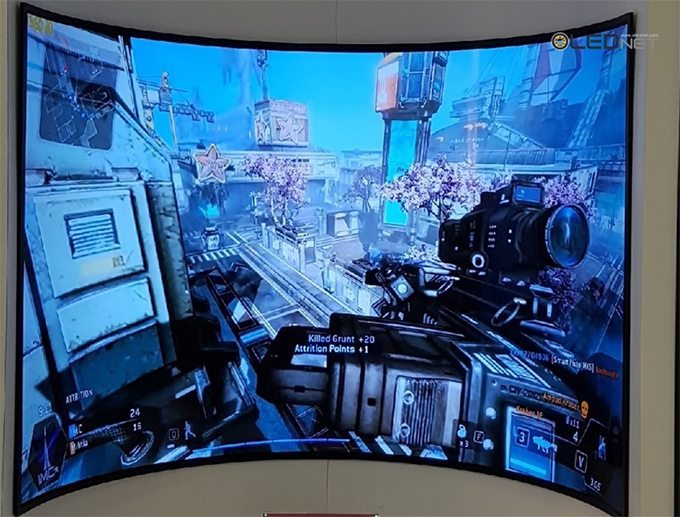
LGD`s 65“ OLED TV Panel

Source = BOE ( China )
Hyunjoo Kang / jjoo@olednet.com
China is expected to possess 80% worth of new large size LCD line of current Korean large size LCD mass production line after 3 years.
According to 2016 OLED Manufacturing Equipment Annual Report, recently published by UBI Research, the total monthly production capa. of large area LCD mass production line that has been confirmed or being considered for investment in China and Taiwan until the end of 2018 is 525K. This is based on the results of UBI Research’s investigation on Q3 2016 – Q4 2018 investment plans of Chinese and Taiwanese companies including BOE, HCK, CEC Panda, CSOT, AUO, and Innolux.
If the plan is carried out without any issues, the order is expected to be completed by Q4 2018, and after equipment installation, the lines are to be ready to operate in 2019.
The monthly capa. of 525K is 80% of the current total LCD mass production line of Korea. Once 525K new lines begin to operate, oversupply of large size LCD panel is expected to actively occur.
UBI Research estimated that if China and Taiwan’s large area LCD investment is carried out according to plan, it will be difficult for Korean and Japanese large size LCD panel to compete against Chinese panel.

Source = AUO
Hyunjoo Kang / jjoo@olednet.com
LCD shipment of AU Optronics (AUO) in Q2 2016 increased but revenue decreased.
AUO recently announced that they recorded revenue of NTD 80.09 billion (approx. USD 2,478 million) in Q2 2016. This is an increase of 12.6% from the previous quarter but down 13.2% from Q2 2015.
AUO’s panel shipment in Q2 was 70.96 million units with 28.46 million units of 10-inch and above panels, and 42.5 million units of 10-inch and below panels. The large size panels increased by 16.5% QoQ, and by 14.3% YoY. The small to medium size panels increased by 12.6% QoQ, and by 11.5% YoY.
Basically, this company sold more and earned less demonstrating that LCD price fall aftermath continued into Q2.
The H1 2016 revenue of Novatek, Taiwan’s LCD driver IC company, fell by 10.9% compared to H1 2015. LCD surface mount company TSMT’s Q2 revenue fell by 10.1 compared to Q2 2015.
Intel, LG Display, Dolby Laboratories, Audi and more slated to preset at the OLEDs World Summit 2016
Join top OLED display, lighting and material developers at the 18th annual OLEDs World Summit, taking place September 20-22 at the Paradise Point Resort & Spa in San Diego, CA. For nearly two-decades, the OLEDs World Summit has served as a homecoming for the display and lighting industries and provided a platform for them to highlight successes, address challenges and network. This year you can expect a complete overview of the industry.
The OLEDs World Summit 2016 will kick off by examining flexible display applications including wearable devices, smart phone applications and more. Over the course of the event, attendees will also explore chemicals and tools for OLEDs, new applications, challenges for OLED materials in displays and much more. As an attendee you can expect to hear discussions such as:
In addition to the presentations and dynamic discussions, there are four keynote presentations by some of the biggest names in the industry. You’ll hear from:
Register today!
Your colleagues from Eastman Kodak, Acuity Brands Lighting, Universal Display, LG Display and more have already reserved their delegate tickets. Book your ticket today for the low price of $1199. Hurry, the price goes up after July 13th!
Questions?
Contact the Graphene World Summit Team:
Agenda Questions-DeAna Morgan at dmorgan@smithers.com
Media Questions-Katie Oster at koster@smithers.com
Sponsorship Questions-Emily Murray at emurray@smithers.com
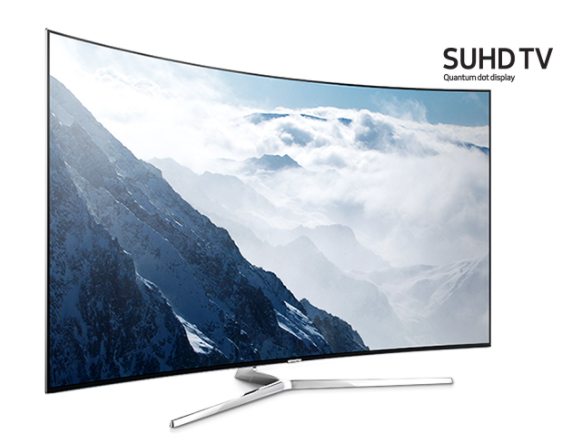
QLED is Becoming an issue (Picture Source = Samsung Elec.)
UBI Research Chief Analyst Choong Hoon Yi
As the next generation TV technology, QLED is becoming an issue in media. This is because Samsung Electronics selected QLED TV as the next product after the currently selling SUHD TV. However, if QLED TV display is the product that uses electroluminescence quantum dot, this shows they do not know display at all.
Quantum dot technology display can be divided into 2 types depending on the light-emitting technology. Photoluminescence quantum dot technology uses mechanism where the materials stimulated by external light emits light again, and this QD technology is currently applied to LCD TV. The TV has quantum dot sheet attached to the backlight’s blue light to be used as the backlight unit, and Samsung Electronics’ SUHD TV is such a product.
As photoluminescence quantum dot has wide color gamut, this can actualize over 110% of NTSC standards and there is no doubt that this is the best LCD TV product. Furthermore, another photoluminescence quantum dot technology, where colors are actualized by dispersing quantum dot materials on color filter, is in development.
In comparison, electroluminescence quantum dot technology is self-emitting when electricity is applied, and similar to OLED. Only the light emitting materials are inorganic and the structure is comparable to OLED. For OLED, hole is introduced from electrode through HIL layer, and this hole reaches emitting materials through HTL layer to produce light.
When the electron reaches emitting materials through EIL and ETL layers, the emitting materials with rapidly increased energy level due to electron and hole, produces light to release the energy. HIL, HTL, EIL, and ETL layers are needed in OLED to control the energy levels needed for electron and hole to reach emitting materials.
Therefore, for electroluminescence quantum dot to emitting light, HIL, HTL, EIL, and ETL layers are required same as OLED. Scientists developing electroluminescence quantum dot technology are using OLED HIL, HTL, EIL, and ETL materials. As the exclusive materials have not been developed, the technology is still in early stages.
This still belongs in science category rather than technology. Furthermore, electroluminescence quantum dot is dispersed to solution to print, and as such ink-jet or similar equipment development is necessary. HIL, HTL, EIL, and ETL also have to be dispersed using solution.
What is curious is whether Samsung Electronics’ QLED TV is existing QD technology that uses photoluminescence quantum dot or technology that uses electroluminescence quantum dot. Generally, QLED signifies electroluminescence quantum dot.
Therefore, if Samsung Electronics can really sell electroluminescence quantum dot using QLED within a few years, this will place Samsung Electronics as the world’s most innovative company establishing new scientific records.
However, OLED emitting materials developing companies are dismissing this claim as ridiculous. Solution process produced OLED emitting materials, HIL, HTL, EIL, and ETL materials have not yet been suitably developed, and require 5 more years before commercialization. As such, companies believe that actualizing QLED in a few years is impossible.
The fact is QLED exclusive HIL, HTL, EIL, and ETL materials are not being developed yet. Printing equipment also have not yet been commercialized. Electroluminescence quantum dot developing academia also points out that only the potential has been glimpsed so far.
Several stages have to be passed through for QLED to be realized. For solution process using QLED to be commercialized, it could only happen after solution process OLED appears first. Looking at the history of OLED commercialization, this is minimum 10 years.
For Samsung Electronics that cannot produce OLED TV to have mentioned that they will produce QLED TV within 3 years makes the writer wonder whether to exclaim, “only Samsung” in awe or ask “what is Samsung doing?”

Source = LG
(Unit: KRW bn)

These figures are the tentative consolidated earnings based on K-IFRS. This tentative earnings is provided as a service to investors prior to LG Electronics’ final earnings results including net profit and details regarding each division which will be announced officially later this month.

Hyunjoo Kang / jjoo@olednet.com
Samsung Elec. announced its earnings guidance for the second quarter of 2016.
Samsung Elec. estimates that consolidated sales came to approximately KRW 50 trillion, and consolidated operating profit of approximately KRW 8.1 trillion.
The above figures are estimates of consolidated earnings based on K-IFRS. Korean disclosure regulations do not allow earnings estimates to be provided as a range. Therefore, the above figures are based on the median of the earnings estimate range, as given below.

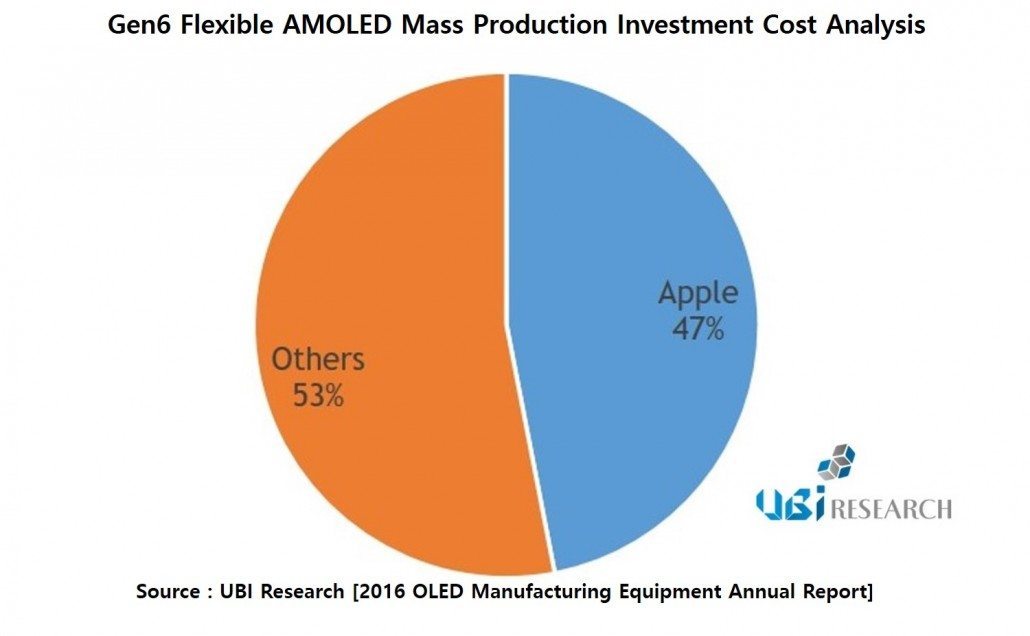
Source = UBI Research [2016 OLED Manufacturing Equipment Annual Report]
AMOLED manufacturing equipment market for Apple’s use for 5 years, 2016-2020, is expected to reach USD 13,000 million.
According to 2016 OLED Manufacturing Equipment Annual Report, published on 7 July by UBI Research, the global Gen6 flexible AMOLED manufacturing equipment market is expected to record USD 28,411 million in 2016-2020. 47% of this is for Apple’s use with USD 13,000 million. The figure is if Apple applies flexible panel to some new models of iPhone to be released in 2017, and all new models to be released in 2018.
Apple occupies approximately 15% of the total smartphone sales with over 200 million units per year. As such, it is expected to have great impact on future exible panel market expansion.
In 2021, global flexible AMOLED panel shipment is estimated to exceed 1,000 million units. UBI Research forecasts Apple iPhone’s flexible panel will occupy 20% of the total flexible AMOLED shipment in 2017, and exceed 50% in 2021. UBI Research explains that in order to meet Apple’s flexible AMOLED panel demand, the required panel production capa. is analyzed to be 30K per month in 2017, and total 300K per month in 2021.
Furthermore, panel companies’ mass production line is expanding accordingly, and Samsung Display in particular is expected to invest 30K per year directed to Apple.
UBI Research’s latest report forecasts that the total OLED manufacturing equipment market to record approximately USD 43,927 million in 2016-2020.

출처 = Applied Materials
Hyunjoo Kang / jjoo@olednet.com
Applied Materials is expected to show Q2 display manufacturing equipment sales increased by almost 6 times bolstered by OLED market growth.
Digitimes recently quoted Applied Materials’ greater China account general manager Kuo Yi-tze and reported that the company’s Q2 2016 order value for the display manufacturing equipment is estimated at USD 700 million. This is a 5.8 times increase compared to USD 120 million in Q2 2015.
Particularly, the demand by Korean panel companies, including Samsung Display and LG Display, is rapidly increasing. Furthermore, Chinese panel companies are also actively taking action to catch up to Korean panel companies’ technology and production ability.
Applied Materials estimates that the global shipment of mobile device OLED panel for smartphone, smartwatch, etc. will increase from 2016’s 353 million to 2020’s 799 million units. Furthermore, automotive OLED panel shipment is expected to increase from 2016’s 134 million to 2020’s 176 million units.
Applied Materials has seen orders for OLED equipment increasing, especially from South Korea-based panel makers, and its second-quarter 2016 order value for the display equipment segment is estimated at US$700 million, 5.8 times the US$120 million recorded for second-quarter 2015, according to Applied Materials’ greater China account general manager Kuo Yi-tze for AKT Display Business Unit.
South Korea-based panel makers take significantly lead in OLED technology and production and China-based fellow makers are making efforts to catch up, Kuo said.
Demand for OLED panels mainly comes from growing application to smartphones and smart watches, with global shipments of OLED panels used in mobile devices to increase from 353 million units in 2016 to 799 million units in 2020, Kuo indicated.
In addition, global shipments of OLED panels used in automotive displays will increase from 134 million units in 2016 to 176 million units in 2020, with a CAGR of 9% in unit shipments and 12% in area shipments during 2016-2020 Kuo noted.


Source = Japan Display
Hyunjoo Kang / jjoo@olednet.com
Japanese media reported that Japan Display (JDI) is expected to sell small-to-medium sized LCD module factory located in south China to Chinese panel company Jiangxi Holitech. The sales price is USD 16.15 million.
The factory is attached to Morningstar Optronics Zhuhai (MOZ), Taiwan’s LCD module company Star World Technology’s subsidiary company. Taiwan Display is the major shareholder, and JDI owns the entirety of Taiwan Display. Through the sales of MOZ factory, Taiwan Display is to own 100% of Star World Technology stakes.
JDI used to own 3 LCD module production subsidiary companies, JDI Device and JDI Electronics in Suzhou, and Shenzhen JDI in Shenzhen, to supply touch panel for Chinese smartphone companies.
According to Japanese media, JDI is expected to confirm detailed plans regarding the sales of these three subsidiary companies.
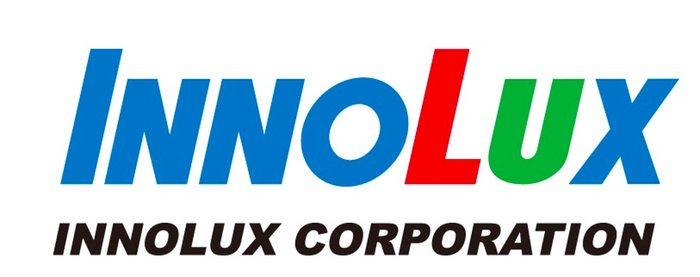
Source = innolux
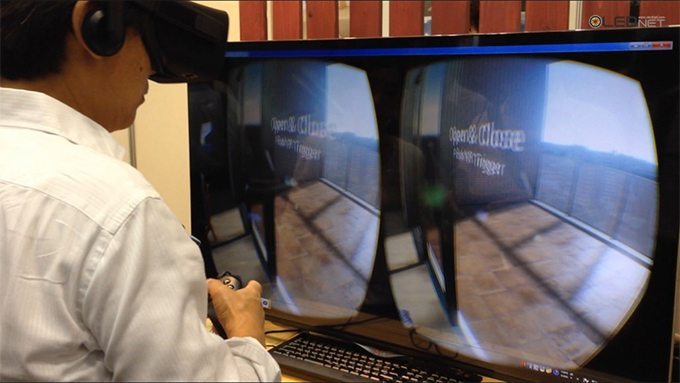
Artcraft booth visitor is experiencing virtual reality using VR device and joystick
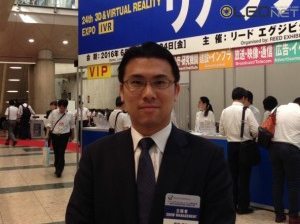
Manufacturing World Show Director Takeshi Fujiwara
At the exhibition, Takeshi Fujiwara, the event’s show director, told OLEDNET that they have been expecting VR’s vitalization in manufacturing industry, hosting IVR for 24 years, and the proportion of it increased by a groundbreaking number. Until now, it has been mostly handled in academia such as research labs, but as VR is nearing the general public through construction, game, amusement, etc., Fujiwara explained that he sees this year to be VR’s year of vitalization.

Hyunjoo Kang / jjoo@olednet.com
UDC announced today that it has entered into an agreement to acquire Adesis, Inc. Adesis is a privately held contract research organization (CRO) with 43 employees specializing in organic and organometallic synthetic research, development, and commercialization. Adesis is a critical technology vendor to companies in the pharmaceutical, fine chemical, biomaterials, and catalyst industries, and has worked with Universal Display over the last few years to help advance and accelerate a number of Universal Display’s product offerings.
“This acquisition is part of our strategic growth plan. We believe that it will provide additional highly-skilled resources to further advance our initiatives for the development and delivery of next-generation proprietary emissive material systems in the rapidly evolving OLED industry,” said Steven V. Abramson, President and Chief Executive Officer of Universal Display. “Moreover, we expect it to enable us to leverage our twenty-plus years of experience in developing and commercializing cutting-edge chemistry technologies to help expand Adesis’ businesses across its end-markets including pharma, biotech and catalysis. We are delighted to welcome Dr. Andrew Cottone, President of Adesis, Dr. Ving Lee, Chief Scientific Officer, and the vastly experienced Adesis team to UDC.”
“We are very excited to become part of UDC and build additional synergies between both companies, and further enhance the growth of UDC’s OLED leadership,” said Andrew Cottone, President of Adesis, Inc. “In addition, we anticipate that Adesis will benefit from UDC’s financial and business acumen to better support our clients with world-class technology and expertise, and reinforce our positioning for continued growth as a specialty chemical CRO.”
Under the terms of the agreement, Universal Display will acquire all outstanding shares of Adesis, Inc. in a merger for approximately $36 million in cash. The transaction is expected to close in the third quarter of 2016, subject to customary closing conditions. Following the closing, Adesis will operate as a wholly-owned subsidiary of Universal Display Corporation. Andrew Cottone will continue as the President of Adesis, and Steve Abramson will become the Chairman of the Board of Adesis.

Informatix’s GyroEye, VR Software at Manufacturing World Japan 2016
Tokyo = Hyunjoo Kang / jjoo@olednet.com
Plenty of VR related contents and software products were exhibited in Manufacturing World Japan 2016 (22-25 June).
Transmedia presented Drop in VR which is a platform which allows users to create, manage and publish VR contents. The user-created 3D modelled contents can be uploaded to the Drop in VR server, and edited by adding music, clips, and other functions.
The produced contents can be downloaded and enjoyed through a VR device. At the exhibition, Transmedia demonstrated VR contents that allows comic books to be viewed in 360°, edited by Drop in VR. The company explained to the OLEDNET that they will begin testing in September and begin Drop in VR service by the end of the year.
Informatix revealed a 3D viewer software GyroEye that can be used in housing or office design. Using GyroEye, hypothetical space can be compared before construction and after construction in 360° through VR. Informatix explained that in August, GyroEye and Germany’s Zeiss’ VR device VR one+ will be released together.
ZENKEI began VR platform Stereo 6 for viewing scenery in 22 June. Stereo 6 is a comprehensive system that allows clips from 6 cameras to be transformed into 360° contents and experienced through VR.
Dynamo Amusement, showed their VR contents Megalodon, and used Samsung Electronics’ Gear VR and Galaxy S6 for demonstration. The company explained that Megalodon, a 5-minute CG produced contents showing deep sea underwater world, will be released in the summer.
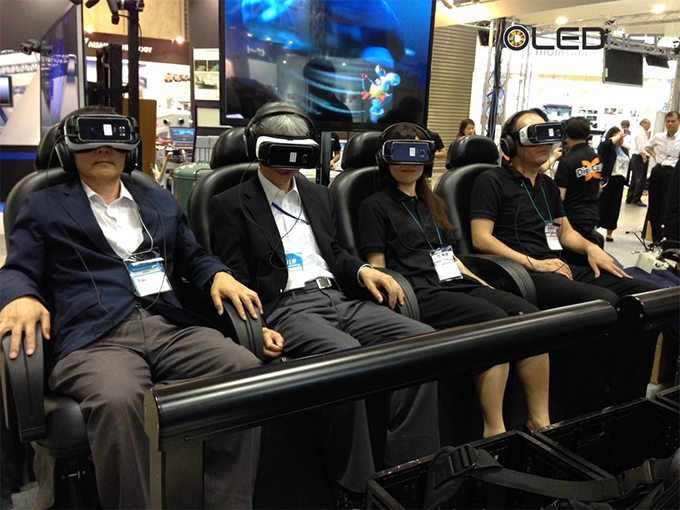
Dynamo Amusement demonstrated 4D VR contents using Gear VR
Tokyo = Hyunjoo Kang / jjoo@olednet.com
At Manufacturing World Japan (22-25 June, Tokyo Big Sight), 4D movie was demonstrated through Gear VR.
Dynamo Amusement, a contents company, showed their VR contents Megalodon, and used Samsung Electronics’ Gear VR and Galaxy S6 for demonstration. The company explained that they used these devices as they were popular although the content is not exclusive to these products.
For the demonstration, visitors could sit in chairs installed in the Dynamo Amusement booth wearing Galaxy S6 equipped Gear VR. The focus could be controlled using the wheel on Gear VR.
Megalodon is a clip that shows the deep sea underwater world using CG technology. The moving chairs and air jets are not different from existing 4D contents, but the VR screen provided realistic experience, much more vivid, including the scene where the viewer is swallowed by a giant shark.
However, the picture quality remains an issue. Despite using the wheel to focus, the clear picture was not produced. This is dependent on the resolution of the smartphone connected to the VR device, the Galaxy S6 used in the demonstration has AMOLED panel of 577 ppi, 2560 x 1440. Nonetheless, with Samsung’s recent reveal of 806 ppi AMOLED for VR at 5 inch mark, future picture quality improvement is anticipated.
Additionally, despite the vividness directly ahead, concentration was difficult due to the not insignificant weight of the device. A total weight of 518 g, Gear VR’s 380 g and Galaxy S6’s 138 g, can be heavy to be placed on the head for a long period of time. For longer uses, the weight has to be reduced.
Dynamo Amusement’s Megalodon has the running time of 5 minutes, to be released this summer.

Galaxy S Series`s Blue Materials Luminance Needs to be Improved by 3.7 Times (Source = UBI Research)
Hyunjoo Kang / jjoo@olednet.com
If the Galaxy S Series luminance increase trend continues, it is estimated that the luminance will reach 754 nits within 2-3 years. In order to produce Galaxy S with 754 nits, the luminance of blue emitting materials, that will be used for the product’s AMOLED, is analyzed to require improvement by approx. 3.7 times.
According to AMOLED Characteristics Analysis Report of Galaxy S Series, published by UBI Research, the analysis of luminance increase trend of Galaxy products from S4 released in 2013 shows Galaxy S series with full white luminance of 430 nits and peak white of 754 nits is expected to be produced within 2-3 years. The Galaxy S4 luminance is 338 nits (peak white), and the luminance increased to S7’s 505 nits via S5 and S6’s 400 nits mark. Calculating based on this trend, the future product is analyzed to have 754 nits of luminance.
The report reveals that for Galaxy S7, the luminance of red materials is 142 nits, green 338 nits, and blue 26 nits. To actualize 754 nits screen, the red materials have to improve luminance by approximately 1.5 times, green 1.2 times, and blue 3.7 times. UBI Research explained that for high resolution screen with limited size, emitting materials performance improvement is a must and that technology development should be focused on blue emitting materials.
* Luminance figures (nits) quoted in the article have been measured by UBI Research, with Auto Brightness function switched off. Future luminance forecast is also without this function.

Barry Young Suggested “Don`t Believe the Garbage about QLED in 2019” (Source = Samsung)
Hyunjoo Kang / jjoo@olednet.com
An article by Barry Young, the managing director of the OLED Association, in Display Daily created much excitement in Korean display industry when domestic media picked up the story on 14 June. The article includes Young’s suggestion, “don’t believe the garbage about QLEDs in 2019”.
Clarifying this comment, experts unpack this to mean Young’s pessimistic outlook for QLED mass production in 2019 forecast rather than for QLED itself.
Barry Young discussed QD in an article titled Drinking the QD Kool-Aid in Display Daily. It is estimated that the comment is aimed at the recent speculation that Samsung Electronics will mass produce QLED TV as the next generation product in 2019 rather than OLED TV. While Samsung Electronics has not announced their official position regarding QLED TV mass production timing, some sectors within the market believe it will be possible by 2019. However, many have differing opinions.
QLED is a display that uses quantum dot for emitting layers’ host and dopant while maintaining the common layers used in the existing OLED. Quantum dot, emitting layer materials used in QLED, utilizes inorganic materials and can lower the production cost in comparison to OLED’s emitting layer materials. That the process does not require evaporation as it can be carried out through ink jet printing is another advantage, and some also believe that QLED color purity is superior to OLED.
Despite these, some experts point out that it is difficult for QLED to become the main force of the premium TV market, surpassing OLED, in a short time. QLED has to solve several technological issues including lifetime and emitting efficiency. When mass producing QLED, pin holes occur and reduce device lifetime, and as the hole and electron are not balanced the emitting efficiency falls. Furthermore, as even research has not been carried out regarding QLED lifetime and degradation, whether it will be commercialized by 2019 is also in question.
Meanwhile, Young refuted the argument that QD-LCD’s picture quality is superior to OLED. He proclaimed that QD Vision and Nanosys are making “very questionable statements” about how “OLED TVs were outperformed by LCD’s with QD enhanced LED backlights” without considering merits of OLED such as contrast ratio, viewing angle, response time, color accuracy, and form factor as well as luminance and color area.

Manufacturing World Japan(Source=REED)
Hyunjoo Kang / jjoo@olednet.com
Reed Exhibitions Japan Ltd., the largest trade show organiser in Japan, announced that Manufacturing World Japan 2016, Japan’s leading trade show for the manufacturing industry, is coming back at Tokyo Big Sight from June 22 – 24, 2016 with the largest scale in its history.
According to the huge supports from manufacturing industry of Japan and Asia, the number of exhibitors in 2016 is expected to reach 2,350 exhibitors from all around the world. This figure is the largest ever in the history of Manufacturing World Japan and 5% increasing from last year.
The number of visitors is expected to be 83,500 and they will pack the show floor during 3 days show period. From the survey of visitor pre-registration, motivation of visitors for purchasing from exhibitors is extremely high.
The number of international exhibitors of 2016 show is expected to be 365 and this figure is 14% increasing from last year. This is the largest number in Manufacturing World’s history. “This fact means that this event is evolved to be the global trade show and there is a huge demand from international exhibitors to develop the new business with Japanese manufacturers,” said Takeshi Fujiwara, Show Director of Manufacturing World. “We hope there will be great number of good meetings between international exhibitors and Japanese visitors at Manufacturing World Japan 2016 and it leads to the innovations which can make the greater cars, consumer electronics, trains, airplanes etc.”
Requirements for quality from Japanese manufacturers being well known as extremely high, all exhibitors will exhibit their latest products/technologies/solution with all their skills. Though this show has been recognized as the place where the world’s highest quality products/technologies/solution are gathered for these years, Show Management is sure that the 2016 show should be the most exciting show in its history gathering 2,350 exhibitors. If you would like to see the finest skills of metal processing/micro fabrication by the craftsman’s effort and history, you should come and visit Manufacturing World Japan 2016. If you have a trouble on your product which you have been struggled for a long term, you should not miss Manufacturing World Japan 2016.
For free entry to Manufacturing World Japan 2016, visitors need to apply for the visitor registration through the official website. Now visitor registration is open at the official website. Access to the following URL and complete the registration form for Exhibition Ticket.
VIP Exhibition Ticket Registration (Only visitors above manager level): http://www.japan-mfg.jp/en/vip/
Exhibition Ticket Registration: http://www.japan-mfg.jp/en/inv/
Group Visit Application (The group with more than 6 people): http://www.japan-mfg.jp/en/To-Visit_Tokyo/Group-Visit/
Shows held inside Manufacturing World Japan 2016
· 20th Mechanical Components & Materials Technology Expo [M-Tech]
· 27th Design Engineering & Manufacturing Solutions Expo [DMS]
· 7th Medical Device Development Expo [MEDIX]
· 24th 3D & Virtual Reality Expo [IVR]
Manufacturing World Japan 2016: http://www.japan-mfg.jp/en/

Samsung OLED Equipped HP Spectre 360 (Source = HP)
Hyunjoo Kang / jjoo@olednet.com
With diverse merits, OLED application is increasing to include notebook, tablet, monitor, etc. Accordingly, Samsung Display’s OLED panel is being actively expanding to this market.
HP recently began shipping Spectre 360, a notebook equipped with Samsung Display’s 13.3 inch OLED with resolution of 2560 x 1600. Previously, in CES 2016 (6-9 Jan) Samsung Electronics revealed Samsung Display’s 12 inch OLED equipped Galaxy Tab Pro S, and HP and Dell also presented Samsung Display’s 13 inch mark OLED equipped labtop.
In SID 2016 (22-27 May), Samsung Display presented 2560 x 1440 resolution 13.3 inch and 14 inch OLED for notebook and actively targeted the notebook market. Following this, a Korean press reported that Samsung Display will stop production of TN panel, low resolution LCD panel for notebook and monitor. That Samsung Display is actively targeting the notebook market is analyzed to be a strategy to create premium market advocating diverse advantages of OLED.
Due to superior contrast ratio, OLED’s picture quality is clearer in comparison to LCD, and easy to create premium market as the weight can be lighter than LCD. Burn in effect, considered one of OLED’s drawbacks, is also known to have been much improved.
As the price of OLED is higher than LCD at present, specialist market, such as medical, should be targeted first. However, when the price competitiveness improves in future, popularization of OLED is anticipated. Accordingly, Samsung Display is actively taking action in notebook and tablet OLED market expansion. UBI Research reported that 2016 Q1 OLED panel shipment for tablet increased by more than 10 times compared to the same period in 2015.
According to UBI Research’s 2016 OLED Display Annual Report, the 11 inch – 13 inch, notebook and monitor use, OLED panel shipment is expected to record 100,000 units this year, and this is expected to increase by 10 times in 2020.
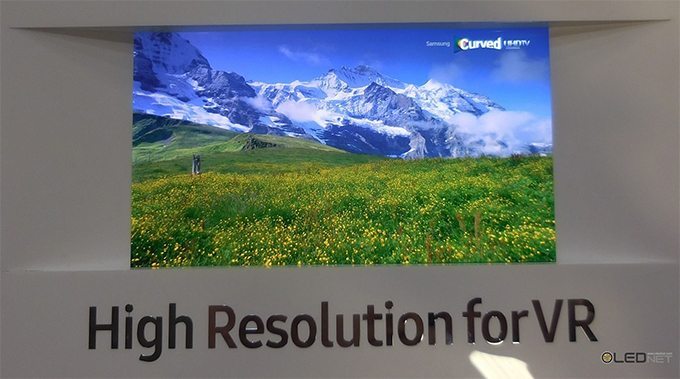
SDC`s 806 ppi OLED Panel for VR
Hyunjoo Kang / jjoo@olednet.com
Samsung Display’s recently revealed 5.5 inch 806 ppi AMOLED is expected to contribute to the expansion of the global VR (virtual reality) market as well as providing synergy for both Samsung Electronics’ future VR and smartphone business.
In SID 2016 (22-27 May), Samsung Display revealed 5.5 inch AMOLED with resolution of 806 ppi. This 4K UHD display has the highest resolution for 5 inch mark AMOLED in industry.
The response speed of AMOLED is approximately 1,000 times faster than LCD and can actualize much superior picture quality due to exceptional contrast ratio. The reduced amount of harmful blue light is also another merit of AMOLED, and it is becoming the general trend for display for VR display.
Even at the same resolution, the visual effects for smartphone and VR device are different. For example, 577 ppi QHD resolution applied to Galaxy S7 can actualize quite clear picture quality for smartphone. However, when the display is directly in front of the eyes, in cases of VR, aliasing effects, when what is on the screen looks jagged, occurs. In order to produce clear picture quality with almost no aliasing effects in VR, expert believe that 1,500 ppi is required at minimum. However, the current VR AMOLED only can actualize up to high 500 mark ppi.
That Samsung Display displayed AMOLED with resolution of over 800 ppi for the first time should be noted. With this resolution, aliasing in VR can be significantly improved even if not perfectly. Furthermore, this AMOLED has the same brightness as the Samsung’s Galaxy S7. Considering the production yield improvement, this display could be used for Galaxy S8 (TBA) that is expected to be released in 2017. For VR device connected to smartphone, smartphone’s resolution is directly related to the VR’s picture quality. This means that the Samsung’s 806 ppi 5.5 inch AMOLED allows for UHD smartphone production as well as the introduction of VR with upgraded picture quality.
UBI Research explained that while some believe that ultra-high resolution is not necessary in small screen such as smartphone, the 4K UHD 5.5 inch AMOLED is significant in that smartphone is linked with VR which market is being opened. He added that the 806 ppi AMOLED recently revealed in SID 2016 by Samsung will contribute to the expansion of the global VR market as well as providing synergy for both Samsung Electronics’ future VR and smartphone business.
Hyunjoo Kang / jjoo@olednet.com
Samsung Electronics, will showcase the latest additions to its industry-leading digital signage and visual display solutions portfolio at the InfoComm 2016 tradeshow. Scheduled to take place June 4-10, 2016, at the Las Vegas Convention Center, InfoComm is the largest annual global conference for the professional AV industry and is expected to welcome more than 40,000 attendees from nearly 110 countries.
Under the theme “Collaborate. Attract. Engage.”, Samsung’s booth (#C-6319) will include a variety of next-generation technologies designed to promote more efficient content delivery and display management in corporate, hospitality, public, retail and at-home environments (among others). Highlighted by the integration of the Tizen operating system into many of its newest digital signage technologies, Samsung’s diverse line-up will demonstrate how booth visitors can drive greater engagement, and related sales, through clear, cost-effective message presentation.
“As the world’s leading total digital signage solutions provider, we strive to discover new avenues that help our partners deliver captivating content and a differentiated experience at every stage of the customer journey,” said Seog-gi Kim, Senior Vice President, Visual Display Business at Samsung Electronics. “We are excited to introduce the latest expansion of our cutting-edge visual display lineup at InfoComm 2016, and showcase how these new technologies solve prominent challenges and drive growth in today’s fast-paced business environments.”
Beginning in 2016, Samsung’s new P Series digital signage technologies will feature the enhanced fourth generation Samsung SMART Signage Platform (SSSP 4.0) powered by the Tizen operating system. With Tizen, SSSP will deliver more powerful graphic performance and seamless content playback to expand users’ visual display possibilities while creating a more vivid and memorable experience for their audiences.
The Tizen-powered, fourth-generation SSSP features an upgraded graphics engine to drive faster response time, interactions and loading speeds. The platform additionally enables users to manage display content more rapidly through an optional PC-less all-in-one screen.
The refined SSSP 4.0 platform allows users to build and launch web-based applications by offering HTML5 support and a comprehensive toolset, including Web Simulator and Tizen Emulator. The new platform’s versatility expands users’ content development capabilities while reducing activation time.
A key component of the improved SSSP 4.0 platform, Samsung’s MagicInfo Server 4.0 program enables users to manage their entire display network from any location through a centralized server. Reliable and easy to use, MagicInfo Server 4.0 integrates a dedicated Backup Player and DataLink content streaming functionalities to reduce the manual work required to share essential information.
The enhanced MagicInfo Server 4.0 program additionally offers enterprise users a more capable set of content creation, scheduling and deployment tools. Content managers can leverage an intuitive interface, including drag-and-drop content scheduling, to rapidly identify and implement updates. MagicInfo Server 4.0 further makes content programming easy through a design that does not require JavaScript or additional plug-ins to operate, reducing steps to save valuable time.
Samsung’s new standalone displays (PHF and PMF Series) provide a slim, strong and simple signage solution for environments facing tight or irregular space limitations. Featuring a slim-depth design (29.9mm) and narrow bezel (6.9mm), the PHF and PMF displays are among the thinnest on the market and can accommodate a range of business settings. The Tizen-supported standalone displays are designed for uninterrupted 24/7 content delivery, and an integrated centralized infrared receiver (IR) further ensures continued performance in any environment.
A host of additional design features further enable the PHF and PMF Series displays to deliver clear, brilliant content regardless of location. A non-glare frontal panel reduces natural and ambient light reflection to ensure continuous readability.
InfoComm attendees also will get the first look at Samsung’s new large-format OHF Series outdoor displays. Billed as industry’s leading large-sized outdoor signage, the OHF Series is available in a variety of sizes (46-, 55-, 75- and 85-inch models), with each boasting a slim-depth design for more impactful content delivery.
The OHF Series displays are equipped with SSSP 4.0 and powered by the Tizen operating system, ensuring faster and more reliable content development and delivery. An embedded power box condenses operational components to a single system, conserving space while streamlining management. Engineered for any outdoor environment, the OHF Series displays can withstand temperatures ranging from -30-50oC without impeding content delivery. OHF Series viewers additionally benefit from external magic glass, 2,500nit brightness and a 5,000:1 contrast ratio that ensure messages can be seen clearly at any time and place.
Optimized for a range of indoor retail, corporate and public-viewing applications, Samsung’s narrow bezel (1.7mm bezel-to-bezel) UHF-E video walls combine advanced color management capabilities with the visual enhancements of large-format signage to deliver clear and consistent content. The ultra-slim design eliminates distractions and keeps viewers focused on the display’s content rather than the display itself. Equipped with the same durability and color presentation components as its predecessors, the UHF-E video walls represent a sleek, stylish alternative capable of delivering uninterrupted content in any indoor setting.
Designed for corporate, control room and customer-facing environments, Samsung’s indoor SMART LED displays deliver compelling content and inspire collaboration at a lower total cost of ownership. These displays feature top-tier diodes and customizable pixel pitch compositions ranging from 1.5-2.5mm, providing seamless visibility while simultaneously accommodating users’ specific operational and branding needs. Combined with design elements that produce the same deep contrast, realistic picture quality and color consistency viewers expect from Samsung’s latest televisions, the LED signage portfolio offers users an extra edge to stand out within often-crowded indoor environments.
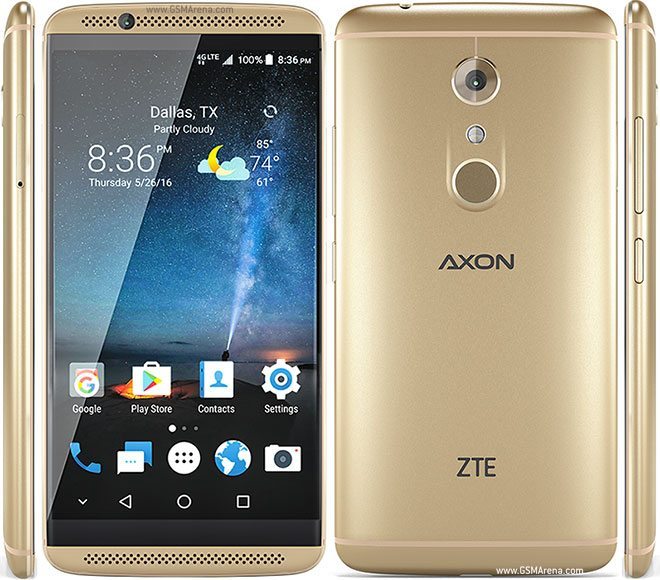
ZTE`s Smartphone (출처=GSMARENA)
Hyunjoo Kang / jjoo@olednet.com
Recently, DigiTimes reported that Chinese smartphone companies are discussing supply with Taiwanese panel companies due to panel shortage. According to the report, executives of Chinese smartphone companies such as ZTE, Vivo, GiONEE, etc. and Chinese panel companies including Truly recently met with Taiwanese panel companies, AUO, Innolux, Chunghwa Pictures Tubes, etc.
The reason that Chinese smartphone companies are experiencing the panel shortage is known to be because their panel suppliers reduced smartphone panel production due to too low prices. However, DigiTimes reported that Huawei is receiving relatively sufficient amount of panels from BOE, Tianma, etc.
Meanwhile, Skyworth, one of key Chinese OLED TV selling companies, showed lower than anticipated OLED TV sales in financial year of 2015 which ended in March. Chinese media reported that this is due to insufficient supply of OLED panel from LG Display.
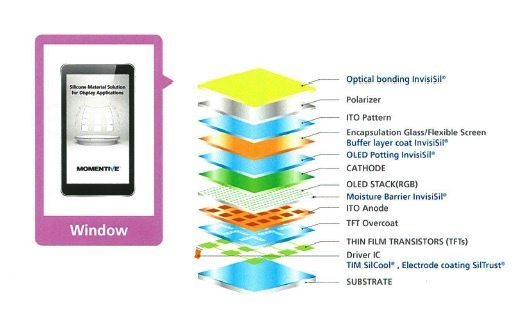
Momentive demonstrated InvisiSil at SID 2016 (Source = Momentive)
Hyunjoo Kang / jjoo@olednet.com
One of the issues of flexible OLED actualization is acrylic’s vulnerability against lower temperature, and silicone is emerging as a solution. Meanwhile, Momentive is attracting attention with their promotion of silicone based InvisiSil.
One of the key encapsulation technologies for flexible OLED is TFE (thin film encapsulation) that laminates thin inorganic and organic films, used by Samsung Display. Of these, organic material is formed through inkjet OLED process using acrylic materials. However, acrylic organic materials are easily broken under 0 ℃, which leads to difficulties in producing flexible OLED using these. However, silicone based materials can withstand up to -40 ℃ and are considered strong candidate for acrylic replacement.
Momentive is a company that develops such silicone based materials. In SID 2016 (22-27 May), Momentive opened an exhibition booth and presented InvisiSil Snap Cure silicones. The InvisiSil Snap Cure systems can cure rapidly at room temperature without UV exposure.
Momentive explained that for flexible AMOLED panel to move past edge type and toward true flexible such as foldable and rollable, silicone is much better suited than acrylic. Furthermore, they added that silicone based materials have yet revealed any disadvantages compared to acrylic, and that it is in development for continued application to mass production.
Hyunjoo Kang / jjoo@olednet.com
The LG Stylus 2 Plus, the latest edition of its large-format, begins its global rollout with its launch today in Taiwan. This product will make its way to customers in other key markets in Asia, South America, Europe and North America in the weeks to come.
While the design remains consistent with the original LG Stylus 2, the smartphone features significantly better performance than its original cousin. At its heart is a faster 1.4GHz Octa-Core processor, a sharper 5.7-inch Full HD IPS display and higher resolution 16MP rear camera, with a flash on both sides for clearer photos and videos in low light. Other improvements include more RAM and the choice of colors: Titan, Gold and Brown.
This model carries over the nano-coated stylus which provides the tactile feedback of a quality fountain pen when writing on the screen. Using the stylus is made even more useful with UX features such as Quick Memo and Off Memo and Pen Keeper, which displays a warning when the stylus strays too far from the phone, or vice versa.
“This product offers users a spacious screen, powerful multimedia functionality and a writing experience at a competitive price,” said Juno Cho, president of LG Electronics and Mobile Communications Company. “It’s just another example of the constant refinements we’re making to our mobile products to give LG customers a wide variety of features and designs to choose from.”
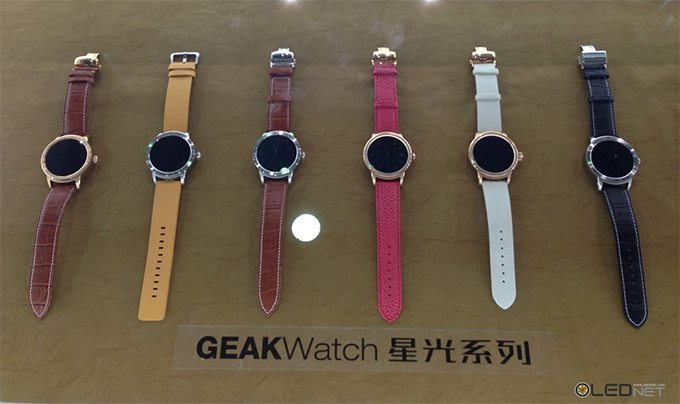
GEAK Watch 3rd at SID 2016
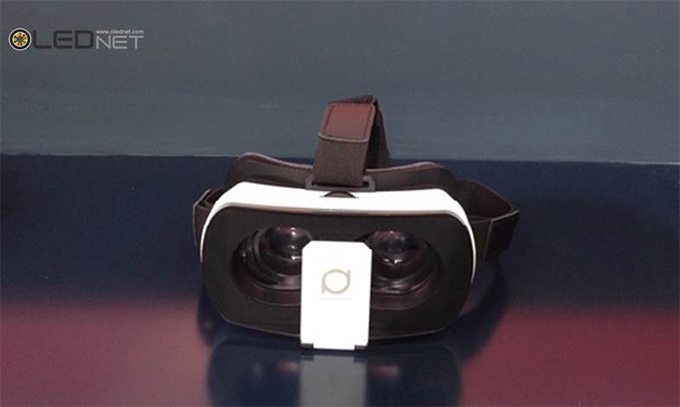
DeePoon`s New VR Device ‘M2’
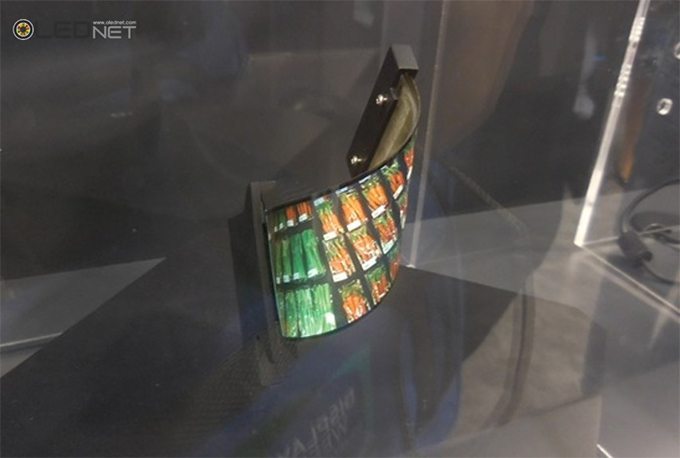
a Flexible OLED Display at BOE Booth (San Francisco = OLEDNET)
During the SID 2016, not only Samsung Display and LG Display, but other companies including BOE, Japan Display (JDI), and Tianma also presented OLED. The extent of OLED by Korea, China, and Japan drew much attention.
In SID 2016 (22-27 May), these companies exhibited many new OLED panels for diverse devices such as smartphone, VR, and TV.
Samsung Display revealed rollable panel, diverse 5 inch level OLED panel products such as VR panel with 806 ppi, the highest value within the industry, and Bio Blue, a VR panel which minimized harmful blue light.
LG Display showed 77 inch UHD OLED panel for TV, 55 inch dual side panel for signage, 65 inch concave OLED, and demonstrated their strength as the leader in large size OLED panel.
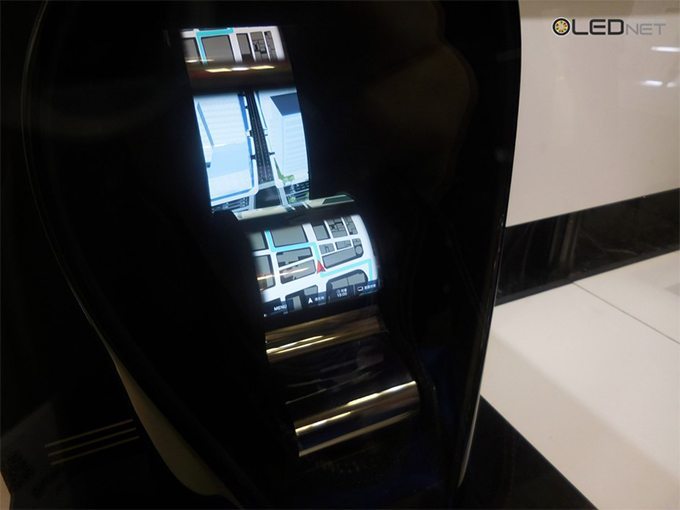
a Flexible OLED Display at JDI Booth (San Francisco = OLEDNET)
At this exhibition, BOE revealed flexible OLED display for mobile device. Particularly, the 4.35 inch foldable panel is BOE’s first. The product’s bending radius of 5 mm and has the brightness of 350 nits.
Tianma displayed 55 inch on-cell touch equipped TFT-HD AMOLED panel. The flexible display has 270 ppi and bending radius of 20 mm.
JDI exhibited flexible plastic OLED (POLED). The 5.2 inch product has 423 ppi with the resolution of 1080 x 1920.
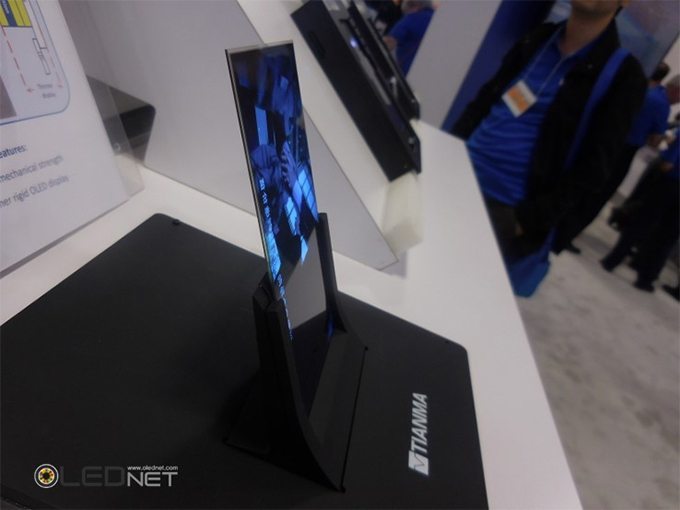
an OLED Display for Mobile at Tianma Booth (San Francisco = OLEDNET)
Quantum dot sector also presented a strong front against OLED in SID 2016. Nanosys and QD Vision exhibited OLED TV and quantum dot TV next to each other and presented merits of quantum dot.
According to QD Vision, quantum dot could consume 50% less power compared to OLED. Nanosys explained that while white OLED panel TV shows brightness of only up to 500 nits, their own quantum dot TV can actualize 1,200 nits of brightness.

SDC Showcasing an 806ppi OLED Panel for VR ( San Francisco = OLEDNET )
Hyunjoo Kang / jjoo@olednet.com
Samsung Display is drawing attention with 5 inch level VR (virtual Reality) device display with the highest resolution in the industry. The company also displayed Bio Blue, which minimized blue wavelength harmful to human eye.
At Society for Information Display 2016 ( SID 2016, 22-27 May), Samsung Display drew visitors’ attention with their new panel products such as OLED for VR and rollable OLED. At the exhibition booth, Samsung Display presented new 5.5 inch panel. The panel’s resolution, 806 ppi, is the highest pixel density of the 5 inch level VR panels published so far. The resolution is 3840 x 2160 with 306 nit brightness and 97% color gamut.
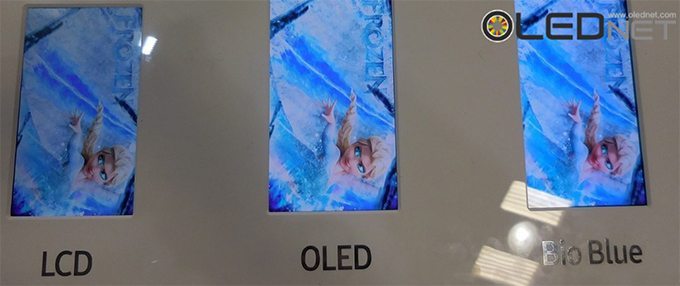
SDC`s ‘Bioblue’ (Sanfrancisco = OLEDNET)
Additionally, Samsung Display revealed another OLED panel for VR named Bio Blue. Bio Blue minimized harmful blue light by adding light blue to the existing RGB pixel structure. Displaying Bio Blue, the company emphasized that OLED is better for eye health compared to LCD. Of the total blue spectrum, the proportion of blue light harmful to human eye is 66% for LCD and 32% for AMOLED. Samsung Display added that AMOLED will be able to reduce this figure to 6% in future.
Samsung Display exhibited diverse OLED panels including 5.7 inch rollable and panel for notebook use.

a Slide from JDI Hiroyuki Ohshima CTO`s Keynote (San Francisco =OLEDNET)
Hyunjoo Kang / jjoo@olednet.com
CTO of JDI , Hiroyuki Ohshima, estimated that the display will evolve to flexible and human friendly, and emphasized that LCD is not suitable for flexible
During his keynote session in SID 2016 (22-27 May), Ohshima discussed the future of display. He explained that the display will evolve to System Integrated Display that combines different technologies and toward flexible.
Display is expected to become more interactive with human body. Beyond touching the screen with fingers, biological signals will be recognized such as heartbeat, eye gaze, fingerprint, and palm print. Through these, display will evolve into an input device that moves deeper into people’s lives.
For these to become a reality, Ohshima explained that diverse technologies such as touch, recognition, security, health care function, pen input need to be applied to the display. He stressed that display is heading toward flexible and noted LCD’s limitation regarding this issue.
Ohshima told the attendees that as LCD requires backlight and glass substrate is used, it is not suitable to actualize flexible panel. For OLED, it is expected to move forward to flexible and foldable exceeding ultra-thin and curved. However, he added that OLED still has several issues that need to solved including not being able to follow LCD in terms of pixel density.
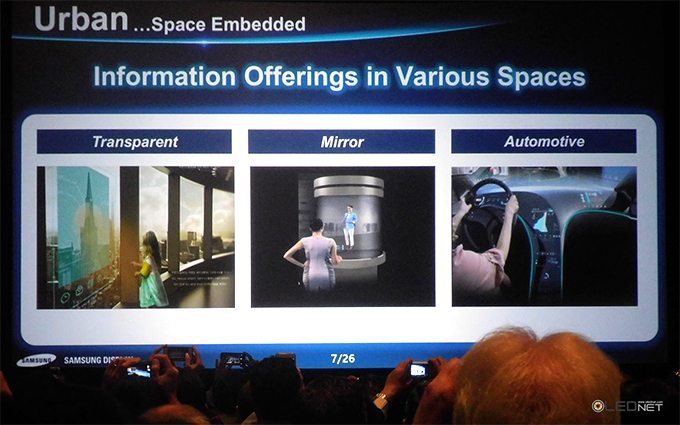
a Slide from Samsung Display EVP`s Keynote at SID 2016 (San Francisco = OLEDNET)
Hyunjoo Kang / jjoo@olednet.com
As a keynote speaker for SID 2016, Samsung Display ’s Executive VP and Chief of Research Center, Dr. Sung-Chul Kim explained that display will expand human life experiences through application to automotive, window, mirror, etc. and emphasized that AMOLED will become a key solution for this.
During his keynote session in SID 2016, Kim explained display related technological issues and AMOLED’s advantages. In particular, he highlighted AMOLED’s characteristics suitable for flexible.
Displays that can turn from a wall or window into an information display simultaneously require flexibility and hardness. Kim also explained curved display is suitable for automotive uses. In terms of mirror display, AMOLED is suitable as superior color gamut is required.
Kim added that for realistic image required by VR (virtual reality) and others requires ‘driving tech’. He explained that foldable, rollable, deformable, and stretchable displays will produce more attractive devices, and provide new experiences through VR, automotive, digital signage, etc.
Kim told the attendees that display is a window to communicate with the world and expands lives. He emphasized that AMOLED is the key solution for future display, and will bring more opportunities than expected.
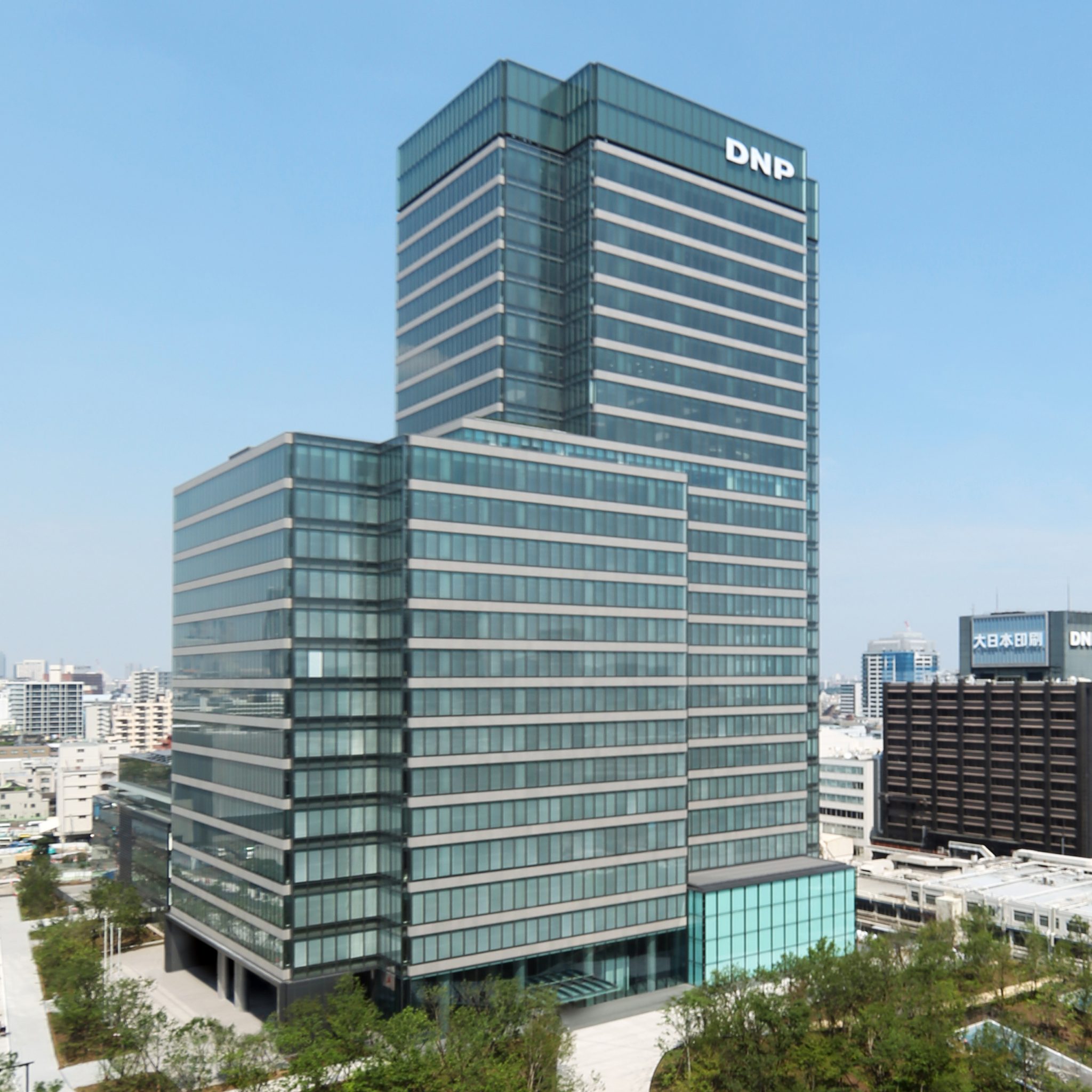
Source = Dai Nippon Printing
Hyunjoo Kang / jjoo@olednet.com
Japan’s Nikkei recently reported that Japan’s Dai Nippon Printing will expand their capa. by 3 times. Dai Nippon Printing occupies 50% of the global OLED evaporation mask market as a dominating leader of the market.
Dai Nippon Printing is planning to invest USD 54.6 million in stages until 2020. Through this, the company is striving to strengthen their position as the evaporation mask leader in the OLED market where a rapid growth is expected.
Evaporation mask is used when red, green, and blue emitting materials are coated in order to produce OLED panel production. The performance of the mask is directly related to increasing the panel resolution. Dai Nippon Printing is aiming to increase their client base in future and achieve revenue of JPY 30,000 million in 2020, which is 3 times higher than the current revenue.
Nikkei also reported that Japan’s Screen Holdings began manufacturing equipment to mass produce OLED panel. The company only handled test production manufacturing equipment, but they recently developed product compatible with Gen6 substrate, and began supplying to panel mass production line from April. The manufacturing equipment is used to coat polyimide, high performance resin to produce OLED panel.
Display related Japanese industry, following Korean and Chinese, is also busy to seize the OLED market, which is expected to rapidly grow.
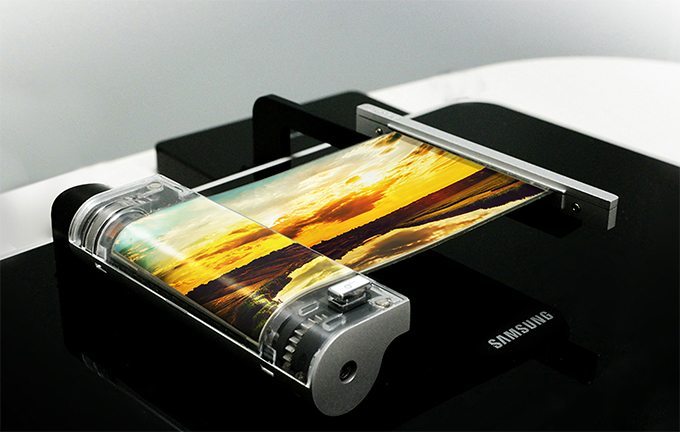
Rollable AMOLED at SID 2016 Samsung`s Booth (Source = Samsung Display)
Hyunjoo Kang / jjoo@olednet.com
Samsung Display and LG Display will showcase the technologies for next-generation displays at the 2016 Society for Information Display( SID 2016 ) conference, which is being held at the Moscone Convention Center in San Francisco from May 22 to 27.
LG Display’s next-generation technologies including OLED TVs and automotive displays will be on show at the company’s booth from May 24 to 26 At this year’s SID 2016 , LG Display is placing its emphasis on the advantages of OLED and in particular the superior picture quality it offers along with its unlimited potential in application and design. The company will present its 77-inch Ultra HD OLED TV panel which provides the same level of color gamut in displays used by film-editing professionals.
It boasts unbeatable picture performance with perfect black expression and improved brightness by applying the High-Dynamic-Range (HDR) technology. LG Display will also showcase future concept displays such as 55-inch double-sided and 65-inch concave OLED displays for signage to meeting customers’ expectation for what’s coming next.
For customers in the rapidly rising automotive display market, LG Display will showcase its automotive display product line-ups from cluster displays to the Center Information Display (CID), including a 12.3-inch curved plastic OLED display and a 12.3-inch LCD panel realizing over 1,000 nit of brightness.
LG Display will also highlight its lifelike picture quality 31.5-inch 8K4K monitor and 14-inch Ultra HD resolution notebook panel embedded with high resolution and touch functions. In addition, the company will showcase a range of displays featuring its exclusive touch embedded technology, Advanced In-Cell Touch (AIT), from the 6-inch mobile display, and 9.2-inch and 10.3-inch automotive displays that feature touch response even with a gloved hand, to the world’s first touch-enabled 15.6-inch notebook panel and 23-inch monitor panel.
Hyunjoo Kang / olednet.com
Samsung Electronics introduced the largest Galaxy S7 edge in Europe, mega-sized LED signage—80 meters high and 40 meters wide, in Sokol, Moscow, Russia
The Galaxy S7 edge LED signage can be spotted from as far as Moscow’s Gidroproekt building which is located 2.2 kilometers from the site. The LED signage is situated on the side of main road that connects downtown Moscow and Sheremetyevo International Airport, an area that sees approximately 800,000 people per day.
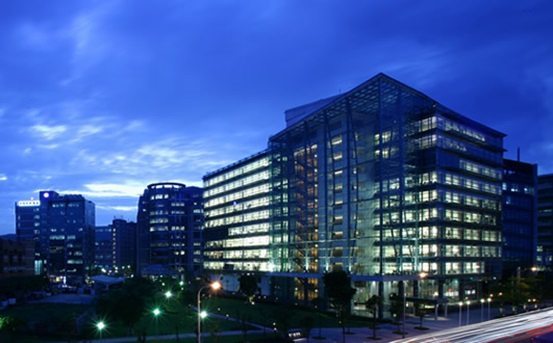
Foxconn buys Nokia mobile phone business (Source: Foxconn)
Hyunjoo Kang / jjoo@olednet.com
Foxconn, which became a focus of global attention with the Sharp takeover, bought Nokia ’s mobile phone business.
It is reported that FIH Mobile Ltd, a subsidiary of Foxconn, bought Nokia’s feature phone business from Microsoft for USD 350 million. Accordingly, Foxconn now controls Nokia feature phone’s manufacturing, sales, and distribution. Foxconn also signed strategic partnership with HMD global that oversees product development and sales. HMD global is expected to invest USD 500 million for the development of Android-based smartphone, tablet, and feature phone for the next 5 years.
Foxconn took over Sharp in March, earlier this year. With this takeover, Foxconn is estimated to acquire LCD mass production line and also gradually be equipped with OLED mass production line for mobile device and TV. DigiTimes research estimates that Foxconn will mass produce OLED panel for smartphone from 2018 and begin OLED panel mass production for TV from 2021.
Some sections of securities industry have suggested that Foxconn’s takeover of Sharp allows for vertical integration of Sharp panels, and business expansion to include set such as smartphone and TV will be possible.
That Foxconn purchased Nokia’s mobile phone business after strengthening display mass production area reinforces this idea. It could be understood as a resolve to renew itself as a set company with their own brand surpassing their main business OEM.
Some are anticipating Nokia’s return as the mobile phone leader of the past with the Foxconn’s purchase of Nokia’s mobile phone business. However, the business still struggled even after Microsoft’s takeover move in 2014 worth EUR 5,400 million. As such, many believe that it will not be easy for Nokia to reclaim their former success.
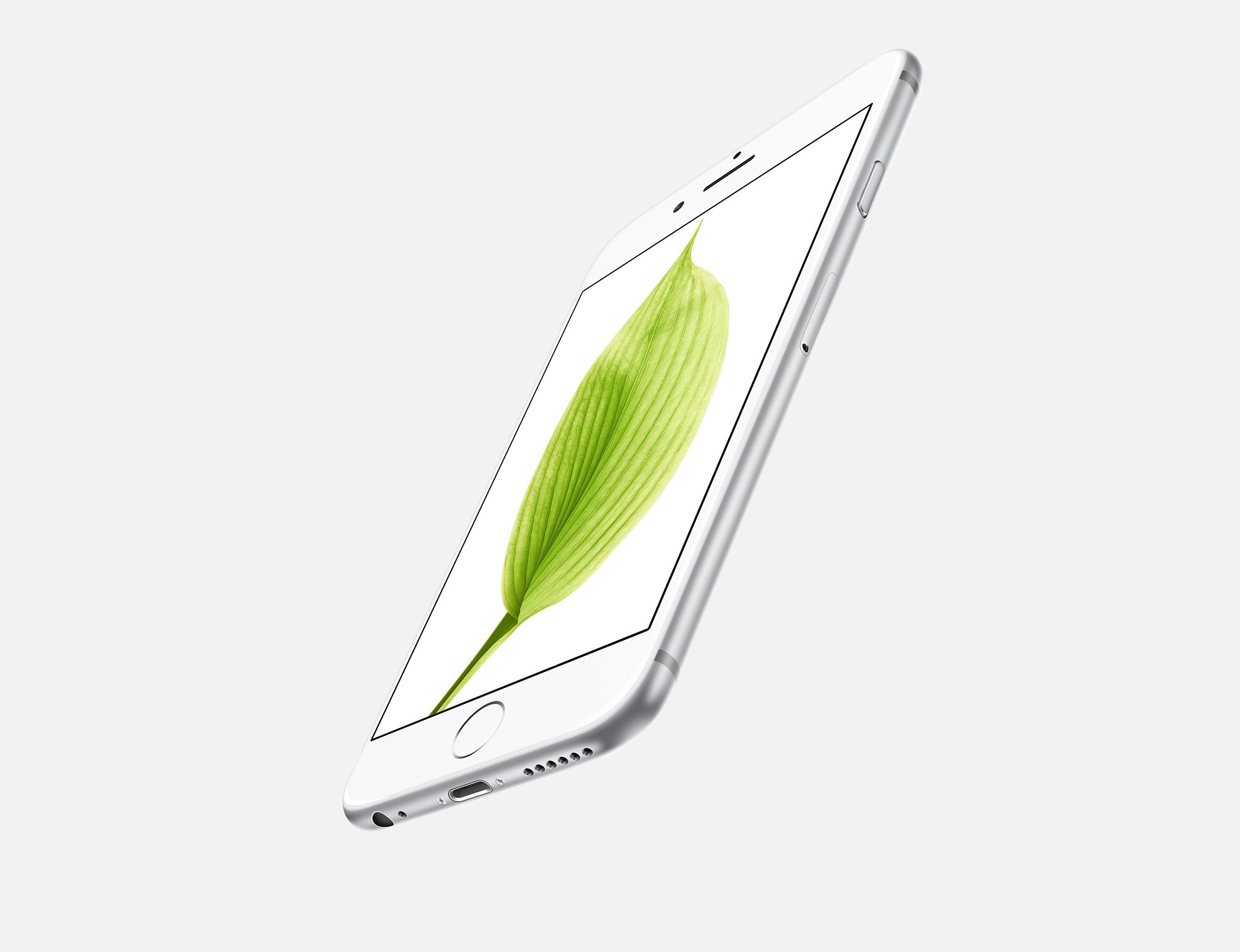
Source = Apple
Hyunjoo Kang / jjoo@olednet.com
Apple announced the opening of a new office in Hyderabad that will focus on development of Maps for Apple products. This investment will accelerate Maps development and create up to 4,000 jobs.
“Apple is focused on making the best products and services in the world and we are thrilled to open this new office in Hyderabad which will focus on Maps development,” said Tim Cook. “The talent here in the local area is incredible and we are looking forward to expanding our relationships and introducing more universities and partners to our platforms as we scale our operations.”
This company has been continually updating and adding new features to Maps, including 3D views, the Flyover feature and tools to help customers find convenient places to shop, eat and explore nearby areas. With iOS 9 Apple added Transit, offering a combination of trains, subways, buses and walking, which is already available for more than 300 cities around the world.
The new facility, located on the Waverock campus, will provide a world-class, LEED-certified home for the expanding Maps team.
“We are honored Apple chose Hyderabad as a home for its Maps development office,” said Telangana Chief Minister Kalvakuntla Chandrashekar Rao. “This will create thousands of jobs here and is a testament to our proactive approach, quality infrastructure and the excellent talent base we have in the region.”
“Apple is one of the most innovative companies in the world and we are very proud they chose us to partner with for this important project,” said Anup Jindal, RMSI’s CEO. “We are experts in geospatial data and we will be hiring thousands of people from the local area to support this effort.”
Across India, Apple supports over 640,000 iOS app developer jobs and other positions related to the iOS ecosystem.

(Source = SID)
Hyunjoo Kang / jjoo@olednet.com
In May 24-26, during the SID Display Week 2016 in Moscone Convention Center, San Francisco, UBI Research will be operating a booth, open for business consultation.
At the exhibition booth, UBI Research will carry out meetings regarding their OLED Reports and consulting service. Visitors will be able to receive detailed information on reports published by UBI Research and consultation. The company will be introducing their methodology on investigating latest news in OLED industry and customer benefits.
UBI Research invites the interested parties to their booth at SID 2016. The company added that this will be an excellent opportunity to obtain important insights on OLED industry, and everyone is invited to visit their booth.
Interested visitors will be able to meet UBI Research at booth #409 in SID 2016 exhibition at Moscone Convention Center. Booth will be in operation for 3 days in May 24-26. Pre-arranged meetings are welcome.
For more details, please contact marketing team manager Hana Oh (hanaoh@ubiresearch.co.kr, + 82 2 577 4940).

DeePoon `s VR Device
Hyunjoo Kang / jjoo@olednet.com
DeePoon , Chinese VR (virtual reality) company, is launching a new VR device equipped with Samsung Display’s AMOLED panel in June.
Unlike Korean and Japanese companies such as Samsung Electronics and Sony that showed AMOLED VR already, Chinese VR companies are mostly releasing LCD equipped device. As one of the few Chinese companies that sticks to AMOLED, DeePoon is noteworthy.
At the CES Asia 2016 exhibition booth (May 11-13), DeePoon presented M2, AMOLED equipped VR device, which is to be released in June. M2, with 2K, improved picture quality from previous model E2. It is also an all-in-one type that can be linked to both mobile device and PC.
This company explained that OLED can actualize higher Hz figure compared to LCD, and demonstrates superior visual experience. They added that Samsung’s AMOLED panel was utilized, and emphasized DeePoon is the only Chinese company releasing AMOLED equipped VR device. In fact, at this event many Chinese companies presented LCD based VR. AltoTech introduced new VR product with FHD LCD panel which is expected to be launched in October.
EverDisplay (EDO), a key Chinese mobile OLED panel company, presented a beta version of AMOLED equipped VR device at CES Asia 2016. Following production of 3.2 inch 1K 400 ppi AMOLED for VR this year, EDO revealed plans to produce flexible based 800 ppi panel in 2019.

UBI Research hosts ‘OLED Night’ in San Francisco (Source = SID)
Hyunjoo Kang / jjoo@olednet.com
Key players of global OLED industry gathers in one place.
On 25 May at 6.30 pm (local time), UBI research is hosting OLED Night for key players of global OLED industry in Dobbs Ferry, San Francisco.
UBI Research organized this event to facilitate wider networking opportunity for leaders of the OLED industry. The company selected the date and location to coincide with the largest display industry event Society of Information Display 2016 in San Francisco.
The cocktail party event will be attended by Korean companies such as LG Display, Duksan Neolux, and Sunic System, as well as global display companies including BOE, CYNORA, Visionox, and UDC.
UBI Research explained that they are organizing the OLED Night for mutually beneficial opportunity for development in OLED industry to correspond with the SID 2016. The attendees will be able to discuss how to lead the industry and solidify their personal connections.
* invitation letter required.
Apple, to Use OLED More than Samsung Elec. from 2021 – UBI

UBI Research’s Yi is Analyzing Market related to Apple’s OLED Selection
Hyunjoo Kang / jjoo@olednet.com
A forecast that Apple will apply more OLED than Samsung Electronics from 2021 has been suggested.
On 13 May, UBI Research hosted OLED Investment Analysis Seminar titled The Effects that Apple will have on Display Industry in Seoul, Korea. At this event, UBI Research’s Choong Hoon Yi estimated future flexible OLED smartphone market share.
According to Yi, Apple is to begin releasing flexible OLED iPhone from 2017, and occupy 8% of the global flexible OLED smartphone market in that year. Following this, Yi analyzed that Apple will continue to increase market share each year to record 32% in 2020, same as Samsung Elec., and exceed Samsung Elec.’s 27% with 37% in 2021.
For 2015 and 2016, with the market share of over 70% of the global flexible OLED smartphone market, Samsung Elec. is dominating the market. However, Apple is expected to release OLED iPhone from next year, and iPhone market share is increasing within the smartphone market. Yi believes that Apple’s OLED usage will exceed that of Samsung Elec.’s.
UBI Research estimates that the smartphone market will grow at CAGR of 6% in 2016-2021, and overall shipment will increase. Of these, Samsung Elec. has been outdistancing Apple and greatly increasing the market share until 2013. However, since 2014, Samsung Elec.’s market share has been gradually decreasing while Apple’s is increasing.
At the seminar, Yi told the attendees that Apple is selling approximately 220 million units of iPhone per year, but the number is expected to increase to 300-million-unit mark and of 30% of that, 1,00-million-unit mark, are estimated to be OLED equipped products. He added that this will grow to 4,00-million-unit mark in 2020, and 80% of that is estimated to be OLED.
With Apple’s section of OLED, the competition for the product supply between global display companies is expected to be fierce. Yi forecast that Samsung Display will supply 60% of the demand, the second supplier 30%, and the rest 10%.
LG Display and Japan Display were likely to be the second and third suppliers. However, Apple’s steadfast partner, Foxconn took over Sharp and became a strong candidate for this position. Hence, 4 companies could end up supplying to Apple. Yi added that one company of JDI and Foxconn could be pushed out.
Panel companies’ mass production establishment investment for product supply for Apple is also being carried out. Samsung Display is expected to execute 45-60K investment in flexible AMOLED line this year. LG Display is carrying out Gen6 7.5K investment in Gumi, with prospect of additional 7.5K order this year.
JDI also announced smartphone AMOLED panel mass production in January 2016 aiming for mass production in 2018. There is a possibility of investment for AMOLED supply for iPhone. Yi also estimated that Apple will conclude OLED emitting materials company selection by this August or September.
Furthermore, Yi explained that a human eye is more sensitive to contrast compared to brightness. He emphasized that OLED, with its contrast ratio of 1,000,000:1 is a more human friendly display than LCD and its 3,000:1.
At the seminar, LG Economic Research Institute’s Senior Consultant Wookeun Lee also analyzed the market with the theme of The Effects that Apple’s OLED Selection will have on Korea and China’s Display Industry.
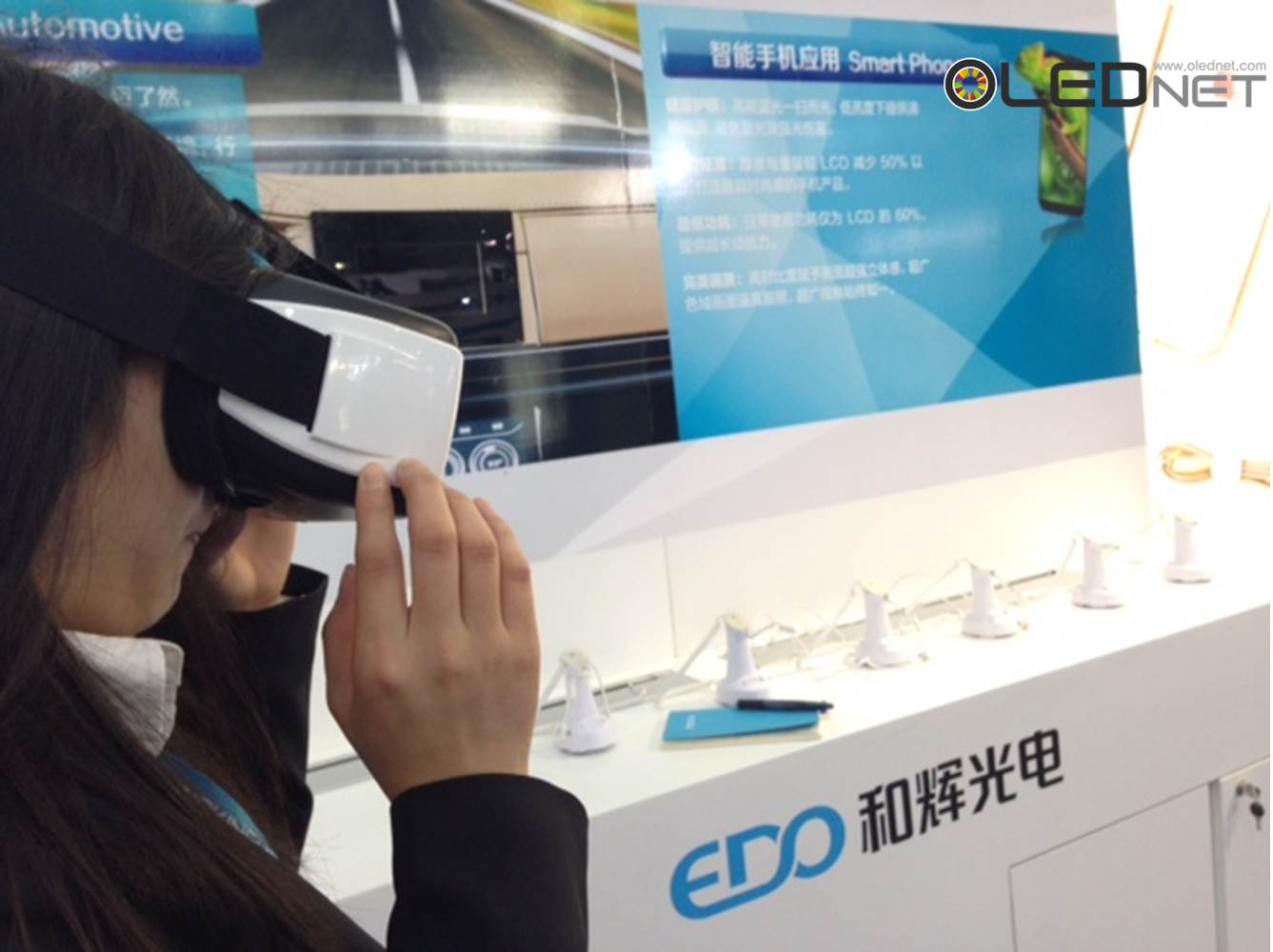
EverDisplay `s VR Device
Shanghai=Hyunjoo Kang / jjoo@olednet.com
EverDisplay (EDO), whose main force is mobile AMOLED, is accelerating its wearable market target.
In CES Asia 2016 (11-13 May) held in Shanghai, China, EDO presented VR (virtual reality) device equipped with their own AMOLED and revealed their roadmap in this market. The company displayed the VR device at the exhibition booth allowing the visitors to experience it. EDO explained that the device is a beta version, and although it has not been released, the picture quality is superior compared to LCD or LED equipped VR.
According to EDO, the company is planning to produce 3.2 inch 1K 400 ppi AMOLED for VR this year, and 3.5 inch 1.5K 600 ppi panel in 2017. Following this, the panel is to be improved to 2K 750 ppi in 2018, and EDO is planning produce flexible based 800 ppi panel in 2019.
EDO also revealed new AMOLED product in smartphone sector. In this exhibition, EDO showed 5.5 inch FHD panel that is already being mass produced, and flexible 6 inch panel to be mass produced in future.
Furthermore, the company exhibited new AMOLED panel in 3 types, 1.2 inch, 1.4 inch, and 1.41 inch, for smartwatch that will be consecutively launched from July. Of these, the 1.2 inch panel is expected to be used for Huawei’s smartwatch for women to be released in September.
CES Asia 2016’s participants greatly increased compared to last year, and 375 companies from 23 countries are taking part. Major companies such as Intel, Twitter, and BMW discuss wearable, VR, driverless cars, future of TV, etc. though conference.
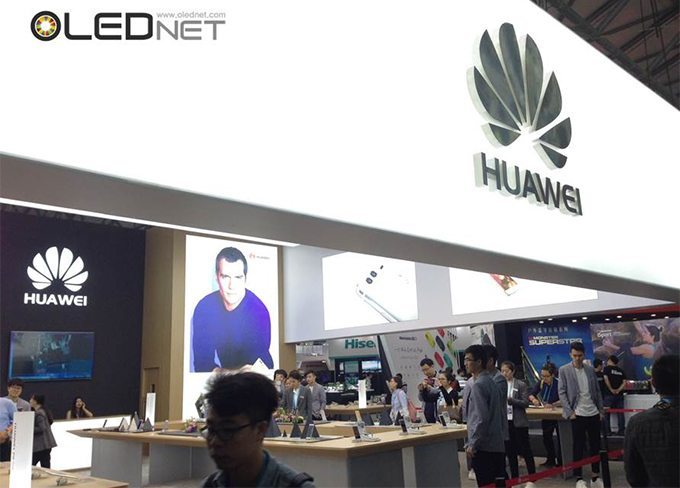
Huawei booth
Shanghai = Hyunjoo Kang / jjoo@olednet.com
Huawei is expected to release 1.2 inch AMOLED panel equipped smartwatch for women in September if early.
In CES Asia 2016 (11-13 May) held in Shanghai, China, Everdisplay (EDO) revealed that the 1.2 inch AMOLED panel product will be released in July, and Huawei will launch smartwatch for women equipped with this panel in September.
Previously Huawei released smartwatch for men equipped with EDO’s 1.4 inch AMOLED.
EDO, whose main focus is on AMOLED panel for mobile device, showed new AMOLED panels through this exhibition. EDO explained that of AMOLED panels for smartphone, 1.2 inch, 1.41 inch, and 1.4 inch panels are not yet released, and that 1.2 inch panel will be launched in July and 1.4 inch in 2017.
During this event, EDO also revealed 6 inch AMOLED panel to be mass produced in future and beta version of VR device equipped with their own AMOLED.
CES Asia 2016’s participants greatly increased compared to last year, and 375 companies from 23 countries are taking part. Major companies such as Intel, Twitter, and BMW discuss wearable, VR, driverless cars, future of TV, etc. though conference.

Source = BOE
Hyunjoo Kang / Reporter / jjoo@olednet.com
Although Samsung and LG both had smooth Q1 2016 for set businesses including TV, display sectors were different. The majority of the industry believes that global oversupply of LCD’s effects was great. Key LCD players in China, who could be seen as responsible for the LCD oversupply, also showed bleak performance. Key global LCD panel companies, including BOE and AUO, also revealed much reduced Q1 2016 profit.
On 28 April, Samsung Electronics and LG Electronics announced that the business profit in Q1 2016 improved. Samsung Electronics recorded KRW 6.68 trillion business profit, a 12% increase compared to Q1 2015. LG Electronics also announced operating profit of KRW 505.2 billion, up 65.5% from last year. Both companies emphasized favorable TV business.
On the other hand, Samsung and LG both received significant damages in display sector. In Q1 2016, Samsung Display recorded operating loss of KRW 270 billion. Samsung Display recorded a profit against expectations. However, the business profit of KRW 39,500 million in Q1 2016 is a 94.7% fall from last year.
Not only Samsung and LG, but display leaders in Greater China region also showed much diminished performance. BOE, which has been aggressively investing in large area LCD mass production, showed a 6.7% increase from previous year with approximately CNY 12,300 million for Q1 2016 revenue. In Q1, BOE showed business profit of CNY 108 million, but profit ratio plummeted compared to the same period in 2015. The profit ratio in Q1 2016 fell to 0.8% from 8% in Q1 2015. On 28 April, Taiwan’s AUO also revealed TWD 5.58 trillion business loss in Q1 2016.
BOE and AUO are both key players within the global LCD TV panel industry, and within the top 5 in the Greater China region. BOE, in particular, is chasing the leader LG Display with aggressive product supply. The fact that BOE recorded dismal results despite this is analyzed to be due to price fall due to the oversupply of LCD and spread of OLED among others.
For global OLED leader for mobile device, Samsung Display, was known to have recorded deficit of approximately KRW 900 billion in LCD despite Samsung Electronics’ strength in OLED smartphone. Essentially, LCD eroded the profit that OLED brought. For LG Display, experts believe that as a leader of OLED for TV market, the company could avoid deficit by making up for the damages from the LCD price fall.
An expert of the display industry explained that LCD leaders such as BOE might have expanded market share with the product supply, but would have received significant damage in profit ratio. However, he explained that compared to 30 inch LCD panel, 50 inch and 60 inch level large area LCD panel received less fallout from the price fall. He then estimated that as the large size TV demand is increasing, the LCD industry could be improved in Q2.

Source = Samsung Elec.
Samsung Elec. today announced financial results for the first quarter ended March 31, 2016. Samsung’s revenue for the quarter was KRW 49.78 trillion, an increase of 5.7 percent YoY, while operating profit for the quarter was KRW 6.68 trillion, an increase of 12 percent YoY. In the company’s earnings guidance disclosed on April 7, 2016, Samsung estimated first quarter consolidated revenues would reach approximately KRW 49.0 trillion with consolidated operating profit of approximately KRW 6.6 trillion.
The first quarter saw overall earnings growth led by the early launch and successful sales of the flagship Galaxy S7 and S7 edge, improved memory product mix, expanded 14nm supply of System LSI products and increased sales of OLED panels.
Overall earnings of the Display Panel business decreased due to a sharp decline in LCD panel earnings although earnings of OLED panels improved mainly driven by the Galaxy S7. The LCD business experienced temporary yield issues while adopting new process technology as well as TV panel price decline.
The IT & Mobile Communications (IM) Division saw a substantial earnings improvement both YoY and QoQ mainly driven by the early launch of Galaxy S7 and its strong sales and improved cost efficiency through the streamlining of mid-to-low-end smartphone lineups. Although the company had a one-time royalty settlement expense in the quarter, the impact on operating profit was equivalent to less than 1 percent of IM revenue.
The Consumer Electronics (CE) Division achieved significant earnings growth YoY led by expanded sales of premium TV models such as SUHD TV and Curved TV in developed markets, and also a notable sales increase of premium home appliance products in North America.
In the second quarter, the company expects its solid performance to continue led by steady earnings in the Mobile and Semiconductor businesses plus improvement of the CE and Display Panel businesses.
The IM Division is expected to secure solid earnings by expanding sales of the Galaxy S7 along with strong profitability of mid-to-low-end products. The CE Division expects to see improvements as seasonality should improve air conditioner sales, while flagship SUHD TV sales are expected to increase.
The Display Panel segment is expected to see earnings improvement compared to the previous quarter as LCD profitability is forecast to rise on stabilized TV panel yields and improved demand and supply conditions.
For the Display Panel business, OLED earnings are expected to improve due to growth driven by an increase in flexible and high-resolution panels. LCD panel profitability is expected to improve in the second half driven by high valued-added products amid better supply and demand conditions.
For the IM Division, the company expects the sales of flagship products to increase YoY, especially with strong demand for flagship products such as the Galaxy S7 and new model launches in the second half. In addition, the company will continue to manage cost efficiencies by streamlining its smartphone lineups.
For the CE Division, the company will focus on profitability by increasing premium products such as SUHD and Curved TVs. With the Olympics and other global sporting events forecast to drive global demand for large-size TVs, the company expects strong improvements in operating results YoY.
Meanwhile, capital expenditure (CAPEX) for the first quarter was KRW 4.6 trillion, which includes KRW 2.1 trillion for the Semiconductor business and KRW 1.8 trillion for the Display Panel business. The annual plan for CAPEX has not yet been confirmed but is projected to increase slightly compared to last year’s CAPEX based on various business opportunities. CAPEX for the Display Panel segment may increase as the company sees strong market demand for OLED panels. DRAM CAPEX will remain flexible based on supply and demand conditions but is expected to be lower than 2015.
The Display Panel segment posted KRW 6.04 trillion in consolidated revenue and KRW 0.27 trillion in operating loss for the quarter.
In the first quarter, shipments of OLED panels improved from the previous quarter, driven by launches of new high-end smartphone panels and strong demand for smartphones in the mid-to-low-end space. Conversely, the company’s LCD panel shipments decreased, affected by weaker demand during low seasonality.
Looking ahead to the second quarter, for OLED panels, Samsung hopes to actively address demand for new products and expand its customer base, while focusing on improving profitability of LCD panels by increasing shipments of strategic premium products such as UHD and large-size panels.
In 2016, the company expects OLED demand will continue to rise helped largely by growth in the mid-to-low-end smartphone segment while the LCD market will continue to be over supplied. In this market, Samsung hopes to actively address demand for new products, increase sales of value-added products and reinforce its leadership by developing new panel applications.
The IM Division – comprising the Mobile Communications and Networks Businesses – posted KRW 27.60 trillion in consolidated revenue, a 6.6-percent YoY increase, and KRW 3.89 trillion in operating profit for the quarter, a 42-percent YoY increase.
While smartphone and tablet demand saw a slight QoQ decrease due to seasonal effects, overall operating profit for the Division increased. This increase was largely due to the early launch and strong global performance of the flagship Galaxy S7 and S7 edge, as evidenced by robust sell-out figures and low inventory levels compared to their predecessors. A streamlined mid-to-low-end smartphone lineup also contributed to improved profitability.
Looking ahead to the second quarter, while demand for smartphones and tablets is forecast to remain flat due to continued weak seasonality, the worldwide rollout of the latest flagship models as well as an increase in shipments of the mid-to-low-end Galaxy A and J series are expected to help the company maintain robust sales momentum and profit.
As for the year ahead, Samsung anticipates softening demand in the smartphone market and negative growth in the tablet market. The company will reinforce its leadership in the premium smartphone segment on the back of the Galaxy S7 and S7 edge, while continuing to increase volume and improve profitability in the mid-to-low-end segment. In addition, the company will continue to expand the Samsung Pay service to global markets and look into new business opportunities.
For the Networks Business, the company will seek growth through the continued rollout of 4G LTE services in new markets around the world, including Southeast Asia.
The Consumer Electronics Division – encompassing the Visual Display (VD), Digital Appliances (DA), Printing Solutions and Health & Medical Equipment (HME) businesses – posted KRW 10.62 trillion in consolidated revenue and KRW 0.51 trillion in operating profit for the quarter.
In the first quarter, TV market demand decreased YoY due to weak seasonality and economic downturn in emerging markets. Earnings for the VD Business showed significant growth YoY, led by increased sales of premium products such as SUHD and Curved TVs.
For the appliances business, earnings improved compared to the corresponding quarter last year, led by continued growth in the North American market and increased sales of innovative premium products such as Chef Collection refrigerators and the Activewash™ washing machine.
In the second quarter, TV demand is expected to slightly increase riding on sports events such as the Olympics. The company plans to further improve profitability by continuing to focus on the new and improved SUHD TVs with the world’s only cadmium-free Quantum dot display, while also increasing sales of premium products such as UHD TVs and Curved TVs.
Digital appliance demand is expected to rise due to seasonal growth for air conditioners, despite global market uncertainties. Against this backdrop, Samsung aims to increase profitability by expanding sales of innovative premium products such as a newly launched air conditioner and Family Hub Refrigerator. Additionally, the company expects to improve performance by expanding its enterprise business including built-in kitchens and system air conditioners.

Source = LGD
Hyunjoo Kang / Reporter / jjoo@olednet.com
LG Display reported today unaudited earnings results based on consolidated K-IFRS (International Financial Reporting Standards) for the three-month period ending March 31, 2016.
LG Display announced its sixteenth straight quarterly operating profit at KRW 40 billion, which resulted from a thorough and profit-focused management based on differentiated technologies in response to a difficult market situation caused by panel oversupply and falling panel prices.
To deal with the difficult market situation, LG Display reduced the manufacturing of TV panels of 30-inches and below, which faced a large fall in prices, while expanding production of 40-inch range TV panels and those of 60-inch and above. The company also increased profitability by focusing on premium differentiated products based on M+ technology and maximized production efficiency in its overall operations by flexibly allocating production between IT product panels and TV panels.
Panels for TVs accounted for 38% of the revenue in the first quarter of 2016, tablets and notebook PCs for 24%, mobile devices for 23%, and desktop monitors for 15%.
With 77% in the liability-to-equity ratio, 153% in the current ratio, and 15% in the net debt-to-equity ratio as of March 31, 2016, the financial structure of the company remains stable.
LG Display will continue to increase profitability by concentrating on premium products such as Ultra HD TV panels based on its M+ technology to respond to a growing demand for large-size TVs, and make efforts to maximize efficiency by improving the manufacturing process in the second quarter of 2016.
Mr. Don Kim, CFO of LG Display, said “Panel shipments in the second quarter of 2016 are expected to increase by a mid-single digit percentage compared to the first quarter. Panel prices are expected to stabilize due to global sports events and an increase in new product shipments.”
◆ 65 inch, 30% of Total OLED Panel Shipment… 4-5 Trillion KRW Installation Investment
During the morning conference call on 27 April, LGD emphasized that the proportion of panel for ultra large size TV is increasing.
LGD reported that OLED panel shipment in Q1 2016 is slightly less than 200,000 units and estimated they will be able to ship 1 million units this year. While the 55 inch occupied over 85% of the total in 2015, in this year’s quarter the 55 inch proportion decreased slightly and 65 inch increased up to 30%.
LGD is operating OLED panel mass production line at 34,000 units per month as of H2 2015, and explained that the company will achieve Gen8 60,000 units capacity from Q2 2017. This year’s installation investment is expected to be of 4-5 trillion KRW. Along with this, LGD expects global oversupply of LTPS capacity, and revealed they will transform LTPS into plastic OLED (POLED) in stages.
LGD emphasized that the 55 inch FHD line’s golden yield has been almost achieved. The UHD section is also improving yield according to plan.

OLED Emitting Materials Market Forecast, Source: UBI Research’s 2016 OLED Emitting Materials Annual Report
Hyunjoo Kang / Reporter / jjoo@olednet.com
This year’s global OLED emitting materials market is expected to record US$ 677 million, approximately a 16% increase compared to 2015.
According to 2016 OLED Emitting Materials Annual Report, published by UBI Research, the global OLED emitting materials market is to grow at CAGR of 46%, and record US$ 4,323 million in 2021. The reasons for continued rapid growth include AMOLED equipped smartphone and large area OLED panel mass production increase. AMOLED panel equipped Galaxy S7 series is expected to be a hit this year, and AMOLED application of mainstream Galaxy series is also expected to increase compared to last year.
Furthermore, LG Display is planning to greatly increase this year’s large area OLED panel production. Chinese panel companies are also to actively begin AMOLED panel mass production from this year. Accordingly, the amount of OLED materials entering the global display market will increase.
The global demand for OLED emitting materials in 2016 is estimated to be approximately 38 tonnes. Of this, the amount expected to be used in Korea is approximately 36 tonnes, about 93% of the total demand. Basically, just the amount used by the 2 Korean OLED panel companies, Samsung Display and LG Display, is 93% of the global market. 64% of the total demand is Samsung Display, and 29% is LG Display.
In terms of revenue, of this year’s US$ 677 million, Samsung Display and LG Display are expected to occupy 94%.
As key Chinese panel companies, including BOE, are carrying out or planning AMOLED mass production line, China’s emitting materials demand is estimated to increase from 2017. Accordingly, of global OLED demand, China’s proportion is expected to increase each year, and Korea’s to decrease.
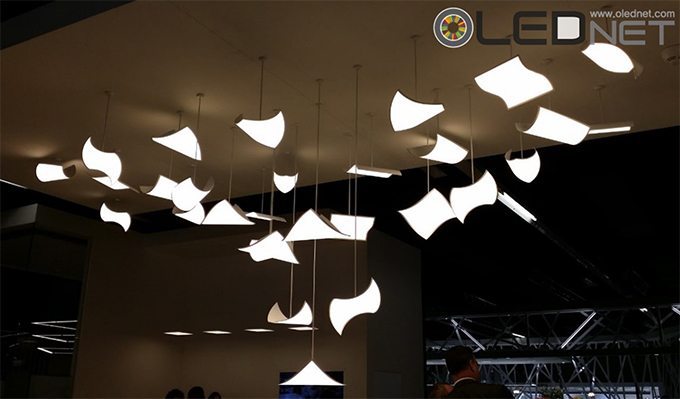
Hyunjoo Kang / Reporter / jjoo@olednet.com
Last year, the global LED market recorded its first decrease. This is analyzed to be due to aftermath of price competition. the spread of OLED is also one of the reason.
According to recent report of LEDinside, the global LED market recorded revenue of US$ 14.32 billion in 2015. This is a 3% fall compared to 2014, and this is the first time that this market recorded a fall.
This is judged to be due to intense price competition from the oversupply. In fact, 2015 LED’s ASP (average selling price) fell by over 40% compared to 2014 due to price competition.
Along with this, OLED lighting market growth is also becoming one of the factors in LED market depression.
OLED lighting panel is more expensive, and still has technical issues. However, it is light and flexible, and technical issues are gradually improving; OLED lighting market is continuously growing. Above all, that it can create a new market that did not exist in the existing lighting sector is receiving much attention.
IDTechEx forecasts that the OLED lighting panel market will reach US$ 1.8 billion in 2025.

Apple Watch(Source=Apple)
Hyunjoo Kang / Reporter / jjoo@olednet.com
With the trend of smartwatch market’s below expectation growth, some believe that this year’s Apple Watch shipment volume will decrease by 25% or more compared to last year.
On 19 April, international media such as OLED-a reported this citing KGI investment. KGI’s research estimates that 10,600,000 units of Apple Watch were sold in 2015, and forecast that much reduced 7,500,000 units or less will be sold this year. What is worse, last year’s sales volume is the total of 8 months sales, and this year’s forecast volume is for 12 months.
KGI suggested 2 reasons for this decrease.
First, this is because the wearable device market is still an immature one, formed not too long ago.
Second, the product itself still has many flaws. Also, of the wearable applications, there is a lack of killer application that pulls in consumers. Hardware also needs further improvements. Short battery lifetime and iPhone dependent functions are analyzed to be factors preventing the demand increase.
KGI forecasts the mass production of the next Apple Watch will begin in Q3 2016. Some estimates that the next product will be released before that in June this year. However, this product is more of an S model upgrade with few changes to the existing product. KGI estimated that the demand improvement will take place when 2017 product, the new product after this one is released.
Much like the not so optimistic forecast of Apple Watch, the smartwatch market growth is also not meeting the expectations. In 2016 Wearable Smart Device International Forum and Exhibition held in Seoul hosted by Korean Display Industry Association, IDTechEX’s analyst James Hayward explained that smartwatch market is growing at below expectations, and it is estimated that eye wear market, such as AR and VR, will have greater growth rather than watch.

WWDC will be held on June 13(Source : Apple)
Hyunjoo Kang / Reporter / jjoo@olednet.com
Apple announced that it will hold its 27th annual Worldwide Developers Conference (WWDC), hosting the creative talent behind the world’s most innovative apps, from June 13 through 17 in San Francisco. At WWDC, Apple’s developer community comes together from all corners of the globe to learn about the future of Apple’s four software platforms — iOS, OS X, watchOS and tvOS.
Monday’s kickoff events, including the keynote address, will be held at the Bill Graham Civic Auditorium. The rest of the week’s conference sessions will take place at Moscone West.
“With four innovative operating systems and a new, intuitive programming language powering over 1 billion devices worldwide, there has never been a more exciting time to bring our developer community together,” said Philip Schiller, Apple’s senior vice president of Worldwide Marketing. “WWDC 2016 is going to be a landmark event for developers who are coding in Swift, and building apps and products for iOS, OS X, watchOS and tvOS. We can’t wait for everyone to join us — in San Francisco or through the live stream.”
Developers can apply for tickets via the WWDC website (developer.apple.com/wwdc/register/) now through Friday, April 22 at 10:00 a.m. PDT. Tickets will be issued to attendees through a random selection process, and developers will be notified on the status of their application by Monday, April 25 at 5:00 p.m. PDT. For the second consecutive year, there will be up to 350 WWDC Scholarships available, giving students and STEM organization members from around the world an opportunity to earn a ticket to meet and collaborate with some of the most talented developers of Apple’s ever-growing app ecosystem (developer.apple.com/wwdc/scholarships/). Additionally, this year, we will provide travel assistance to up to 125 scholarship recipients to ensure aspiring developers with financial limitations have an opportunity to participate.
WWDC sessions will be streamed live throughout the week via the website (developer.apple.com/wwdc/live/) and through the WWDC app, giving developers around the world access to the week’s news and events.
Visit the Apple Worldwide Developers Conference 2016 website (developer.apple.com/wwdc/register/) to apply for a ticket, as well as for updates and more information.
Apple revolutionized personal technology with the introduction of the Macintosh in 1984. Today, Apple leads the world in innovation with iPhone, iPad, Mac, Apple Watch and Apple TV. Apple’s four software platforms — iOS, OS X, watchOS and tvOS — provide seamless experiences across all Apple devices and empower people with breakthrough services including the App Store, Apple Music, Apple Pay and iCloud. Apple’s 100,000 employees are dedicated to making the best products on earth, and to leaving the world better than we found it.
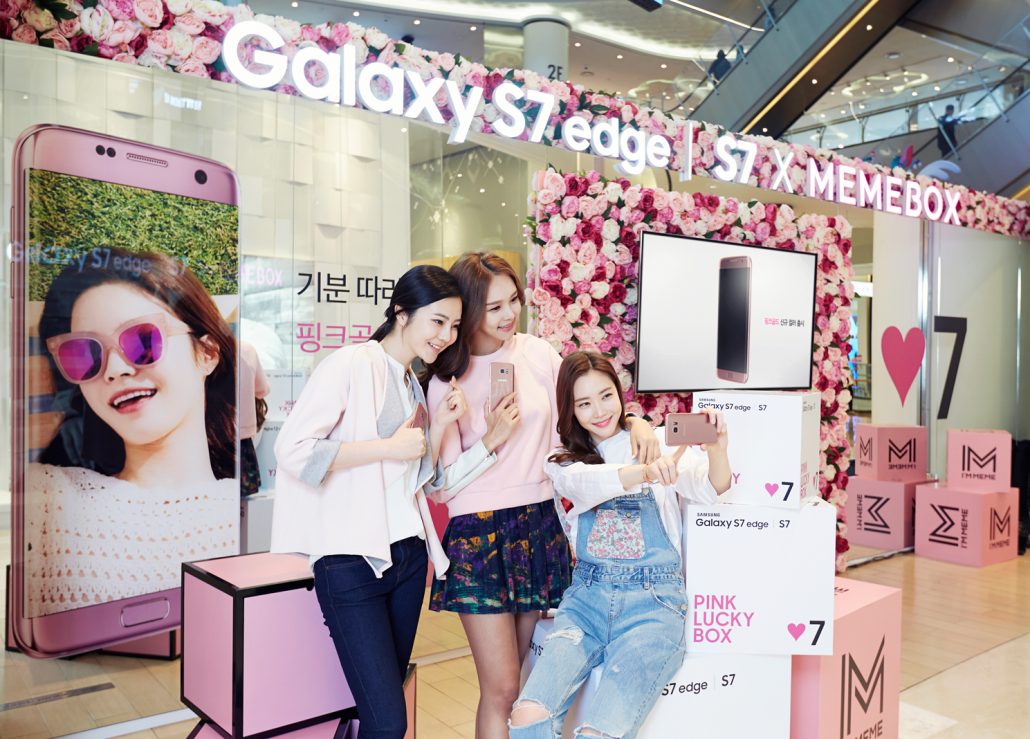
Galaxy S7 and S7 edge Pink Gold(Source : Samsung Elec.)
Samsung Electronics has released Pink Gold editions of the Galaxy S7 and S7 edge, bringing the total of available colors for the devices to five. Debuting in Korea on April 20, the Pink Gold Galaxy S7 and S7 edge will soon be available for customers in select markets.
Pink Gold was chosen as it, like the other colors available for the S7 and S7 edge, is a natural color that provides a sense of comfort. These hues glitter and shimmer as if illuminated from inside their glass surfaces.
In particular, the refined, skin tone-inspired Pink Gold color scheme is intended to soothe and incorporate a touch of gentleness, radiance and sophistication to the smartphones’ design.
As well as Pink Gold, the S7 and S7 edge are available in a choice of Black Onyx, Gold Platinum, White Pearl and Silver Titanium.

Source : UDC
Hyunjoo Kang / Reporter / jjoo@olednet.com
UDC (Universal Display) that is dominating the global OLED emitting materials market, recorded 11% reduced OLED emitting materials revenue in 2015 compared to 2014. Despite the decreased revenue, it maintained its top place in the market.
According to 2016 OLED Emitting Material Annual Report, published by UBI Research, UDC recorded approximately $ 113 million in 2015 OLED emitting materials revenue. In 2014, this company’s OLED emitting materials revenue recorded $ 127 million and led the global market, and maintained its position in 2015.
In particular, this company is a dominating presence in dopant materials sector. In 2015, UDC occupied 82% of the dopant materials sector, and the rest of the companies share the remaining 18%. Based on the phosphorescent patents, it is supplying phosphorescent red and green dopant to Samsung Display and LG Display.
Following UDC’s top place in 2015 global OLED emitting materials market in terms of revenue, Idemitsu Kosan ranked 2nd, and this was followed by Novaled, Dow Chem., and Samsung SDI. In 2013, Dow Chem. was at the top of the market, but since 2014 UDC overtook the leadership. In 2016, LG Display’s OLED TV mass production line operation rate, materials structure of Galaxy Note series to be mass produced in H2, and other factors are expected to affect the OLED emitting materials market.
UDC is scheduled to announce 2016 Q1 performance on 5 May (local time).
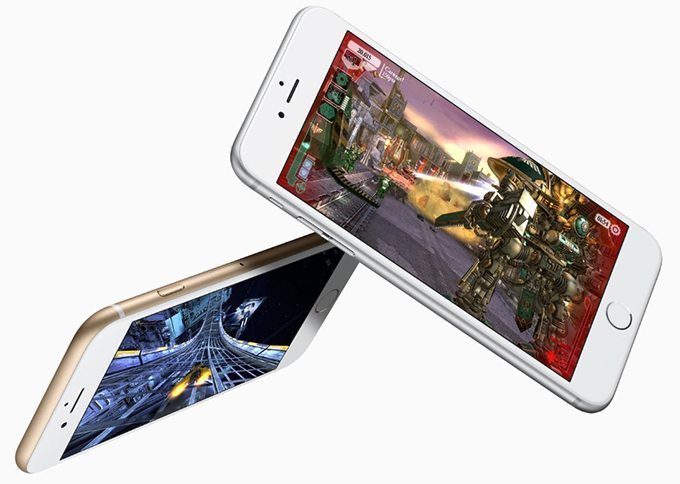
Samsung Display is Expected to Supply OLED for iPhone(Source: Apple)
Hyunjoo Kang / Reporter / jjoo@olednet.com
On 14 April, one Korean media reported that Samsung Display agreed to supply OLED for Apple’s iPhone, and the forecast that Samsung Display OLED will be used for iPhone 7S (TBA) to be released in 2017 is gaining traction.
According to the Maeil Kyoungjae article published on 14, Samsung Display and Apple signed agreement of OLED supply of 3 trillion KRW worth of 5.5 inch panel a year, with 3 years of supplier right. Subsequently, it is known that Samsung will carry out new investment of total 10 trillion KRW for Gen6 flexible OLED exclusive line A3 factory, and supply 100 million units of OLED panel a year for 3 years from Q2 2017. The majority of the industry estimates that Apple will begin application of this panel from the model to be released in H2 2017.
No official confirmation is Samsung Display’s position. However, it has been widely known within the industry that Samsung Display has agreed to supply OLED for Apple from next year. OLEDNET analyzed whether Samsung Display’s OLED application to the new 2017 iPhone is possible.
UBI Research’s analysis of key Korean OLED manufacturing companies’ Financial Supervisory Service public announcements shows that the volume Samsung Display ordered for A3 line expansion is judged to be 30K. Samsung Display’s current A3 line is 15K volume. When the newly ordered 30K volume is established, the total volume becomes 45K.
1K equals 1,000 units of glass substrate per month. If 1 substrate can produce approximately 300 units of panel, 45K A3 line can mass produce 162 million units of OLED panel per year. Global iPhone sales volume is about 200 million units per year. For Samsung Display to supply about half of this volume, approximately 100 million units a year, the 45K line is enough.
The problem is that Samsung Display does not supply OLED to Apple only. UBI Research analyzes that when OLED panels of Galaxy series for Samsung Electronics, Samsung Display’s biggest client, is considered, 45K volume is not enough; at a minimum 60K is required to satisfy the demand of both Samsung Electronics and Apple.
UBI Research’s Choong Hoon Yi forecast that if Samsung Display carries out additional orders regarding A3 line expansion within this year and is equipped with over 60K volume, the company will be able to handle half of iPhone’s annual OLED supply at a minimum. He explained that the 45K could be insufficient to supply OLED for both Galaxy and iPhone series. Yi added that Samsung Display can at least supply a small volume of OLED to Apple, and have them be applied to the early batch of iPhone 7S (TBA) in H2 2017.
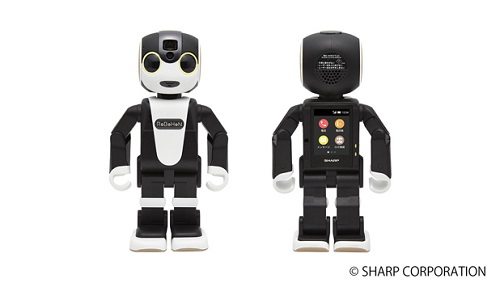
(Source : Sharp)
Hyunjoo Kang / Reporter / jjoo@olednet.com
Sharp Corporation will release RoBoHoN, a small and easily portable robot-shaped phone.
The phone was developed in collaboration with Tomotaka Takahashi, Project Associate Professor at the University of Tokyo’s Research Center for Advanced Science and Technology and CEO of robot development company Robo Garage Co., Ltd. RoBoHoN is the world’s first*1 mobile robotic phone. This humanoid robot can walk on two legs and is compact enough (approx. 19.5 cm tall) to be carried almost anywhere.
Supporting LTE and 3G networks, it has all the basic mobile phone functions, such as phone, e-mail, and camera, as well as a range of services accessed through dedicated apps, all of which are used by conversing with this humanoid. A newly developed built-in compact laser projector*2 with focus-free operation allows users to project photos, videos, and maps onto a screen or wall. Users can also download dedicated apps to give it new functions and services. What’s more, it can grow to accommodate more natural communication with the user by learning the user’s profile and usage situation.
In conjunction with the product launch, an official RoBoHoN website provides users with cloud services and information on connectivity, product warranty, and how to reserve and purchase RoBoHoN.
Sharp is focusing on promoting and supporting RoBoHoN, a totally new concept in IT mobile devices.
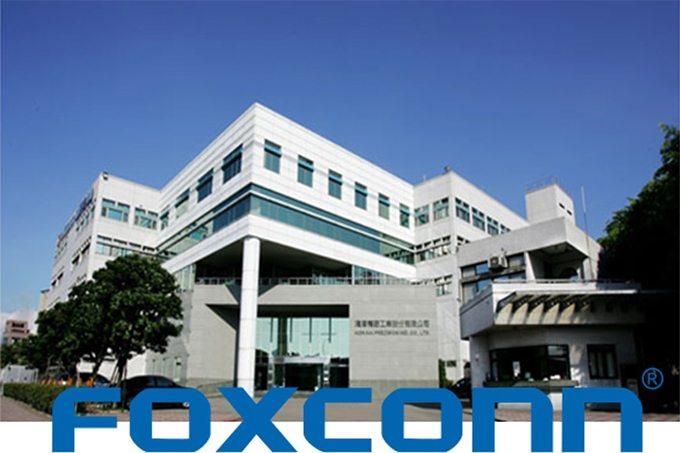
Foxconn is expected to occupy approximately 22% of 2016 Q4 global large size panel yield(Source : Foxconn)
Hyunjoo Kang / Reporter / jjoo@olednet.com
Foxconn is expected to occupy approximately 22% of 2016 Q4 global large size panel yield, similar to the levels of Samsung Display and LG Display.
Foxconn, recently confirmed to buy 66% of Sharp’s stake for $ 3.5 billion, is estimated to actively invest in improving Sharp’s panel competitiveness against Samsung Display and LG Display.
DigiTimes recently reported their research indicates Sharp’s large size panel yield will occupy 5.3% of global market in Q4 2016. This places the company on the 7th place after Samsung Display, LG Display, Innolux, AUO, BOE, and CSOT.
However, Sharp and Innolux are under Hon Hai Precision (Foxconn Technology). If the Q4 2016 large size panel yield of Sharp and Innolux are combined, the global occupancy is added to 21.9%. This is approximately the same level as Samsung Display (23.7%) and LG Display (22.7%).
Foxconn is analyzed to be investing in Sharp mainly with focus on OLED. According to a recent DigiTimes article, Foxconn is planning to invest approximately US$ 1.8 billion in OLED development.
DigiTimes estimates that Foxconn will actively begin mass production of OLED for smartphone from 2018, and expand the production to large and medium-sized OLED panel for TV, notebook, etc. Foxconn is forecast to begin shipment of OLED for TV from 2021, and annually ship 7,200,000 units of OLED panel for TV in 2025.
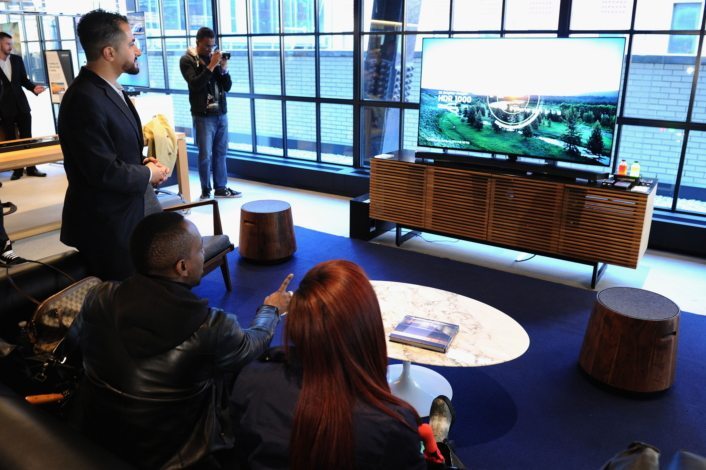
Samsung Electronics America, announced the availability and pricing for its 2016 line up, including SUHD TVs.(Source=Samsung Elec.)
Samsung Electronics America, the leader in home entertainment for over 10 years, announced the availability and pricing for its 2016 line up, including an entirely new Flagship model series – the KS9800, bringing a new meaning to Smart TV.
“Samsung has always been about the ultimate experience in Picture Quality. This year is no different. Our new SUHD models provide the brightest, most realistic color and clarity for every viewing environment,” said Dave Das, Senior Vice President, Samsung Electronics America. “What is new this year is our redefined Smart TV experience. We listened to our customers and made enjoying content the easiest it’s ever been”
Whether it’s SUHD, UHD or LED, Samsung delivers the brightest, most stunning picture quality, with richer colors and more dynamic audio than ever before.
Samsung’s SUHD TVs feature the world’s only cadmium-free 10 bit Quantum Dot Display, setting the quality standard of 1,000-nit HDR with the best and most vibrant color and contrast available for true-to-life picture and experience. The Ultra Black feature reduces reflections by absorbing light to help provide for deeper, richer blacks. This year’s Samsung SUHD line up meets the UHD-A’s Premium UHD certification program, which ensures consumers are getting the most premium experience from their UHD TV.
From curved and slim to the new boundless design edge, Samsung offers stunning design with optimum viewing. The new KS9500 features an immersive ‘360’ design that is elegant and looks beautiful from every angle.
Samsung’s 2016 Smart Hub Interface takes simplicity to the next level. The new Smart Hub Interface eliminates a lengthy setup process by automatically integrating set top boxes from cable providers like Time Warner, Comcast (coming soon), and satellite services such as DIRECTV (coming in June), as well as game consoles. Users can simply plug the STB into any HDMI port, and the TV will recognize the box and provider, as well as automatically set up the remote control to access and control the STB features – not just channel up and down, but DVR controls and other commonly used controls – without the user ever having to program or “teach” the remote. It’s the ultimate in simplicity.
The UBD-K8500 supports backward compatibility, upscaling existing 3D Blu Ray, Blu Ray to near-UHD quality. The player can also handle the next generation of home audio formats, including immersive, object-based sound formats like Dolby Atmos and multi-channel systems.
For 2016, Samsung offers breathtaking design and unparalleled excellence with its new line of TVs, including a series of five Curved SUHD TVs and a series of five UHD TVs that vary in display size from 49” to 88”. Ranging from the popular curved form to the traditional flat-panel, Samsung provides consumers with sleek appeal, the most exceptional picture quality and smartest TVs.
The Samsung KS9800 SUHD TV will be available in early June in a 65” model for $4,499, and an 88” model for $19,999. A 78” model will be available in early May for $9,999.
The Samsung KS9500 Curved SUHD TV is available now in a 55” model for $2,499 and a 65” model for $3,699. A 78” model will be available in early June for $7,999.
Samsung’s KS9000 4K SUHD TV is available now in a 55” model for $2,299, and a 65” model for $3,499. A 75” model will be available in early June for $6,499.
Samsung’s KS8500 4K SUHD Curved TV is now available now in a 55” model for $1,999 and 65” model for $2,999. A 49” model will be available in May for $1,699.
The Samsung KS8000 is now available in a 55” model for $1, 799, and in a 65” model for $2,799. Starting in May, it will be available in a 49” model for $1,499, and a 60” model for $2,299.
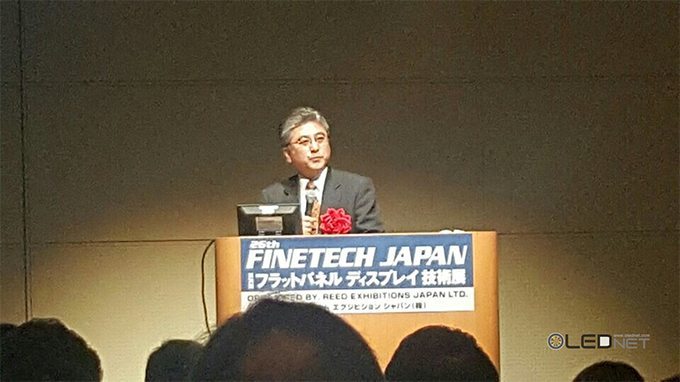
JDI’s CTO Emphasizing LTPS Technology(Tokyo=OLEDNET)
Hyunjoo Kang / Reporter / jjoo@olednet.com
As a response strategy for the future smartphone display market, Japan Display (JDI) nominated LTPS evolution. This is to continue the position that JDI achieved within the LCD market through LTPS technology in the OLED market using Advanced backplane technology.
JDI’s CTO, Hiroyuki Ohshima gave a keynote speech titled Future Perspective for Small to Medium-sized Displays in FineTech Japan 2016 (April 6-8), and emphasized that they will continue developing backplane technology prowess.
Furthermore, Ohshima stressed that whether the mobile display’s frontplane is IPS LCD or OLED, the key backplane technology is LTPS. he explained that unlike LCD’s stabilized technology, OLED still has issues that need to be solved such as high uniformity and stability. However, he added that OLED is the best technology to achieve flexible display comparing the merits of LCD and OLED.
Ohshima told the attendees that LTPS is a widely used technology applied to both LCD and OLED, has high electron mobility compared to other TFT technology, and high resolution, low power, etc. are possible. From 2015, JDI has been using 60 Hz Gen1 LTPS technology, and expected to use 30 Hz Gen2 Advanced LTPS from 2016, and Gen3 with 15 – 5 Hz from 2017. The evolved technology can greatly reduce energy consumption compared to the previous versions of the technology.
Furthermore, Ohshima is planning to respond to the small to medium-sized display market by developing in-cell touch, low power technology, etc. He added that small to medium-sized display, represented by smartphone, requires the integration of developed technology
FineTech Japan 2016 (April 6-8) is a display technology related exhibition held in Tokyo Big Sight. The 26th annual event is participated by approximately 260 companies including Samsung Display, BOE, and Japan Display.
Hyunjoo Kang / jjoo@olednet.com
These figures are the tentative consolidated earnings based on K-IFRS. This tentative earnings is provided as a service to investors prior to LG Electronics’ final earnings results including net profit and details regarding each division which will be announced officially later this month.
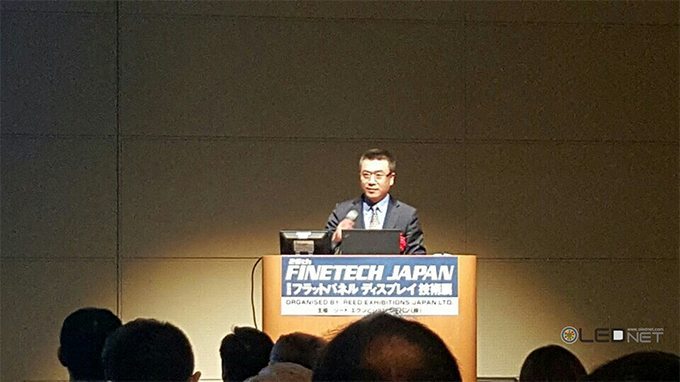
BOE’s CEO Emphasized They Will Lead 8K TV Market(Tokyo=OLEDNET)
Hyunjoo Kang / Reporter / jjoo@olednet.com
China’s TFT-LCD company, BOE, revealed ambition that it will lead the 8K market within the TV sector.
At the Technical Conference of FineTech Japan 2016 (April 6-8), BOE’s CEO Zhaohong Zhang gave a keynote speech titled Strategy of Adaptation and Innovation, and emphasized that the large size TV will notably grow, and BOE will lead the large size 8K TV market.
Zhang explained that he believes the enlargement will become the growth engine for the global display market. Accordingly, he estimates that the enlargement of monitor and TV among others will spread. He added that the display market will find it difficult to grow rapidly, and the display will become larger and mobile products of FHD 400 ppi or higher and TV products of UHD 4K or higher will expand.
Zhang emphasized that BOE became the victor by earning market opportunity through scale and value innovation, affirming the determination to lead the large size TV market. In terms of BOE’s innovation directions, Zhang suggested several keywords including ▲Picture ▲Power ▲Health ▲Price ▲Panel and ▲Pilot.
In particular, BOE’s policy is to make a winning move in large size display sector. Within the smartphone and tablet sectors, Zhang plans to place UHD 4K display at the front, and lead the 8K era within TV sector. He further emphasized that with the forecast of rapid growth of large size 8K TV market from 2018, BOE will become the pioneer in 8K technology and product. In future, BOE is planning to apply 8K to all panel series for TV.
Additionally, Zhang’s strategy includes low energy consumption actualization through backplane TFT semiconductor and high aperture ratio technology. Furthermore, he stressed that by developing display that lowers eye fatigue and corrects color, BOE is considering viewer’s health too. He revealed that in order to enter the new application sectors such as automotive, medical, AR, and VR, BOE will carry out development on high resolution, touch module, flexible panel, etc.
FineTech Japan 2016 (April 6-8) is a display technology related exhibition held in Tokyo Big Sight. The 26th annual event is participated by approximately 260 companies including Samsung Display, BOE, and Japan Display.
Hyunjoo Kang / jjoo@olednet.com
Samsung Electronics announced today that it has sold more than one million curved monitor products worldwide. The global display provider introduced its first curved LED monitor – the 27-inch, 4000R (curvature radius of 4,000 mm) SD590C model – in September 2014, and since has expanded its line-up to include several additional curved monitors. As a result, Samsung currently accounts for more than 85 percent of all global curved monitor sales (Source: International Data Corporation (IDC), 2015 Q4 worldwide sales results for 15”~34” curved monitors).
Designed to match the natural shape of the human eye, Samsung’s curved monitors feature uniform center-to-edge viewing distances to create a more comfortable and immersive viewing experience conducive to long-term use. Combined with extra-wide viewing angles and enhanced contrast ratios, these curved displays are ideal for gamers and at-home entertainment users seeking realistic, distraction-free picture quality. As a result, Samsung has capitalized on growing demand from these audiences (many of whom employ several monitors during game play or content viewing).
“Since the launch of our first curved monitor in 2014, we’ve seen this technology evolve to become an industry standard that gaming and entertainment viewers expect,” said Seog-gi Kim, Senior Vice President, Visual Display Business, Samsung Electronics. “As curved monitors continue to grow in popularity, we welcome the challenge of further advancing our displays’ design and capabilities to drive new levels of viewer engagement and comfort. We are happy to have reached one million sales for our curved monitors so far, and we look forward to delivering new curved technology innovation in the coming years.”
Samsung’s curved monitor design refinement includes the introduction of a sharper curve with each new model while maintaining a consistently sleek and stylish presentation. In January 2015, Samsung released its second curved monitor, the 34-inch SE790C, featuring 3000R curvature. The company’s latest curved offerings – the CF591 (27-inch model) and CF390 (23.5- and 27-inch models) – further expand visual possibilities with an industry-leading 1800R composition.

Tomoaki Tsuboka, Corporate Officer in JOLED(Tokyo=OLEDNET)
Hyunjoo Kang / Reporter /jjoo@olednet.com
JOLED has completed development of 19.3 inch and 12.2 inch OLED panel through printing technology, with plans of mass production in 2018.
During the FineTech Japan (April 6-8) Special Session, Tomoaki Tsuboka, Corporate Officer and Head of Business Development in JOLED, gave a talk titled The Strategy of JOLED to Challenge Innovation and revealed this information.
According to Tsuboka, JOLED recently completed printing technology based 12.2 inch FHD flexible OLED panel, and 19.3 inch 4K OLED panel prototype development. The 12.2 inch product has pixel density of 180 ppi, and 19.3 inch is 230 ppi.
It is planning to start prototype’s mass production related verification process from this August, and begin formal mass production from 2018. In order to achieve this, JOLED is preparing Gen4.5 mass production line (730 x 920 mm).
Until now, JOLED’s main products were mass produced OLED panel for smartphone. Its strategy is to enter the large size market through the printing technology and using it as the growth engine. During this session, Tsuboka explained the characteristics of printing OLED mass production technology and emphasized the superiority of JOLED’s printing technology.
Tsuboka explained that the RGB printing technology can actualize large size OLED panel in atmosphere, and has short processes. However, further improvements are required regarding mura, material characteristics, etc. In the case of JOLED, he added that this was much improved through independent technology, as well as algorithm improvement, and materials and device structure optimization.
He told the attendees that JOLED is attempting to enter the large size panel market with printing technology. He also emphasized that as OLED can actualize high quality flexible, freeform, and transparent panels, it will bring innovation to spaces such as station, airport, and gallery.
FineTech Japan 2016 (April 6-8) is a display technology related exhibition held in Tokyo Big Sight. The 26th annual event is participated by approximately 260 companies including Samsung Display, BOE, and Japan Display.
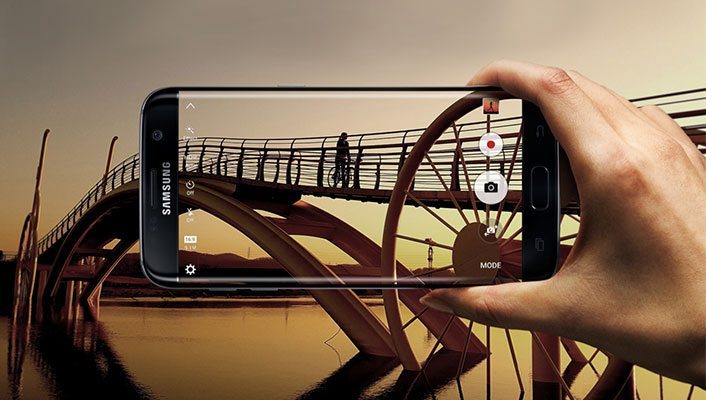
Samsung Electronics announced its earnings guidance for the first quarter of 2016(Source=Samsung Electronic)
Hyunjoo Kang / jjoo@olednet.com
Samsung Electronics announced its earnings guidance for the first quarter of 2016.
The above figures are estimates of consolidated earnings based on K-IFRS. Korean disclosure regulations do not allow earnings estimates to be provided as a range. Therefore, the above figures are based on the median of the earnings estimate range, as given below.

LGD’s ChangHo Oh, “65, 55 inch TV are OLED TV’s Growth Engine”(Tokyo=OLEDNET)
Hyunjoo Kang / Reporter / jjoo@olednet.com
LG Display has once again reaffirmed its determination to lead the TV market with OLED as the growth engine. In particular, the company is planning to actively respond to the increase of demand for 65 inch and 55 inch OLED TV.
On April 7, during the FineTech Japan Special Session, ChangHo Oh, LG Display’s OLED TV Development Group, gave a talk titled ‘Technology for Large Size OLED Display’ and emphasized the superiority of large area OLED panel.
As a display for a large size TV, LCD has light leakage issue, but Oh explained that OLED can solve this and actualize natural colors without distortion. Oh added that through self-emitting characteristic of OLED, the demands for large size TV picture quality can be solved, and through freedom in forms such as foldability, the design can be improved to less than 1 mm thickness. Furthermore, he added large size OLED panel’s advantages including superior light actualization in same color sector
a-Si, poly Si, and oxide substrates are mainly used for LCD, and for OLED it is oxide, and poly Si. Oh explained that as a part of responding to the panel enlargement, changing the a-Si of the existing mass production line to oxide could improve enlargement and safety.
Oh reported that as the demand for 65 inch and 55 inch TV is increasing, this will become the growth engine of the OLED market, and that P10 factory establishment in Paju is being carried out.
FineTech Japan 2016 (April 6-8) is a display technology related exhibition held in Tokyo Big Sight. The 26th annual event is participated by approximately 260 companies including Samsung Display, BOE, and Japan Display.
Hyunjoo Kang / Reporter / jjoo@olednet.com
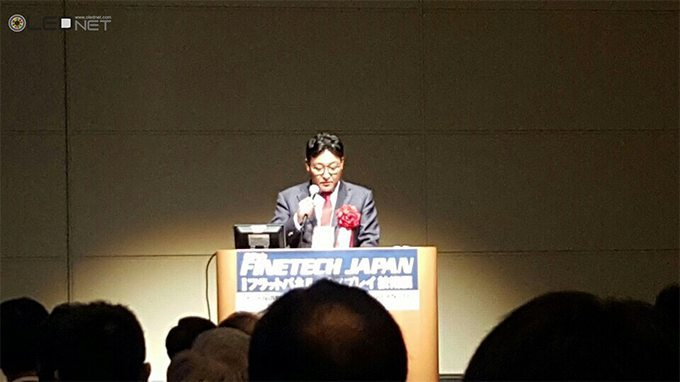
SDC’s CTO Sungchul Kim During Keynote Speech at FineTech Japan 2016
Samsung Display’s CTO, Sungchul Kim, displayed infinite potential of AMOLED’s new market creation ability, and emphasized that panel, manufacturing equipment, materials, and communication sectors need to grow together. He also suggested new life through AMOLED and technologies required for this.
On April 6, during the Technical Conference of FineTech Japan (April 6-8), Kim gave a keynote speech on the new market creating AMOLED’s next generation application and key technology.
As the market that AMOLED will newly open, Kim suggested mobile device, TV, VR and AR (virtual reality and augmented reality), automotive, PID (public information display), etc. According to Kim, these applications will be actualized through various forms of AMOLED such as foldable, rollable, stretchable, mirror, and transparent.
Explaining the utilization of mirror and transparent AMOLED, Kim emphasized that what is normally a wall or window can be turned into a PID that shows required information when needed. Kim explained that AMOLED is suitable for VR or AR that allows the user to realistically experience a particular environment or situation by combining the imaginary and reality. He added that when foldable and rollable displays are applied to mobile device, IT device, TV, etc., large screens can be produced while the device is small, and space utilization and mobility can be increased. Regarding automotive AMOLED, Kim explained that it will provide required information without disrupting driving, as well as improving the design of the vehicle.
Additionally, Kim suggested key technology required for actualization of each application. In the case of a window display, a technology that can simultaneously produce flexibility and hardness is required, and for automotive AMOLED, the technology for blue materials of phosphorescent materials needs to be improved. For transparent display that actualizes PID, transparency of each layer, substrate heat resistance, etc. have to be achieved.
Kim explained that in future, new life which is smart and connected through AMOLED will open. He further emphasized that for this to happen panel, manufacturing equipment, materials, and communication sectors need to grow together.
FineTech Japan 2016 (April 6-8) is a display technology related exhibition held in Tokyo Big Sight. The 26th annual event is participated by approximately 260 companies including Samsung Display, BOE, and Japan Display.
Hyunjoo Kang /Reporter / jjoo@olednet.com

Foxconn Headquarters, Source: Foxconn
With the forecast of gradually bolstered investment in OLED by Foxconn that recently bought Sharp for $ 3.5 billion, there is a possibility that this company could actively mass produce OLED panel for smartphone from 2018.
DigiTimes recently reported their research indicates that Foxconn will actively mass produce OLED panels for smartphone from 2018 and increase the OLED panel mass production in stages.
According to DigiTimes, Foxconn is planning to first mass produce small size OLED panel for smartphone and then begin medium size OLED for tablet, notebook, and TV. In 2021, It is expected to release 3 million units of OLED panel for tablet and notebook, and increase it to 10.4 million units in 2025. Hence, Foxconn is expected to occupy a quite significant amount of market share in future OLED panel market.
IT is estimated to begin releasing OLED panel for TV in 2021. It’s OLED shipment for TV in 2021 is expected to be 252,000 units, but it is estimated to gradually increase to record 7.2 million units per year in 2025.
◆ “IGZO Technology to be Applied to OLED”
In a recent press conference regarding the Sharp takeover, Hon Hai’s Chairman Terry Gou said that IGZO, which is LCD (liquid crystal display) technology of Japan’s Sharp, is better than OLED, Korea’s newest display technology. He further revealed that future Sharp display will utilize IGZO technology for approximately 60% of the panel and OLED for 40%.
IGZO (indium gallium zinc oxide) display is Sharp’s LCD. IGZO is known to have superior picture quality in comparison to the general LCD, with less power consumption. It is used in the majority of smartphone and tablet PC such as iPad.
As Foxconn’s Sharp is IGZO technology’s leading company, DigiTimes estimates that IT will apply the IGZO backplane technology on OLED panel.
UBI Research, an OLED specializing market research company, explained that as Sharp’s small size LCD process is LTPS based, and can be transformed to OLED line, it will be easier for Foxconn to achieve OLED mass production ability through Sharp. He added that this added Foxconn to the lineup of Samsung Display, LG Display, and Japan Display as the likely supplier for iPhone OLED panel for Apple. Furthermore, he analyzed that although Foxconn and Japan Display are both latecomers in OLED sector, Foxconn is in a more favorable position due to its solid relationship with Apple.
Hyunjoo Kang / Reporter /jjoo@olednet.com
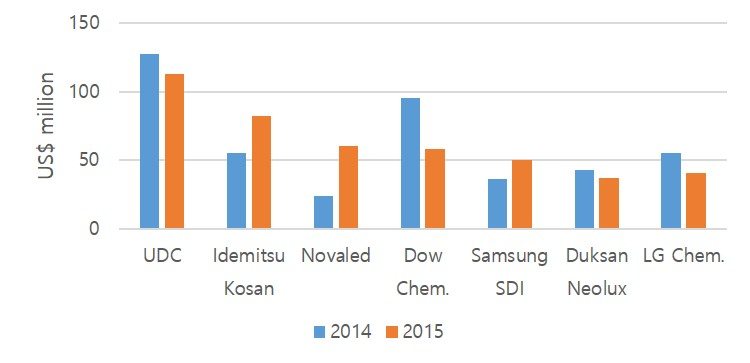
In the midst of UDC`s domination of 2015 global materials market, with Japanese Idemitsu Kosan`s rapid growth and slump of emitting materials companied, there has been changes to the enviroment.
According to [2016 OLED Emitting Materials Annual Report] to be published by UBI Research in mid-April, the 2015 global emitting materials market recorded approximately a 17% growth compared to 2014
UDC’s revenue decreased from previous year, but remained at the top, the same as 2014. UDC was closely followed by Idemitsu Kosan despite its fourth place in 2014.
Such growth of Idemitsu Kosan is mainly due to its supply expansion in regards to Korean companies such as Samsung Display and LG Display. In 2015, Idemitsu Kosan began actively supplying Samsung Display with blue materials. Together with the increase in Idemitsu Kosan’s client LG Display’s OLED panel for TV mass production line’s operation rate, Idemitsu Kosan’s supply increased.

2015 Global OLED Emitting Materials Market Ranking
Source: UBI Research, 2016 OLED Emitting Materials Annual Report
◆ Samsung Display to Determine Up and Down of Companies
On the other hand, some OLED emitting materials companies that ranked high until 2014 showed poor performance. Dow Chem., that reached the second place in 2014 after UDC in revenue, fell to the fourth place in 2015 due to a big sales decrease. The third and fifth companies in 2014, LG Chem and Duksan Neolux respectively, fell below fifth place in 2015 due to the same reason.
Dow Chem. and Duksan Neolux are analyzed have recorded sales decrease in comparison to 2014 due to the supply chain changes of Samsung Display. In the case of LG Chem, the sales fell as the Samsung Display’s supply volume decreased.
However, Samsung SDI recorded sales increase, and entered within the top 5 in 2015. This company’s performance improved as it supplied Samsung Display with green host.
The company that recorded greatest growth is a Germany company Novaled that Samsung SDI, then Cheil Industries, took over. This company recorded approximately 150% revenue increase compared to previous year, and reached the third place in 2015 following UDC and Idemitsu Kosan. With the increase in OLED panel for TV mass production line’s operation rate, Novaled’s revenue greatly increased.
UBI Research estimated that in 2016, LG Display’s OLED TV mass production line operation rate and Galaxy Note series’ material structure, to be mass produced in the second half, will greatly affect revenue of OLED emitting materials companies.
Hyunjoo Kang / Reporter / jjoo@olednet.com
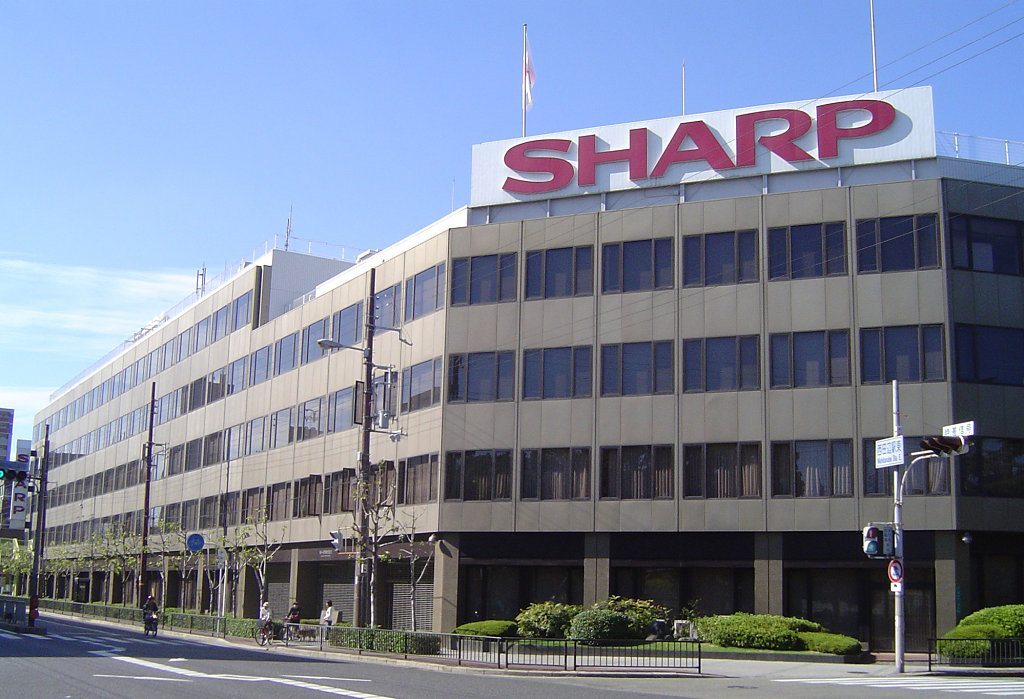
Sharp_Head_Office(Source : Wikipedia)
Following Foxconn’s takeover of Sharp, which company will end up suffering the most?
On March 30, Taiwan’s Hon Hai’s Foxconn agreed to buy Sharp for about $ 3.5 billion. With this decision, there is much focus on how it will affect the global display market.
Korean companies leading the global display market such as Samsung Display and LG Display as well as key display companies in Japan, China, and Taiwan are keenly interested in this takeover.
Some experts analyze that, out of these companies, the one being most threatened by this takeover will be Japan Display.
◆ Japan Display, May Not be Able to Retain OLED Supply for iPhone
As it became known that iPhone will replace the LCD panel with OLED for future iPhone, it is expected to create a great business within the OLED market. 3 companies, Samsung Display, LG Display, and Japan Display, have been considered as the most likely supplier for iPhone’s OLED panel.
Some media have reported that Samsung Display and Apple have already signed OLED supply agreement, and LG Display and Japan Display are known to be having a heated competition to become the secondary supplier.
However, this Foxconn’s takeover of Sharp could break the big 3. Of these, experts estimate that Japan Display is most likely to be pushed out.
iPhone’s largest LCD panel supplier is LG Display, with over 50%. Following this, Samsung Display and Japan’s Sharp are the second and third LCD panel supplier for iPhone but the order has not been confirmed.
As it became known that Apple will utilize OLED, Japan Display with investment plans for OLED mass production line rose as the possible panel supplier for Apple. Rather than Sharp, Japan Display became a strong candidate for OLED supplier for iPhone along with Samsung Display and LG Display.
However, it all changed when Foxconn bought Sharp. Sharp does not have OLED line for mobile device at the moment, but its small device LCD line is LTPS based that could be transformed to OLED. Foxconn, expected to invest in OLED sector, is likely to turn Sharp’s small device LCD line into OLED line.
Furthermore, Foxconn is Apple’s key production collaborator. Worse, even Foxconn’s newly bought Sharp is one of Apple’s panel suppliers. Excluding Samsung Display and LG Display with verified OLED technology prowess, Apple could choose Foxconn with closer connections rather than Japan Display as an OLED supplier.
One display industry expert explained that Foxconn could push out Japan Display regarding iPhone OLED supplier issue, and even if that does not happen, it will have very narrow standing. He added that although compared to Samsung Display and LG Display, Foxconn and Japan Display are both latecomers in OLED sector, Foxconn is in a more favorable position due to its solid relationship with Apple.
Hyunjoo Kang / Reporter / jjoo@olednet.com

Foxconn Decided to Buy Sharp for Approx. $ 3.5 billion, Source: Foxconn
On March 30, 2016, Taiwan’s Hon Hai’s Foxconn agreed to buy Sharp for about $ 3.5 billion. With this decision, there is much focus on how it will affect Korean display and set companies including Samsung and LG.
Foxconn, primarily an electronics contractor manufacturer, became responsible for Apple’s iPhone production and continued its growth. The fact that through this takeover Foxconn now possesses display mass production ability can greatly affect Korean companies that are currently leading the display and set market.
◆ Competition with Samsung·LG for iPhone Panel Supply Intensifies
A possible scenario for future includes Foxconn becoming a strong competitor for Samsung Display and LG Display in smartphone OLED sector for Apple’s iPhone.
Although Sharp is a company that produces LCD, it is estimated that Foxconn will invest in Sharp to mass produce OLED.
Apple is expected to release OLED equipped iPhone from 2017, and it is known that Samsung Display, strong in OLED, have agreed to supply the initial volume. As Apple has been close with LG in supply and demand of display, some believe that LG Display will become the biggest supplier in future.
However, if Apple’s key collaborator Foxconn begins to produce OLED, it could become a strong rival for Samsung and LG.

Sharp Headquarters, Source: Wikipedia
◆ Suggestion of Foxconn’s Own Brand Set Production Prospect
Foxconn, despite being a contract manufacturer, became widely known with great growth. As such, the company could branch out into producing sets under their own brand name. Furthermore, with the display mass production now possible with the Sharp takeover, this scenario is gaining traction. According to market experts, Foxconn is now able to expand its smartphone and TV set business. As Chinese set companies are rapidly growing to threaten Korean companies, the prospect of Foxconn’s set business cannot be ignored.
One display expert explained that as a key collaborator of Apple, Foxconn can successfully enter the smartphone panel market. He further analyzed that with Foxconn’s expertise in set production, their own brand set release is not too much to expect, and that this will be easier with the takeover of Sharp.
Hyunjoo Kang / Reporter / jjoo@olednet.com
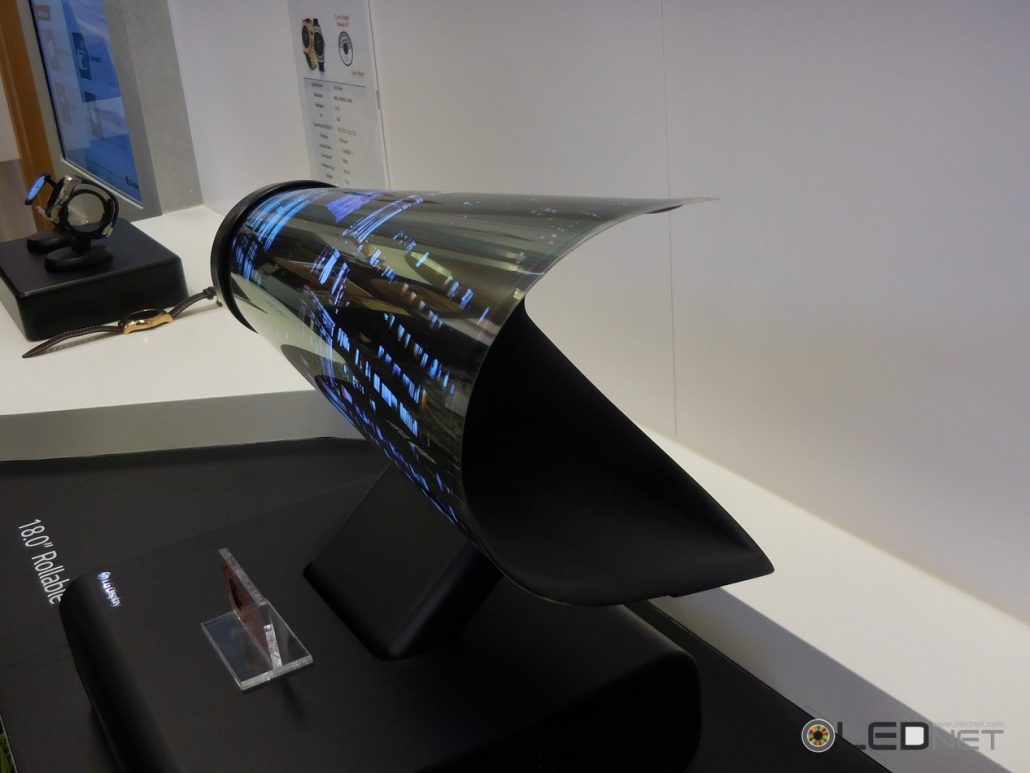
Flexible OLED from LGD(CES 2016)
From April, the display industry is estimated to start mending the damage carried out by LCD with OLED.
In Q1 2016, Korean display industry suffered due to oversupply of Chinese LCD panels. Market experts believe that Samsung Display and LG Display will announce large Q1 deficit in April due to LCD.
However, the display market is expected to actively improve its performance from April.
Dong-won Kim, analyst with Hyundai Securities, estimated that great increase in profit is expected from Q2 2016 due to the increase in OLED operation rate and yield improvement. Also because of profitability improvement effect following LCD panel’s price rebound, the deficit will decrease.
LG Display’s performance in OLED sector is expected to noticeably improve. Over 90% of LG Display’s total mass production line is LCD at present. Hence, the fall of LCD price in Q1 is expected to have hit hard and OLED business is also showing deficit.
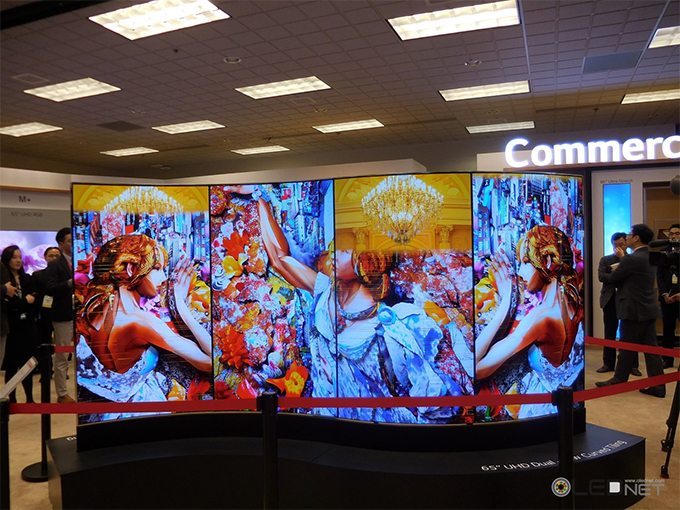
OLED TV from LG(CES 2016)
◆ After Harsh Q1, Warm Breeze of OLED… Spring for Equipment Industry Too
However, this will change from Q2. Analyst Hyeoncheol So of Shinhan Investment forecast that LG Display’s OLED TV sales volume and revenue in Q2 2016 will increase by 144% and 106% respectively. He added that the business deficit of OLED TV sector will greatly decrease.
LG Display is anticipating that the deficit will turn to profit in H2 2017, with the business profit of up to 1 trillion KRW in 2017, an increase of 115%.
Samsung Display, whose LCD and OLED ratio is 50:50, is expected to show 900,000 million KRW in deficit in LCD sector this first quarter. However, this is estimated to be compensated to some degree by the profit in OLED.
Samsung Display and LG Display are actively carrying out investment in OLED panel mass production line in Q1. As well as the investment in turning the existing LCD line to OLED, investment in new OLED line establishment is actively being carried out.
As such, with the optimistic outlook on OLED within the display market, flexible OLED manufacturing equipment companies such as Tera Semicon, Viatron Technologies, and Dong A Eltek had been discussed as the favorites of securities companies. In fact, Samsung Display’s flexible OLED manufacturing equipment related key collaborator AP Systems showed remarkable growth recording 12,100 million KRW in business profit last year.
UBI Research forecast that Korean companies will strengthen their dominance with their 2016 AMOLED shipment’s 95% occupancy of the global market. As OLED is becoming stronger in the TV, smartphone, and VR market, this will become a huge growth engine for global panel companies such as Samsung and LG.
Hyunjoo Kang / Reporter /jjoo@olednet.com
Starting this week, LG Electronics (LG) will begin reaching global markets with its highly anticipated LG G5 modular smartphone. The LG G5 will debut in South Korea on March 31 and the United States on April 1 to be followed by countries in Europe, Asia and the Middle East, among others. Approximately 200 carriers and operators worldwide have committed to offer the G5 in their local markets.
As demonstrated at its unveiling at Mobile World Congress last month in Barcelona, LG G5 is a showcase of cutting-edge technologies and rich features thoughtfully designed deliver a more playful user experience. MWC attendees seemed to agree with the philosophy behind the G5 as the device walked away with a record 33 awards including Best New Smartphone at MWC 2016 from the GSMA’s Glomo Awards, the mobile industry’s longest established awards platform for innovation, excellence and achievement.
“Since MWC, LG G5 and Friends have captured the imagination of consumers everywhere with its engaging take on mobile technology,” said Juno Cho, president and CEO of LG Electronics Mobile Communications Company. “Modularity has been talked about for years but no one was able to consumerize it until now and we’re happy to take on the mantle.”
Engagement comes in the form of dual 78- and 135-degree camera lenses for ultra wide angle shots, an Always-on Display that requires no button-pressing to get the latest information and Dolby Digital Plus and 7.1 channel audio for cinema-style sound that delivers dialogue and nuanced effects clearly even in loud environments. LG G5 also supports IFTTT (If This Then That), a smart solution that allows users to create a series of action programs called recipes to boost productivity and efficiency.
LG simplified the graphical user interface with a simple, flat look while applying a bright color combination and a semi-transparent blur effect to the GUI. In addition, animation and feedback effects are choreographed at the right moments to deliver a playful and enjoyable experience (https://youtu.be/WqJvMtkmyZI).
The following companion devices, or Friends, will be available in select markets at the time of the G5 rollout or soon after: CAM Plus, LG Hi-Fi Plus with B&O PLAY (with pouch), 360 VR, 360 CAM (with case), Rolling Bot, TONE Platinum, H3 by B&O PLAY
Prices and exact date of availability will be announced separately in each local market.
Hyunjoo Kang / OLEDNET / jjoo@olednet.com
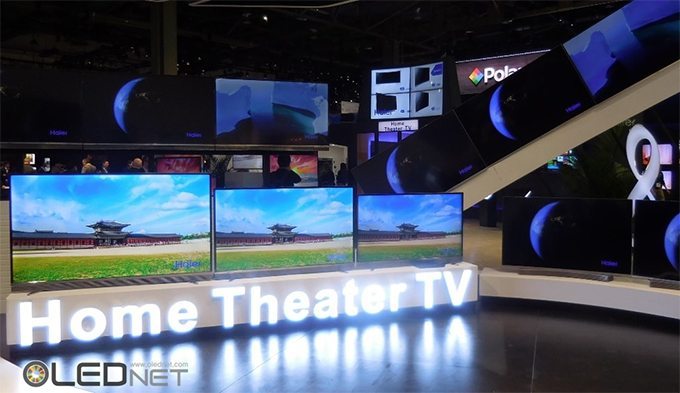
<CES 2016 Exhibition. Many Chinese Companies’ LCD TV Were Present.>
Due to the oversupply of LCD panel in global display market, the opinion that Samsung Display and LG Display will also not be able to avoid large amount of deficit is becoming stronger.
As of March 28, according to market experts including securities industry, Samsung Display and LG display will both face sizable deficit in LCD sector this quarter.
For Samsung Display, Q1 LCD sector is expected to record up to 900,000 million KRW. The company is estimated to reduce the overall display industry deficit with the OLED profit of approximately 400,000 million – 500,000 million KRW. Consequently, Samsung Display is to record approximately 400,000 million – 500,000 million KRW of deficit in Q1 2016.
LG Display, whose over 90% of the current production line is for LCD, is estimated to be hit more directly. LG Display has been showing profit in LCD until 2015, but is expected to turn to deficit in Q1 2016. LG Display has been showing deficit in OLED, and market experts are also expecting more deficit in Q1 2016.
◆ Unlike Samsung and LG’s High Quality, China Floods Cheaper LCD
The main reasons that display industry is having difficulty include oversupply of Chinese LCD, and overall market depression. Chinese companies’ affordable LCD supply, backed by active support of Chinese government, is damaging Korean companies.
Particularly, companies such as BOE, which greatly improved productivity with much assistance from Chinese government including corporate tax exemption, have been pressuring Samsung, LG, and others in the global LCD market. As the Chinese companies are still aggressively investing in LCD facilities, the LCD oversupply is analyzed to continue until 2018.
Accordingly, the majority of the industry believe that both Samsung Display and LG Display will carry out LCD production line restructuring. In a recent conference hosted by information company IHS, senior analyst Jeong Du Kang revealed that LG Display could restructure Gumi’s P2, 3, 4 production lines, and added that some thinks L6 production could stop following the same of L5 production line last year.
As expected, both companies do not officially comment on these forecast. However, most of the industry players believe that the production line changes of the 2 companies are inevitable.
One display expert explained that “unlike Samsung and LG which do not accept even small faults, Chinese companies are pouring out products with slightly lesser quality armed with lower price, and will dominate the mainstream market”.
He also estimated that as Samsung and LG are nearing the situation where they have to give up LCD, the speed of which OLED will settle as the main player within the global display market will increase.
Hyunjoo Kang / Reporter / jjoo@olednet.com
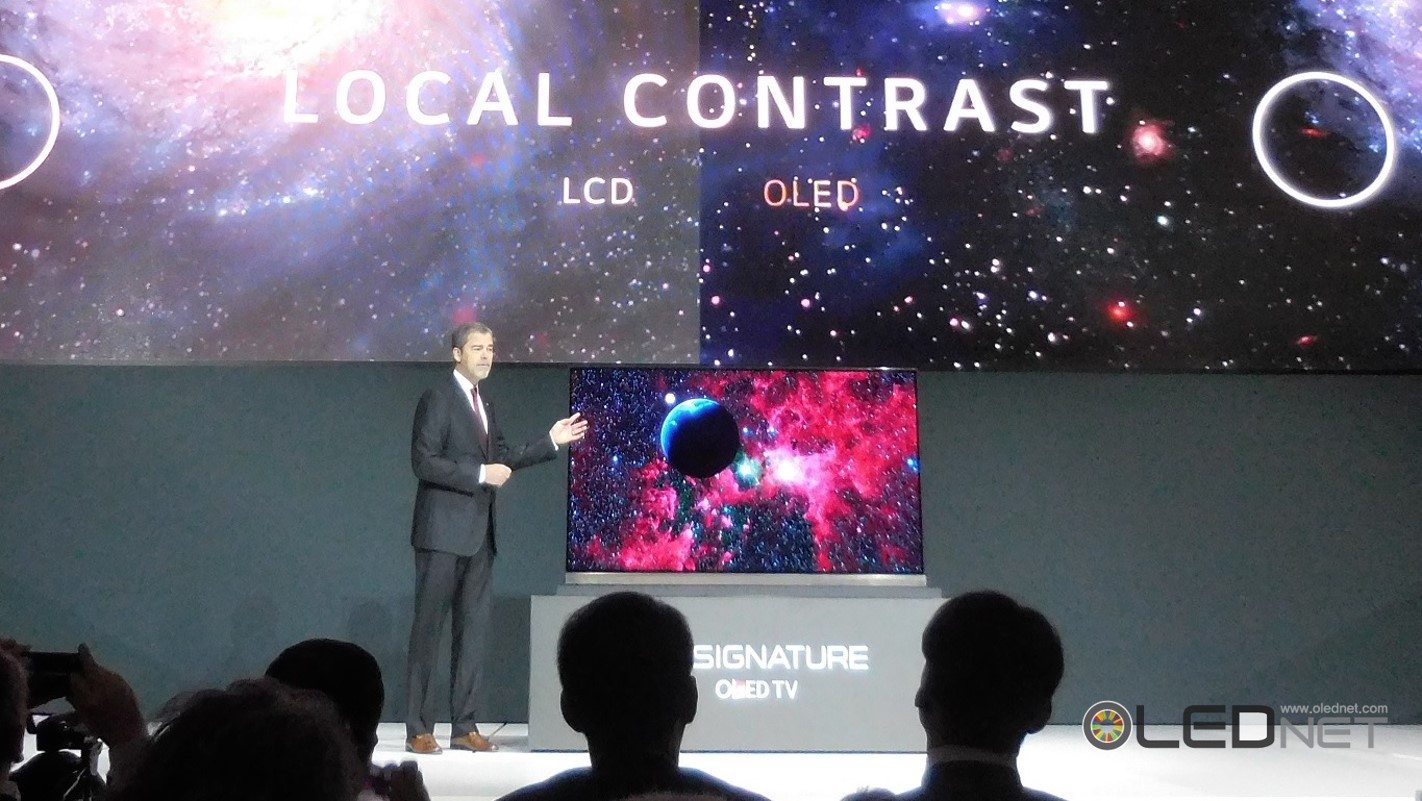
<LG Elec. is Introducing OLED TV in CES 2016>
Within the TV market, there is an opinion that even Samsung Electronics which believes it is not yet the time for OLED panel cannot continue to insist on LCD. Experts estimate that even if it is the same OLED TV, Samsung Elec. will differentiate the actualization method from competitors’ including LG Electronics. One of the possibilities suggested is Samsung’s selection of ink-jet printed OLED TV panel.
Hyun-Suk Kim, Samsung Elec. Visual Display department’s vice president, who recently announced new LCD based SUHD TV mentioned that OLED TV is premature and also needs technological improvements.
However, it looks to be difficult for Samsung to insist on LCD TV only in the long term. China is threatening Korean companies in LCD panel market with superior price competitiveness; there is too much risk for Korean display companies such as Samsung Display to invest further in LCD production line. Although Samsung Elec. is not receiving panel supply exclusively from Samsung Display, Samsung Display is the biggest supplier. Therefore, Samsung Display’s LCD investment reduction is also expected to affect Samsung Elec.’s TV business.
Furthermore, Samsung Elec. is in the position of having to emphasize OLED’s superior picture quality over LCD in smartphone business, but highlight the opposite in TV. This is also an issue that needs to be tackled.
Despite these issues, Samsung cannot easily start on OLED TV as several problems such as price competitiveness have not been solved.
◆ Ink-jet Printing, Can it Solve OLED for TV Price Issue?
According to Dong-won Kim, analyst with Hyundai Securities, Samsung Display, with Samsung Elec. as the biggest client, has unfavorable structure for reducing production cost as 65 inch OLED TV panel production efficiency is low in Gen8 line.
Kim estimated that Samsung Display will apply solution process ink-jet printing technology to OLED TV with 2018 mass production target in order to solve this problem.
When producing OLED TV panel, WRGB OLED method, which uses evaporation method, can only reduce production cost by certain amount as the material usage efficiency is low. On the other hand, ink-jet printing RGB technology finely deposits ink in liquid form and can reduce materials cost. Additionally, RGB OLED has fewer organic layers compared to WRGB OLED and processes can be decreased.
For these reasons, some believe that Samsung will select ink-jet printing method rather than evaporation for OLED TV in future. There is also a view that LG Display, which is currently using evaporation method, will also actively consider producing ink-jet printed OLED TV panel in the long term.
A display expert explained that although ink-jet printing processes are simpler than evaporation method, that does not necessarily mean materials cost is always cheaper. The ink-jet printing technology is not yet perfect, and particularly for blue the efficiency issue has not yet been solved.
He added that Samsung Elec. has strong tendency to differentiate itself from competitors such as LG, and even if Samsung Elec. releases OLED TV, it is likely that ink-jet printing, which is different from LG, will be the preferred method.
Hyunjoo Kang / jjoo@olednet.com
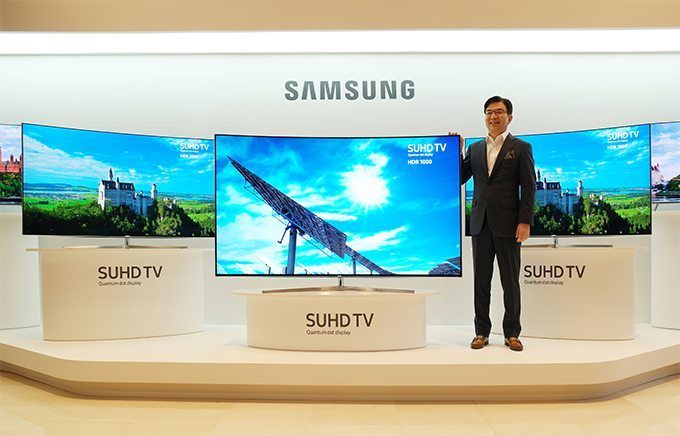
<Samsung Elec. Released 2nd Generation Quantum Dot TV. Source: Samsung Elec.>
On the subject of Samsung Electronics’ 2nd generation quantum dot display equipped SUHD TV product, recently released in Korea, display experts consider the actualization of 1,000 nit without cadmium as the key strength.
In 2015, Samsung Elec. first launched quantum dot SUHD TV under the name nanocrystal technology. Each quantum dot of nanosize, 10,000 times narrower than a human hair, actualizes accurate color.
According to Samsung Elec., the 2nd generation quantum dot technology to produce this new product, an improvement over last year’s. The company emphasized that compared to the previous product, the price was reduced and brightness was improved. HDR (high dynamic range) with 1,000 nit maximum was applied to the new product.
The 1,000 nit brightness is the standard figure of premium image produced in Hollywood, US. If this figure is high, screen’s bright and dark areas can be experienced fully even in bright environment such as a living room area.
Although not applied to all models of Samsung’s 1st generation quantum dot SUHD TV, 1,000 nit brightness was applied to the majority of the models; that 1,000 nit brightness was applied to the new product is not worth much attention by itself.
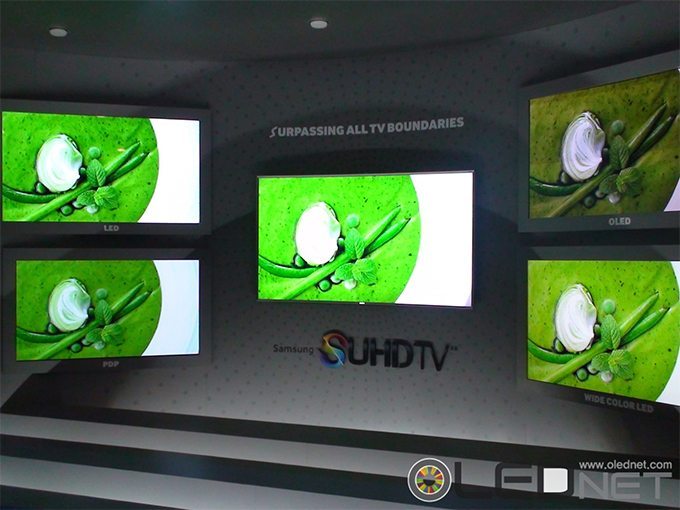
<Samsung Elec.’s 1st Generation Quantum Dot TV vs. Other Display in CES 2015>
◆Hazardous Heavy Metal Cadmium, Why Difficult to Remove?
Quantum dot film includes cadmium. As cadmium is a hazardous heavy metal, cadmium including quantum dot film cannot be environmentally friendly. Cadmium use in Europe is limited.
However, without cadmium, the quantum dot film’s optical efficiency is reduced. In order to make up for this, LED chips have to be applied which increases the price as well as the energy consumption. An alternative method to avoid this is development of additional quantum dot materials that increase efficiency.
For these reasons, some Chinese companies that produce quantum dot display equipped products select to use cadmium, overlooking the environmental issues. Samsung Elec. also emphasized that it is the only company that utilizes environmentally friendly cadmium-free quantum dot materials.
Through quantum dot materials’ efficiency and color mapping algorithm improvement, Samsung actualized 1,000 nit brightness without resorting to cadmium and without increase in power consumption. Color accuracy, which is a quantum dot display trait, was also improved by 25%.
Samsung Elec. is planning to release 14 models of SUHD TV, from 49 inch to 88 inch, in Korea. This is over 30% increase compared to last year. The price also was reduced by 900,000 KRW compared to the previous version. The new products, depending on the specifications, cost around 6 million KRW for 65 inch, and 4 million KRW for 55 inch.
A comment from a display expert is, “the new product has 1,000 nit brightness is not significant by itself, and color accuracy improvement also is not of much attention as it is an existing quantum dot trait”. However, he also put another comment from his analysis, “1,000 nit brightness was actualized without using cadmium and without decreasing energy efficiency is worth noting”.
Hyunjoo Kang, Reporter, OLEDNET
On March 23, LG Electronics launched world’s first 86 inch 58:9 commercial display Ultra Stretch.
Ultra Stretch signage allows places which have been difficult to install signage, such as columns and corners, to be used as billboards.
LG Elec.’s Ultra Stretch has the widest screen ratio of the signage released. The display is 2,158 mm wide and 349 mm long, and can be installed horizontally or vertically.
Ultra Stretch can be used on media pole, which is integrated into columns within buildings such as airports or hotels, and billboards above building entrances. Total of 16 units of Ultra Stretch, maximum 4 units lined horizontally and vertically, can be tiled. When installed on a separate stand, Ultra Stretch can be moved to where needed.
This product uses LG IPS panel, and with ultra HD resolution (3840 x 600), small writing as well as customary images are clearly shown. The IPS panel has wide viewing angle of 178°, and clean images can be viewed from any directions.
With consideration for commercial use of signage, it was designed to for easy editing of contents as well as other amenities. The display can be divided into 4 screens maximum and provide diverse information simultaneously.
For example, if installed in an airport, the display can be divided into 4 sections and each can show information such as weather, traffic information, news, advertisement, and others. This will allow foreign visitors to easily receive information.
SuperSign W media editor is equipped for easy transformation of existing contents to 58:9 ratio. Ultra Stretch also includes around 30 sample styles specific to the product.
LG Elec.’s Korean B2B Marketing representative explained that Ultra Stretch is a signage never been experienced and will lead the new commercial display market.
Hyunjoo Kang, Reporter, OLEDNET
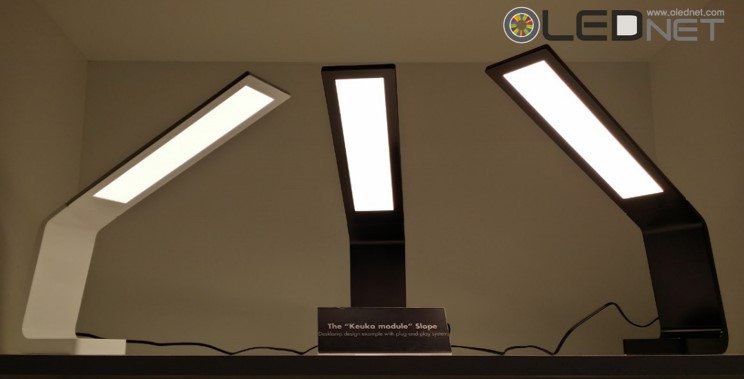
<OLEDWorks’ Keuka Module, Light + Building 2016>
OLEDWorks, an OLED panel lighting production company, is carefully opening the future lighting market with diverse future product lineup.
At the Light + Building 2016 (March 13-18), OLEDNET could observe OLEDWorks’ 6 types of Brite FL300 series, Brite Amber, Keuka module and others. The products showed 10,000-50,000 hours of lifetime, average efficiency of approx. 50 lm/W, CRI of 80-90, and with diverse color temperatures.
The OLEDWorks representative at the exhibition told OLEDNET that the company is aiming for general lighting market and the OLED lighting market will be actively open after 2-3 years earliest. OLED lighting has advantages of thickness and design freedom, and they estimated finding the killer application that can utilize these OLED merits is the key for the OLED lighting’s success.
Hyunjoo Kang, Reporter, OLEDNET
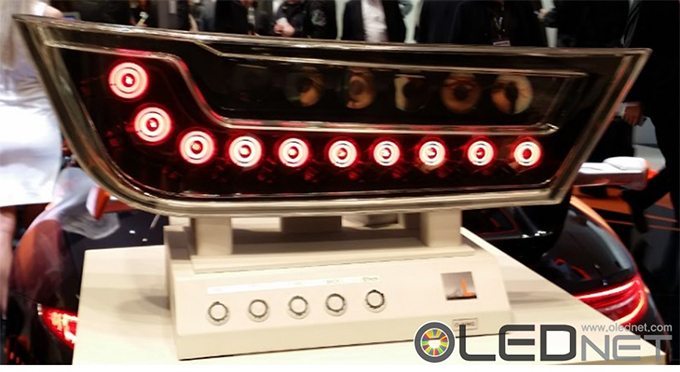
<OSRAM’s O-ring, OLED Product Applied Automotive Rear Lamp>
During the Lighting + Building 2016 exhibition (March 13-18) held in Frankfurt, Germany, OSRAM revealed that OLED rear lamp equipped cars will be on the road within 2-3 months.
OSRAM exhibited O-ring, OLED product applied to automotive rear lamp at this exhibition, and OLEDNET could see the fruit of OSRAM’s steady automotive lighting product development.
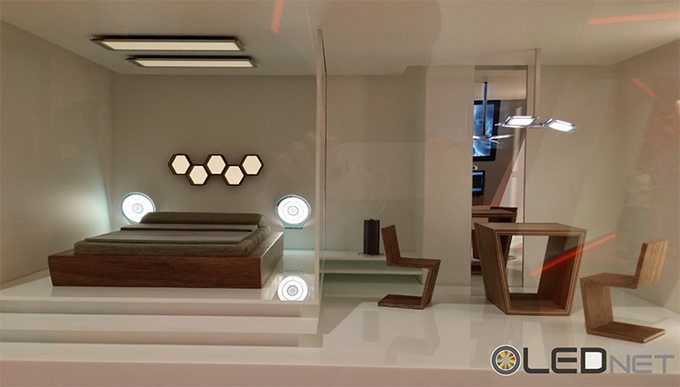
<General OLED Lighting Concept Suggested by OSRAM>
The OSRAM representative at the exhibition explained that OSRAM will continue their focus on automotive lighting and develop products but at the right moment, will enter the general lighting market. The representative added that although only the basic concept of the general lighting is present for now, further development will be carried out in future.
Hyunjoo-Kang, Reporter, OLEDNET

<LGD’s Flexible OLED Lighting>
OLEDNET visited Light + Building 2016 (March 13-18) held in Frankfurt where LG Display unveiled product line up that can be used to diverse applications such as flexible solution, luminaires, mirror solution, module solution, OLED panel products, and transparent connection solution.
During this exhibition, LGD demonstrated their well-deserved reputation as the world leading OLED lighting panel producer.
LGD presented diverse applications for OLED lighting that many people wanted to know. Although they were not directly displayed in the exhibition, the company showed photographs of OLED applied Korean traditional house hanok, as well as more commonly imagined uses such as cosmetic shop, office, show room, café, and restaurant.
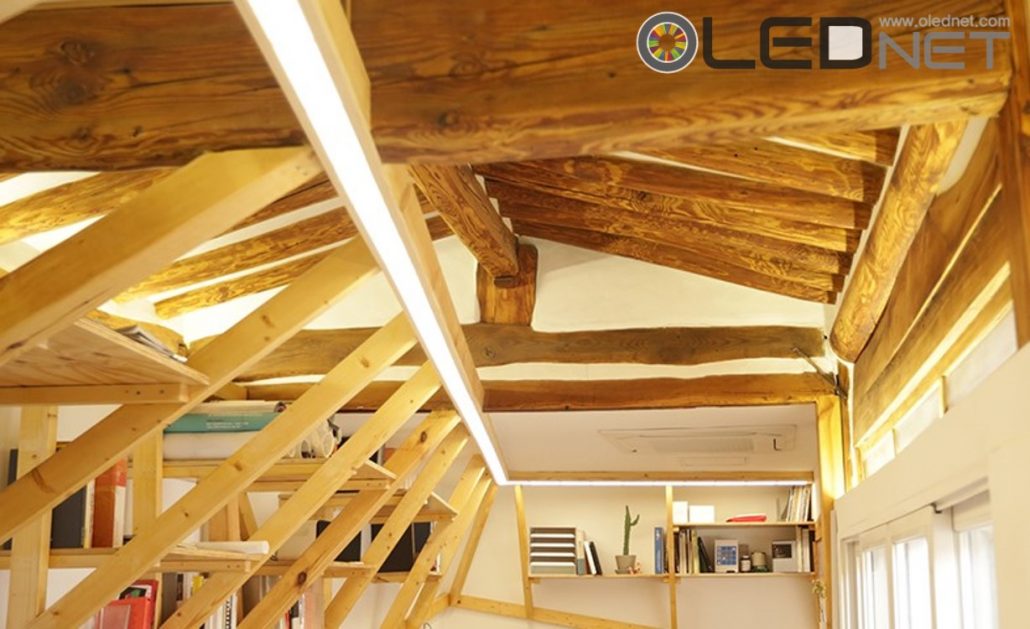
<LGD’s Flexible OLED Lighting>
Speaking to the foreign press who attended the exhibition, Joon Park, LGD’s Head of OLED Lighting Sales & Marketing Division, explained that if world’s first Gen5 OLED lighting (1,000 mm x 1,200 mm) investment is carried out and mass production is carried out in H1 2017, additional cost reduction is possible in comparison to before the investment. Park added that the current OLED lighting places more importance to the user experience rather than profit. As organic food is receiving positive response within the market as premium products, OLED lighting will play the role of organic food within the lighting market.
Hyun Joo Kang, Reporter, OLEDNET
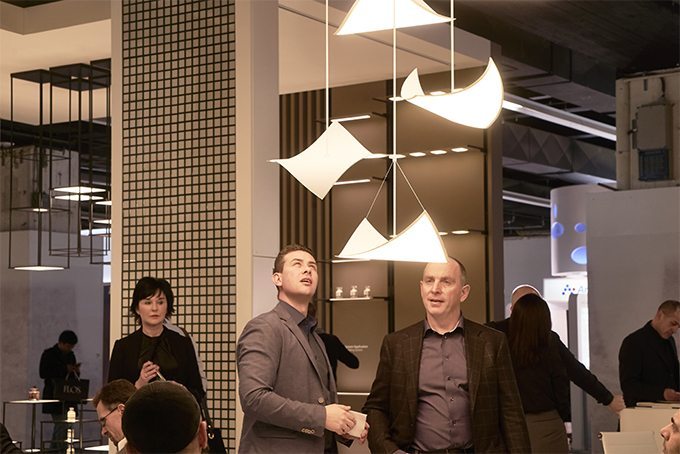
LGD is Showcasing it`s OLED Light products at Light+Building 2016(Source :LG Display)
LG Display announced today that it will invest in a new OLED light panel manufacturing facility.
The planned facility will be the first 5th generation (1000 x 1200mm) OLED light panel manufacturing plant in the world. It is to be located in the South Korean city of Gumi, where it will produce a range of OLED light panels. The initial input capacity at the plant will be 15,000 glass substrates per month.
The monthly input capacity could be gradually ramped up depending on the market situation. LG Display expects the increased production with the new facility to give the company economies-of-scale.
This will help the company obtain significant price competitiveness. In addition, the accumulated OLED display technical know-how will allow LG Display to considerably enhance OLED light product quality.
The 5th generation facility will give the company panel size flexibility. With the larger glass substrate, LG Display will be able to produce a wide range of different size light panels, including giant ones. Further, this ability to make giant panels will better enable the company to penetrate the general lighting market.
The investment decision follows the acquisition by LG Display of the OLED light business of its sister company, LG Chem in December, 2015. The plan for the new facility is in keeping with LG Display’s vision of bringing the exciting new OLED technology to customers around the world in the broadest array of applications.
The company will firstly focus on task lighting and decorative lighting in high-end retail stores and in luxury hospitality; and expand to the general lighting market going forward.
Also, the company will focus on automotive and convergence applications such as OLED light panels merged with furniture, architectural materials, electronic devices and more.
Mr. Young Kwon Song, Senior Vice President and Head of Strategy & Marketing Group at LG Display, said, “Our OLED light business will further strengthen LG Display’s commitment to nurture OLED as the future growth engine. Based on LG Display’s strong track-record and know-how in OLED display business, we will create synergy with the OLED light business and maintain our strong position in the overall OLED industry going forward.”
LG’s OLED light experience began in 2000 with R&D into OLED materials at the Group’s chemicals affiliate, LG Chem, with production of OLED light panels beginning in 2012.
The acquisition last year of the OLED light panel manufacturing business by LG Display has been creating synergies with its production infrastructure and technology in OLED displays.
It allows the company to save costs through integrated purchasing and shared investments, increase productivity by drawing on the accumulated knowledge of the display business, and help improve production infrastructure and use of technology patents.
OLED light is made up of layers of organic materials which is self-illuminating and consumes less power and also emits lower heat than conventional lighting.
It is environmentally friendly and is closest to natural light. Due to its ability to be thin and flexible, it is suitable for different applications and venues and could create new markets for lighting.
According to UBI Research, a market research firm, the OLED light market is expected to grow rapidly from US$ 135 million in 2016 to US$ 1.6 billion in 2020.
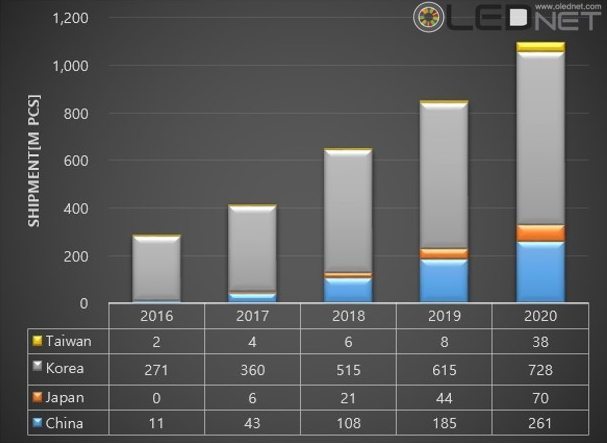
2016-2020 Global AMOLED Panel Market Shipment [1 Million] (source : UBI Research)
This year, Korea is expected to secure overwhelming leadership position within the global AMOLED panel market with 95% market share.
According to 2016 OLED Display Annual Report, recently published by UBI Research, approximately 270 million units of AMOLED panel are to be produced from Korea in 2016, approximately 95% of the global shipment.
For AMOLED panel market revenue, Korea is estimated to occupy 96% of the total market in 2016 with US$ 14,218 million. Korea is expected to maintain approximately over 70% of the market share until 2020, and lead the global market for several more years.
This is analyzed to be due to active response by Korean display companies against AMOLED application expansion by influential global smartphone companies.
Samsung Electronics is forecast to sell over 47 million units of AMOLED panel equipped Galaxy series in 2016. The projection that Apple will also apply AMOLED panel to future iPhone series for product differentiation is gaining traction.
Several companies, including LG Display and Samsung Display, are carrying out active investment for AMOLED panel mass production line from H1 2016.
Other than Korea, China is showing rapid movement within the global AMOLED market. China is estimated to produce approximately 11 million units of AMOLED panel in 2016, and occupy approximately 4% of the global shipment, marking the second place after Korea’s 95%. China is estimated to increase the market share each year and reduce the gap with Korea; in 2020, China is expected to hold 24% of global AMOLED panel shipment in 2020.
China’s AMOLED panel market revenue is also forecast to show significant growth with approximately US$ 500 million in 2016 to US$ 13,700 million in 2020, a 20% of the total market.
2016 OLED Display Annual Report forecasts that the global AMOLED market is to record approximately US$ 15,000 million in 2016, and grow to approximately US$ 70,000 million in 2020.
Hyun Joo Kang, Editor, OLEDNET
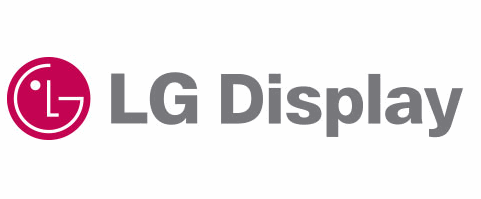
LG Display announced today that it is showcasing its latest advanced OLED light products and solutions at Light+Building 2016, one of the leading global trade fairs for lighting and building services technology, in Frankfurt, Germany, from March 13th to 18th.
Eleven OLED light panels are being exhibited along with four solutions using the panels. LG Display is highlighting the key advantages of OLED light, including the design flexibility that makes it suitable for different applications and venues, as well as its supreme light quality which is closest to natural light, thereby making people feel comfortable and reducing eye fatigue.
The company is exhibiting four solutions using OLED light panels:
Flexible Solution Section
The flexible OLEDs can be used to create unique and creative decorative lighting fixtures. The creativity in design increases along with the length of the panels. The flexible OLED light panels are light-weight and unshatterable. There are applications using 200x50mm flexible panels and 406x50mm flexible panels. The main highlight in this section is an application using many 320x320mm flexible panels.
Transparent Connection Solution Section
The LG Display OLED light panel generates a floating light effect by attaching the panel to glass and providing power through metal mesh transparent conductive film. It can be applied to display cabinets, shelves, and furniture. Especially when it is applied to shelves at stores, the lack of heat preserves product quality while the lack of shadow makes them more visually appealing to customers. The simplicity of OLEDs opens up the possibilities of various designs and applications.
Mirror Solution Section
By embedding the OLEDs into mirrors, LG Display has created a solution that can have a variety of uses. It can be used as a mirror in upscale hospitality settings or as a unique display box in high-end retail stores. When other light sources are used in a mirror solution, they tend to make the mirror too thick whereas OLED keeps the mirror thin and also minimizes glare.
Module Solution Section
OLED light panels allow for easy installation in diverse settings. LG Display is introducing super-slim OLED light modules at the fair with a simple aluminum housing that connects multiple panels into each module, generating unique and sleek designs. The company is showcasing the module solutions in order to demonstrate how well OLED light can be applied to interior design and architecture. It is committed to develop other solutions in order to encourage more and more people to easily use OLED lights.
UBI RESEARCH / CEO:Choong Hoon Yi / Business License Registration Number 220-87-44660
ADDRESS: A-1901, Samho Moolsan Bldg, 83, Nonhyeon-ro, Seocho-gu, Seoul, Republic of Korea (Zip) 06775 TEL:+82-2-577-4390 / E-MAIL:marketing@ubiresearch.com
